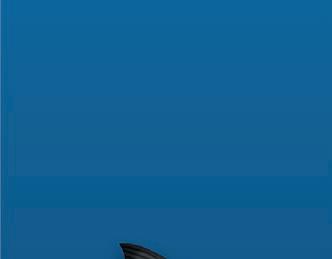F ish F armer

Ireland

The state of the industry




AQUA NOR

A look ahead to Trondheim
SHELLFISH Clamburgers, oysters and Brexit Sea lice and stress



Science has a solution





































































































































A look ahead to Trondheim



Science has a solution






























































































































WellFish Diagnostics won the inaugural best new start-up award, which has developed a potentially transformational service using blood biomarkers to monitor fish health, incorporating AI and achieving early commercial success.
Dr Lesley McEvoy of UHI Shetland, described by colleagues as a quiet but active champion of aquaculture, won the unsung hero award. As she retires, she is credited with inspiring many up-and-coming scientists, school pupils and husbandry staff in her role as an instructor, teacher, lecturer and supervisor.
ORGANIC Sea Harvest, the first new, independently owned salmon farm in Scotland for decades, was named best aquaculture company at the Aquaculture Awards 2023.
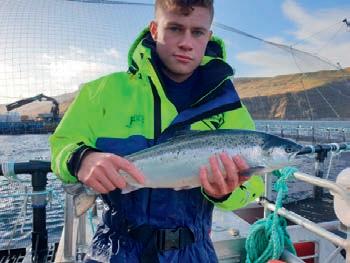
At the event, held on the evening of 15 June at the Macdonald Drumossie Hotel, a total of 13 prizes were awarded to companies and individuals who have made an exceptional contribution to aquaculture over the past year.
Organic Sea Harvest was singled out for its commitment to producing organic salmon on Skye, to growing the business and for making an impact in the communities in which it operates. The company also won the community award, in collaboration with aquafeed supplier Cargill, for their joint From the Sea to the Land community initiative, which has brought tangible benefits to local causes on Skye since its launch two years ago.
The rising star award went to Mowi’s Eleanor Lawrie, who has blazed a trail as the company’s first female deckhand. She hopes to inspire others into roles that aren’t traditionally for women.
The collaboration prize was awarded to Rare Earth Global and the Institute of Aquaculture at the University of Stirling for their trial validating hemp seeds as a viable novel ingredient in the diets of farmed salmon.

Australia’s Aqua Clean Tas won the innovation award for its Tassie


Devil Tracker 4000, the world’s first hydraulically powered mechanical ROV net cleaning machine.
Winner of the sustainability award was Selcoth Fisheries, a small family run business making big strides growing rainbow trout. The company has implemented a hydro-electric supply network, invested in humane stunning technology and a water filtration system, and delivered biodiversity and habitat improvement projects across its sites.
Cameron Jones of Mowi beat off tough competition to scoop this year’s farmer of the year award. The judges decided he stood out as Mowi’s youngest-ever manager and now its youngest area manager, showing leadership beyond his years.


The coveted animal welfare prize was awarded to steelhead trout producer Kames Fish Farming for introducing a brood stock programme with genetics experts Xelect and cryopreservation specialists Cryogenetics, resulting in a strain of trout tailored to its specific environment.



Tom Morrow Tarpaulins of Inverness was named supplier of the year. Serving the aquaculture sector industry for more than 25 years, the Tom Morrow team has provided sustainable and humane products to solve and manage the challenges faced by the sector, never missing a deadline and delivering for clients.
Another tireless advocate for aquaculture, Ronnie Soutar, who is Head of Veterinary Services at Scottish Sea Farms, won the outstanding contribution award, having earned the respect of his peers across the sector.

The judges’ special recognition award, created to acknowledge the efforts of a particular company or individual, went to World Feeds, which has made a significant difference to cleaner fish welfare with its innovative feed blocks.
Sponsors for the awards included SAIC, Fish Farmer magazine, MSD Animal Health, Ocean Kinetics, M&S Food, DSM, BioMar, Poseidon, Hendrix Genetics, Sølvtrans, Cargill, Stingray, the Institute of Aquaculture, Skills Development Scotland, Crown Estate Scotland and Marine Scotland.
Event Director Cheri Arvonio said: “The Aquaculture Awards celebrate the incredible talent, initiative and sheer hard work that make the sector so successful and we are proud, once again, to be able to honour the achievements of those who have made such a difference this year.”

22nd – 24th August
STAND A-115
In Benchmark Genetics our world leading geneticists work continuously to ensure our customers the best possible start to successful aquaculture production. Our innovations have resulted in breakthroughs and continued improvements on both survivability, disease resistance and growth.
With secure ova supply every week of the year, on the ground technical support and new projects focused directly on tailoring our genetic traits to local conditions, we are strongly committed to our customers and helping them to achieve their goals
Read more about our product line on bmkgenetics.com/products

Ben Perry
Sales and Technical Manager, GB and North Merica
Tel: +44 788 009 2017
E-mail: ben.perry@bmkgenetics.com
Harry Tziouvas
Global Sales and Technical Manager




Tel: +44 782 337 4568
E-mail: harry.tziouvas@bmkgenetics.com
bmkgenetics.com
LEADING Scottish salmon producer Bakkafrost Scotland renewed its sponsorship of community event the Lochcarron Highland Games for the fifth consecutive year.

Known as the Friendly Games, this year’s event, the 43rd in the series, was staged at Attadale Gardens in Wester Ross, Scotland on 15 July. People from all over the world came together to enjoy a traditional mixture of heavy events such as throwing the hammer and tossing the caber, along with track and field, Highland dancing and piping displays. the Lochcarron Highland Games is a community-driven initiative and through the sponsorship of the games the organisers have been able to support local community groups.

ScottiSH Sea Farms has been recognised at the M&S Select Farm Awards 2023 for a pioneering trial to encourage the settlement of seaweed in salmon pens, removing the need for plastic cleaner fish hides. the pilot, at Scallastle in the Sound of Mull, involved replacing artificial kelp hides with natural kelp, resulting in improved health and welfare for the cleaner fish and salmon.the award, announced at the Royal Highland Show at Ingliston in Edinburgh, was presented to Farm Manager Michael Keenan and Sam Wright, a fish husbandry colleague with a specialism in fish health, who oversaw the day-to-day running of the project.
EUAN McVicar has been appointed the new chair of Crown Estate Scotland, the public corporation tasked with managing seabed, coastline, commercial property and rural estates on behalf of Scottish ministers.

McVicar, who has been on the Crown Estate Scotland board since summer 2021, has been appointed by Scottish ministers for a three-year term, which started in early July following the current chair, Amanda Bryan, finishing at the end of June. He is an experienced energy, legal and
green investment professional and has worked in both the private and public sectors.
CONTROVERSIAL proposals to ban fisheries and aquaculture from a tenth of Scotland’s waters have been dropped in the face of widespread opposition.
Màiri McAllan, Scotland’s Net Zero Secretary, announced on 30 June that both the timetable – with implementation due to take place by 2026 – and scope, covering 10% of Scotland’s coastal waters, were no longer government policy.
The Scottish Government had published a consultation document last December, setting out plans for highly protected marine areas (HPMAs) in which virtually no form of commercial activity, including all forms of fishing, aquaculture or offshore renewable energy installations, would be permitted.
The proposals drew strong criticism from coastal communities, the fishing industry and the fish farming sector, and even from some Scottish National Party (SNP) members, including former Fisheries Minister Fergus Ewing.

Earlier in June, representatives of the industries affected formed a united front, the Sustainable Seafood Coalition, to campaign against the HPMA proposals. Organisations taking part included Salmon Scotland, the Scottish Fishermens’ Federation, Seafood Scotland, the Scottish Association of Fish Producers’ Organisations, the Community Fisheries Inshore Alliance and the Scottish Seafood Association.
Timing her announcement for the last day of the Scottish Parliament’s current sitting, Mairi McAllan said: “We chose to consult as early and widely as possible on the principles of HPMAs, with no pre-determined sites. It has always been, and continues to be, this government’s plan to work cooperatively with communities to identify how and where to enhance marine protection in a way that minimises impact and maximises opportunity. Therefore, while we remain firmly committed to the outcome of enhanced marine protection. The proposal as consulted on will not be progressed.”
She promised to outline more detail on the government’s proposed next steps after the summer recess, when responses to the consultation paper are also expected to be published. McAllan also confirmed that an ongoing programme of work to implement fisheries management measures in existing marine protection areas where they're yet to be introduced
and to protect some of the most vulnerable priority marine features outside of MPAs will be taken forward as a priority. She added that the Scottish Government will take more time to work with industry, communities and conservation organisations to enhance marine protection, while supporting any groups that wish to pursue community-led marine protection in their local area on a quicker timescale, such as those initiatives in Lamlash Bay on Arran and St Abbs and Eyemouth in Berwickshire.
An explicit commitment to introduce HPMAs covering 10% of Scottish waters was part of the Bute House Agreement, which forms the basis of the SNP government's coalition deal with the Scottish Greens, so this U-turn entails a potentially significant loss of political capital for the government.
Scottish Greens Coastal Communities spokesperson Ariane Burgess said, however, that she was pleased the minister had not only recommitted to marine protections but also to community-led input.
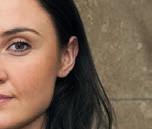
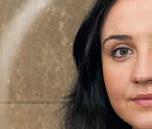
Burgess condemned opposition parties for “weaponising” the issue and said: “I hope all those I’ve been having discussions with in my region and all those at the heart of our coastal communities will take heart. I hope from today’s announcement that they build on the golden opportunity being presented.”
The Scottish Fishermen’s Federation said: “We welcome that the Scottish Government appears to have listened to businesses and communities and recognised that its policy on HPMAs covering at least 10% of our seas is flawed and should be scrapped.
“Ministers will now need to reassure people that they are not simply intent on introducing the same policy by the back door. The seafood sector has set out a clear pathway on how we can work with the government to strike the right balance between nature conservation and sustainable use, and the test for government now is to deliver on that."
Tavish Scott, Chief Executive of industry body Salmon Scotland commented: “HPMAs united coastal communities and MSPs are in total opposition, as they posed a risk of banning all human activity from vast swathes of Scotland’s coastline.
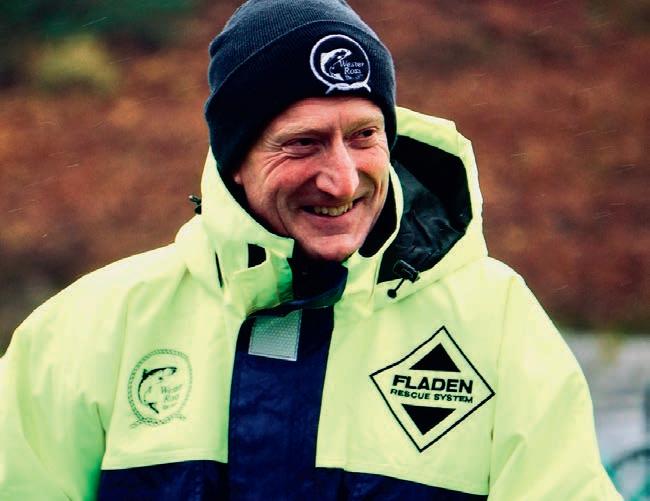


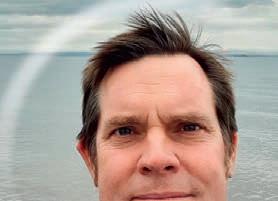




“We welcome the Scottish Government's confirmation that HPMAs, as currently conceived, will be scrapped. This decision comes as a massive relief to salmon farmers and others who were concerned about the impact on their jobs.

“I am grateful to all the MSPs who have spoken up

in support of our sector during these difficult months and to those who signed our petition outside Holyrood [recently].

“We commit to working with the Scottish Government to develop workable proposals that safeguard both livelihoods and the marine environment on which they rely.” A number of politicians have also welcomed the Scottish Government’s about-face. Alasdair Allan, SNP MSP for Na h-Eileanan an Iar (the Western Isles) said: “While most islanders fully recognise the need to protect the seas that surround them, there was a clear consensus that the approach set out in the HPMA consultation was too blunt a tool to address such a complex issue.
“I am grateful to the Cabinet Secretary and the First Minister for listening closely to the concerns expressed and for re-evaluating the Scottish Government’s approach."
Meanwhile, Calum Duncan, Head of Conservation Scotland at the Marine Conservation Society and Convener of the Marine Group at Scottish Environment LINK, the forum for Scotland’s voluntary environment community, gave the announcement a more cautious welcome. He said: “The evidence is absolutely clear that full protection of areas of our seas, like HPMAs, is an effective conservation tool, which in turn can benefit the fishing industry. This approach is well-established globally and in line with the EU’s target of 10% strict protection by 2030. It must be matched if we’re to have hope of reversing the ocean emergency.
“While the scientific case for better marine management is inarguable, it’s also essential that the implementation is well-managed and community voices are heard.
“The Cabinet Secretary’s commitment to build greater consensus across all stakeholders is welcome. There must be renewed commitment following the full analysis of all consultations. Our ocean needs action not words.
“What matters most is delivering ecological outcomes – and we must make progress urgently. It’s important that Scotland does not fall behind international standards.”
The UK Government has already introduced three HPMAs for the waters off England and Wales, but so far the initiative south of the border has been at too small a scale to attract significant opposition.
AN alarming new report has revealed increased sea warming around the British Isles and Ireland.
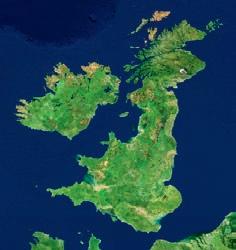
The findings by the European Space Agency suggest some of the most intense marine heat increases on the planet, up to 4ºC above expected temperatures for this time of year. So far, the salmon industry appears to see the warm temperatures as within acceptable risk parameters. Last summer, salmon companies in Scotland and Ireland blamed some of their biological problems on that year's record temperatures.
The Met Office says the reason is partly human-caused climate change. But other, lessunderstood factors also appear to be driving temperatures up.
Dr Lynne Falconer, a Research Fellow at the University of Stirling’s Institute of Aquaculture, commented: “I’ve been monitoring the satellite and buoy observations over the last weeks and there is now a severe marine heatwave event occurring in UK and Ireland.
“I haven’t seen an event of this scale before in these waters.This a clear departure from typical conditions and
A new owner is urgently being sought for Mara Seaweed, an award-winning Scottish seaweed harvesting and food products business.

Mara, which is headquartered in Glenrothes, Fife, has been placed into the hands of administrators Callum Carmichael and Chad Griffin, partners with FRP Advisory.
Founded in 2011 as Celtic Sea Spice Company, the business rebranded as Mara Seaweed in 2013 and pioneered the harvesting, processing and manufacture of a wide range of seaweed-based seasonings.
Mara Seaweed operated from a purposebuilt factory in Nasmyth Road, Glenrothes and sold to wholesale, trade, retail and direct to consumers. The company won a number of
Great Taste and food industry awards, and its products regularly featured on TV shows such as the Great British Bake Off.
Mara’s co-founders Fiona Houston and Xa Milne met in 2003 and developed a shared interested in foraging for seaweed and developing new recipes for it. They came to the conclusion that consumers would find seaweed – and its many health benefits – more appealing if it was sold in the form of seasoning rather than as a sea vegetable. The Celtic Sea Spice Company, founded in 2011, gave rise to the Mara Seaweed brand, launched in 2013 with Fiona Houston as SeaEO.
The company’s products have won a series of awards, including the Great Taste Awards

AQUACULTURED Seafood, the company behind the UK’s first land-based salmon farm, has submitted a formal planning application for its proposed site in Grimsby. The move means the £100m scheme, on England’s east coast in the centre of the country’s fish processing industry, is moving ahead on schedule.
The North East Lincolnshire Council planning committee should give its decision by September but the project is expected to go through.
The fish farm will create at least 100 jobs. With Young’s Seafood recently announcing the closure of one of its local factory sites, where 260 people are employed (see more on page 22), it means the Aquacultured development now takes on a new urgency for Grimsby’s seafood sector.
Last month, Aquacultured founder and director Neil Jamieson told Fish Farmer at a public consultation in the town that the company would be submitting a full planning application within weeks.
The application states that the proposal represents “a high-quality development and a substantial investment” for Grimsby. It adds that that the project will act as a catalyst for further developments, which should create additional new jobs.
in many ways, this is an unprecedented event for the area.The sea temperatures at fish farms will depend a lot on their location and the industry will be keeping a close eye on the temperatures over the next weeks and beyond.”
Dr Iain Berrill, Head of Technical at industry body Salmon Scotland said: “While some oceans and seas are reporting anomalous temperature spikes, temperatures in the west coast of Scotland and the Northern Isles are still within normal ranges for salmon.

“Our salmon farmers are carefully monitoring conditions on their farms and oxygenating the water where appropriate to provide optimal fish welfare.”
on numerous occasions and the Scotland Food and Drink Awards.
The administration was triggered by severe working capital issues following the withdrawal of funding for a committed expansion programme, in turn leading to unsustainable cash flow problems with administration being the only option.
BAKKAFROST Scotland produced an increased harvest during the second quarter of this year, a trading update from the company shows.
But Bakkafrost’s output from the Faroe Islands during the period was considerably lower, says the company.
In Q2 (April to June), Farming Scotland produced 7,300 tonnes against 6,600 tonnes in Q2 of last year, which is in line with
improving biological conditions at the Scottish operation.
The total is made up of 4,000 tonnes from the south of Scotland and 3,300 tonnes from the north of Scotland.
The Faroese total of 8,700 tonnes (against 13,100 tonnes for Q2 last year) is made up as follows: farming west 5,100 tonnes; farming south 1,900 tonnes; and farming north 1,300 tonnes.
All harvest volumes are provided as head-on gutted equivalents.
Bakkafrost said that feed sales in Q2 2023 were 30,200 tonnes. Havsbrún, the group’s feed subsidiary, sourced 147,900 tonnes of raw materials in Q2.
The full Q2 2023 report, including financial results, will be released on 22 August.






completion of its expansion of production capacity in operations in Zeeland in the Netherlands.
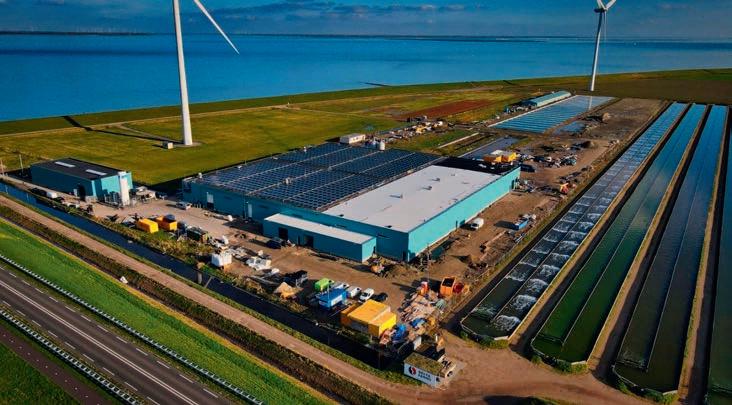
CEO Vincent Erenst said: “We are in the process of more than doubling our production capacity to meet the increasing demand for Dutch yellowtail.
“The proceeds from the convertible loan will provide full funding for the expansion until we reach positive cash flow from operations and sustainable profitability.”
LAND-based fish farmer the Kingfish Company announced it has successfully raised €32m (£27.3m) through a convertible loan. The funds will partly be used to complete the expansion of the group’s facility in the Netherlands.
The yellowtail kingfish producer said it had received significant support and interest from both existing shareholders and new investors participating in the loan issue.
Most of the convertible loan is allocated to existing key shareholders, while €11m (£9.4m) will be allocated to the sustainability-focused Ocean 14 Capital Fund on a number of key terms and conditions.
Ocean 14 is an impact fund investing in venture and growth companies and
technologies that offer sustainable solutions for the ocean.
According to the Kingfish Company: “The Ocean 14 team has over 25 years of aquaculture industry experience, including significant experience with recirculating aquaculture systems technology, further complementing the company’s list of reputable investors.”
The business, which is also building a large yellowtail farm on the US East Coast, said the net proceeds will be used to make the company’s operations cash-positive and finance
He added: “The new facility has been running very well since the start and we are proud to have increased biomass by more than 100 tonnes in just over one month’s time. This is a testament to the advanced design and the skills of our team.”
According to the revised project plan and timeline, the harvest volume from Zeeland will start to increase in the first quarter of 2024.
Steady state production is expected in the course of 2025. Estimated capital expenditure for phase two remains unchanged at €95m (£81m).
Top: Kingfish Zeeland building
Above: Vincent Erenst
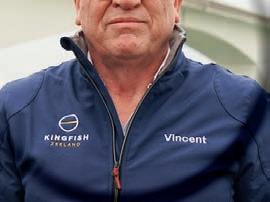
THE Norwegian government is planning to create an independent council to determine the price of salmon when calculating the new ground rent tax, it has emerged.
But the idea is being opposed by members of the country’s salmon industry, who say tax rates should be based on the actual price achieved rather than a figure arrived at by an outside body.
After months of tough negotiations, a new tax rate of 25% was voted in by the Norwegian parliament in May, much to the anger of the industry. The tax is backdated to January this year, although the industry will not start paying until 2024.
The government says it wants an independent council to determine the market value of traded farmed fish and it has set out its plan for consultation between now and early September.
Finance Minister Trygve Slagsvold Vedum said the scheme will simplify




the assessment process for both the aquaculture companies and tax authorities.
The price council is likely to consist of at least five members and will have to take into account differences in quality and fish size, and whether it has been sold at current or fixed (contract) prices.
But Seafood Norway (Sjømat Norge), which represents salmon companies, has come out strongly against the plan.
Geir Ove Ystmark, the CEO of Seafood Norway, said salmon was far from a uniform product, arguing that it should be taxed based on prices actually achieved.
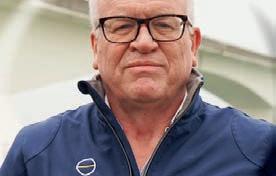
He said: “Sjømat Norge will thoroughly examine what the government has now proposed and will submit a more thorough response to the consultation over the summer.



“Salmon is a completely different product than a barrel of oil or a kilowatt hour. There are different sizes and qualities and production areas, but also different contract types and end markets. Fish of the same size and quality can fetch different prices in different markets. This shows that pricing is much more complex than in other industries.
“Sjømat Norge has therefore previously warned against the use of standard price advice and standard prices based on models from the oil industry.”
Ystmark added: “We must ensure that the companies do not have to pay tax on an income they have not had.”
He also said companies were concerned that the process will require significant administrative resources for both small and large businesses.
Top: Geir Ove Ystmark
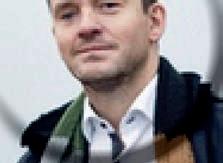
Above: Trygve Slagsvold

SEAGRICULTURE EU 2023, the leading conference for the seaweed industry, has been hailed as a resounding success.

The conference took place from 21 to 22 June 2023, bringing together industry professionals, researchers, policymakers and entrepreneurs from around the world.
Hosted in Trondheim, Norway, the event showcased the immense potential of seaweed as a sustainable resource and explored innovative solutions to address climate challenges.
With a record attendance of 221 delegates from 26 countries, there was an unprecedented level of participation at Seagriculture EU 2023. More than 130 companies and institutions from various sectors actively engaged in discussions, networking and knowledge sharing, highlighting the global interest in seaweed farming and its wideranging applications.
The conference featured an impressive line-up of keynote presentations, with five leading experts offering valuable insights into the latest developments and emerging trends in the industry.
Seagriculture EU 2023 is a catalyst for innovation, collaboration and knowledge exchange, the organisers said, paving the way for transformative advancements in the seaweed industry. By bringing together a diverse range of stakeholders, the conference has accelerated the adoption of sustainable practices, facilitated market growth and positioned seaweed as a key solution to global climate challenges.
The next Seagriculture conference will be Seagriculture USA 2023, which takes place from 6 to 7 September 2023 in Portland, Maine. Seagriculture EU 2024 will take place from 18 to 20 June 2024 in Tórshavn, Faroe Islands. Next year’s conference promises to be a unique experience, including an exclusive site visit to Faroes seaweed producer Ocean Rainforest on 18 June 2024.

For more information, visit seagriculture.eu

THE Lerøy Seafood Company reports that its second quarter harvest will be more than 3,000 tonnes lower than last year – and 7,000 tonnes down on the April to June period two years ago.

In a trading update, the volume of salmon and trout for Q2 2023 was 29,700 tonnes against 33,100 tonnes in Q2 2022, a fall of just over 10%. The total harvest for Q2 2021 was 36,700 tonnes.
The figures do not include volumes from Scottish Sea Farms, in which the company has a half share. They should become available in August.
Harvest volumes for the Norwegian regions are:
• Lerøy Aurora: 8,300 tonnes;
• Lerøy Midt: 10,000 tonnes; and





• Lerøy Sjøtroll: 11,400 tonnes, of which 3,700 tonnes was trout.

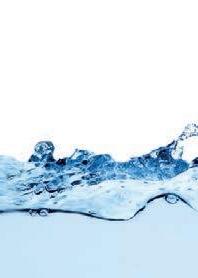
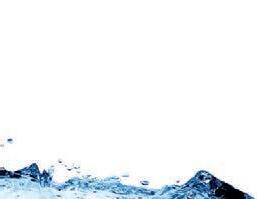
Earlier this year, Lerøy reported a 2023 26% higher first quarter turnover of NOK 989m (£72m).



CEO Henning Beltestad said at that time that he was still not satisfied with the performance from fish farming, adding that the company will be implementing a number of measures that he expected to yield results gradually.

Lerøy also owns one of Norway’s largest trawler fleets known as Lerøy Havfisk. The Q2 catch volumes totalled 23,700 tonnes, of which 3,700 tonnes was accounted for by cod.
This compares to a catch volume of 18,600 tonnes a year ago. However, Norway’s deep sea fishing fleets are facing a 20% reduction in cod quotas in the Barents Sea later this year.
The full 2023 Q2 report will be published on 23 August.







ALTERNATIVE protein producer Ÿnsect has appointed a new CEO, Shankar Krishnamoorthy, as part of a board reorganisation that means co-founder and former CEO Antoine Huber is stepping down to focus on innovation, science and impact. Seven new directors have also joined the board.

Ÿnsect raised €160m (£137m) in its series D funding round in April this year. The company transforms mealworms into high-end, highvalue ingredients for pets, aquafeed, plants and humans. It has several production sites around the world and is currently constructing the world’s largest vertical farm in Amiens, France.
A man has died following an explosion on a salmon farm feed barge in south-west Norway last month.
He was one of a number of people on the vessel at a Hofseth Aqua breeding facility at Stranda municipality on 23 June. The other people on the two-storey barge were not thought to have been hurt.
Hofseth said in a statement immediately following the incident that it had limited information, but it was working closely with emergency services and doing everything it could to help them.


The statement added: “The accident resulted in the loss of one of our talented colleagues. Our thoughts and deepest condolences go to the deceased’s family and our colleagues.

ICELANDIC salmon farmer Landeldi hf has rebranded as First Water hf. The company, which is building a thermal-heated land
fish farm in the south-west of Iceland, has also completed share capital financing to the tune of €82m (ISK 2.5bn or £70m). The production capacity of the first phase will be about 8,000 tonnes of salmon per year but the company’s plans aim for the total production to be about 50,000 tonnes eventually.
THE Nordic Council, which represents major salmon farming countries such as Norway, Iceland and the Faroe Islands, has produced a report urging people to eat more fish to help improve their health. The sixth edition of The Nordic Nutrition Recommendations is the biggest update in the report’s 40-year history.

The advice is clear when it comes to seafood: consume 300g to 450g of fish (cooked or ready to eat) each week. At least 200g should be oily fish, such as herring, mackerel and salmon.
“What caused the accident is currently unknown, but we have received a report of an explosion at the plant and that this has had fatal consequences. The police investigation is underway
to uncover the causes of the incident.
“The next of kin and our employees have our highest priority. We are actively working to handle the situation in the best possible way and offer all necessary support and assistance to relatives and our employees.”
Police are continuing their inquiries and the incident has been reported to the relevant accident investigation authorities.
Hofseth Aqua (Hofseth Aqua AS) describes itself as a fully integrated and experienced farmer with smolt, sea and slaughter operations within a two-hour distance of each other.

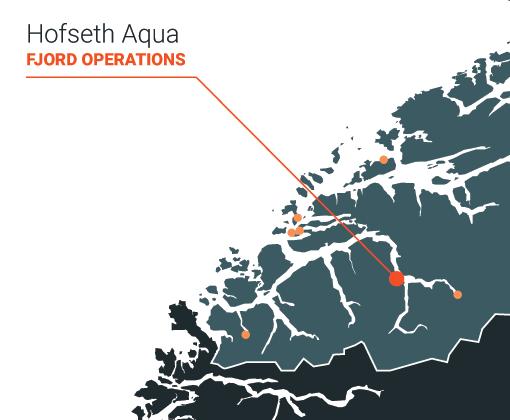
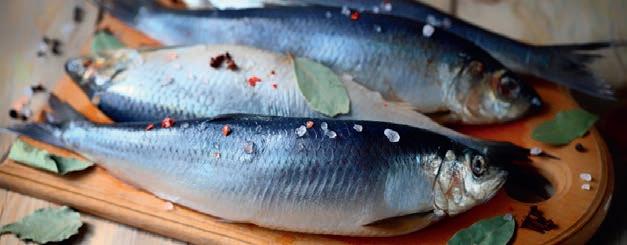
SALMON producer
Salfjord has been given the green light for a land-based farm in the Nordmøre region in western Norway. Møre og Romsdal county council granted the permit for a maximum 21,000 tonnes of standing biomass. The farm will be sited at the Tjeldbergodden industry park in the Aure municipality. The permit is equivalent to 27 licences for conventional fish farming in the sea, with an annual output of 36,500 tonnes of head-on gutted salmon or up to 500,000 salmon meals per day throughout the year.
It also allows the production of 30 million smolt per year, which provides great flexibility for the company’s plans.
The new farm will operate a hybrid flow-through system, similar to that adopted by Salmon Evolution for its own site.
Salfjord is now working to secure additional strategic and industrial investors to implement a new share issue in 2023.
Co-founder and CEO Hans Ramsvik said: “We’ve worked purposefully on this for a long time and are very pleased that the permit is now in place.
“We’re now looking forward to a dialogue in finding the right partners and exploring financing models. Attention in future will concentrate on building the organisation, risk management and speeding up design work.”
The estimated price tag for the completed plant, fully developed, is NOK 7bn to 7.5bn (£513m to £550m).
Salfjord will work closely with recirculating aquaculture systems specialist Artec Aqua, which has developed similar technology for Salmon Evolution.







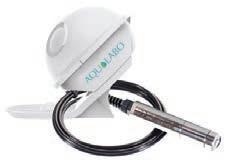

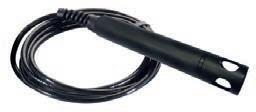












SALMON producer Cermaq has said it is now pressing ahead with the fourth version of its iFarm project in Vesterålen, Nordland County in Norway. It is the same location where version two was carried out.
iFarm is a concept based on artificial intelligence and machine learning, with state-of-the-art monitoring technology.
awarded four development licences for the iFarm project.
In testing the first version of iFarm, Cermaq and BioSort were keen to establish an understanding of how iFarm affects fish behaviour and gain basic learning about the iFarm construction.
LAND -based fish farmer Salmon Evolution has signed contracts for the design and development of phase two of its hybrid flowthrough facility at Indre Harøy, Norway.
The first selected contractor is Artec Aqua, a leading supplier for land-based aquaculture. The company had previously conducted design, construction and commissioning phase one at Indre Harøy, and will be leading on design, construction and commissioning of the process facility. The second selected contractor is HENT, one of Norway’s largest general contractors, which will take responsibility for civil design and construction of phase two.
The second phase, when completed, will add another 7,900 tonnes head-on gutted (HOG) in annual production, bringing the total planned production volume up to 15,800 tonnes HOG per annum.
Salmon Evolution CEO Trond Håkon SchaugPettersen said: “We have now been producing salmon for almost 15 months at Indre Harøy and are already on our sixth generation. Throughout this period, we have seen strong biological performance and although we have also had challenges, we have demonstrated that we are capable of handling demanding situations effectively.
“We firmly believe that our highly scalable concept will play an important role in future aquaculture, delivering high-quality salmon at conventional industry cost levels.

“We are confident that this structure will deliver the best of both worlds, having contracted leading experts for the civil construction and the process facility, which we expect will ensure delivery on quality, time and cost.”
Salmon Evolution has already started with the initial groundwork, which will continue over the coming months alongside project design. The project cost is currently estimated at NOK 1.6bn to 1.7bn. As reported recently, Salmon Evolution has secured debt and equity financing for the project, which is subject to a final investment decision by Salmon Evolution on completion of the project design phase, expected towards the end of 2023.
Artec Aqua is a wholly owned subsidiary of Norwegian industrial group Endúr ASA. Ingegjerd Eidsvik, Chief Executive Officer of Artec Aqua, said: “Overall, the results at Indre Harøy have been excellent.”
The company said the reason for the iFarm’s long overdue development process has been to allow time for experiences and learning along the way to contribute to improvements for the next phase.
The aim is for the project to be able to test out an improved version of iFarm in each phase.
Cermaq’s operations manager in Vesterålen, Sten Viggo Hansen, said: “It is exciting to be involved in innovation and technology development.We know that this fourth version has a number of changes compared to the second version we also ran, so it will be interesting to see how it will be operated this time.”
The team at Cermaq believes that by using artificial intelligence and machine learning, it can identify each individual fish in a cage and give it its own follow-up and health record.The iFarm project, which will develop individual-based aquaculture, is planned to last five years.
The current project is a collaboration between Cermaq and the technology company BioSort. Cermaq has been
In the fourth version of iFarm, the project will focus mostly on operational and feed factor improvements in machine learning, and on how equipment in the barn performs. At the same time, Cermaq and BioSort will test thirdgeneration sorters.
Cermaq’s iFarm project manager for Karl Fredrik Ottem said: “This fourth postponement is actually one more postponement than what was set up in the original project plan, where three postponements and three versions of iFarm were taken into account.
“In relation to the goals set for the project, we are on track. However, we have had some operational challenges.”
GRIEG Seafood has had to face the proespect of slaughtering thousands of fish after infectious salmon anaemia (ISA) was confirmed at one of its sites.
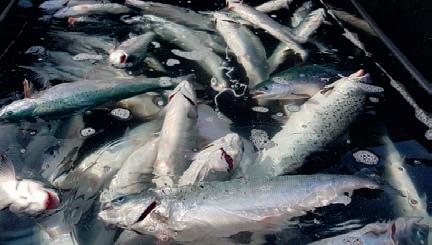
This was at least the sixth or seventh case of ISA or suspected ISA along the Norwegian coastline in June. Incidents have been running at one every four to five days. So far, the Norwegian Food Safety Authority has not commented on the figures, but the numbers appear to be higher than normal.
Most of the problems are either in Vestland county or Rogaland, which have become the two hardest hit regions.
In the Grieg case, the first indication of ISA came in mid-May at Hundaneset in the Hjelmeland region, north of Stavanger.
The Åkerblå fish health service notified the Norwegian Food Safety Authority of findings compatible with ISA, which have since been confirmed.
The fish, however, are of slaughter or near slaughter size, so the financial loss is not thought to be severe. ISA is not harmful to humans.
The first suspected outbreak in June occurred at the beginning of the month in Vestland County, where three companies farm in the area.The disease was later confirmed at two of those locations.
Then Mowi reported problems at its Vestland farm at Trommo in Kvinnherad municipality, following analysis carried out by the firm PatoGen.
A week or two later the Åkerblå fish health service notified the Norwegian Food Safety Authority of suspected outbreaks at Tysnes municipality, again in Vestland, where four smaller firms have operations.
In other incidents, ISA is suspected at Skorpo in Vestland, where four firms operate,and at Hidlekjerringa in Strand municipality, where Seashore Sjo has a site.
A further case was reported at Øygarden municipality in Vestland county, where Erko Seafood, Blom Fish Farming and Landøy Fish Farming are based.

AN aquafeed vessel has recently completed a 160 nautical mile fully autonomous voyage to an offshore fish farm in Norway.
The Eidsvaag Pioner supply ship is one of two craft specially equipped with a range of Kongsberg Maritime technologies with a remote operation systems as part of Autoship, a fouryear project funded by the European Union’s Horizon 2020 research programme.

The 13-hour voyage involved the autonomous departure of the Eidsvaag Pioner from the port of Averøy, followed by a remotely controlled round voyage to the fish farm off Norway’s north-west coast near Kristiansund.
The Eidsvaag Pioner not only undocked automatically, but sailed out of the harbour autonomously, before manoeuvring into open sea.
The ship took a route between several islands, avoiding other sea traffic, before delivering fish feed to Ocean Farm 1, owned by Salmar, one of the world’s largest producers of farmed salmon.
The autonomous trial, which involved the University of Strathclyde, was initiated, managed and monitored by personnel at Kongsberg’s Remote Operating Centre in Ålesund. Various manoeuvres were undertaken using Kongsberg technology and cloud-based communications systems.
They included auto-undocking, autodocking, dynamic positioning, situational awareness, autonomous navigation, the use of Kongsberg’s Intelligent Machinery System, Connectivity and Cyber Security System,
and the real-life operation of the company’s remote operating centre.
Geir Håøy, Kongsberg CEO, said: “This was an opportunity to show the world that remote and autonomous technologies can be successfully deployed on a general cargo vessel, carrying out a range of operational aspects of a typical voyage.”
He added: “There has been great collaboration between all partners in the Autoship project. We have all been impressed with how the Eidsvaag Pioner performed under remote control and during autonomous sailing and docking.
“We have demonstrated a range of the key enabling technologies that will lead the way towards routine remote and autonomous operation in the years ahead.”
The North Sea project involved collaboration between Kongsberg personnel, Eidsvaag AS, the Norwegian research organisation Sintef and the University of Strathclyde.
NORWEGIAN land-based fish farmer Andfjord Salmon has boosted its balance sheet by the equivalent of £45m.
The company announced it has allocated 15,974,026 offer shares through a private placement at a subscription price of NOK 38.50 per share, raising gross proceeds of approximately NOK 615m (£45m).
Earlier this month, Andfjord Salmon announced debt financing totalling NOK 825m (£60m) for the development of its new land farm project at Kvalnes.

In a late Oslo Stock Exchange announcement, the company said the following primary insiders were allocated offer shares at the offer price:
* Jerónimo Martins AgroAlimentar, SA, represented on the board of directors by Antonio Serrano, was allocated 10,000,000 offer shares;
* Eidsfjord Sjøfarm AS, represented on the board of directors by Knut
Holmøy, was allocated 2,077,922 offer shares; and
* Andfjord Holding AS, represented on the board of directors by Roy Bernt Pettersen, was allocated 244,155 offer shares.
Andfjord Salmon said the net proceeds from the private placement will be used to expand its production capacity at Kvalnes and for general corporate purposes.
The announcement added: “The board is of the opinion that it is in the common interest of the company and its shareholders to raise equity through the private issue.
“The private issue enables the company to secure equity financing to expand the company’s production capacity at Kvalnes, shortly after securing commitments for bank financing.
“Furthermore, the directed issue involves reduced execution and execution risk, and gives the company the opportunity to exploit
current market conditions and raise capital more quickly at a lower discount compared to a rights issue and without guarantee commissions as is normally seen with rights issues.”
ABG Sundal Collier ASA, Arctic Securities and SpareBank 1 Markets are acting as joint bookrunners in connection with the private placement.
Located on the island of Andøya on the Arctic Archipelago of Vesterålen, Andfjord Salmon uses a
flow-through system to farm salmon on land and says its first batch has shown good biological results.
Last week, Andfjord announced it had entered a strategic partnership with fish handling technology business Cflow. Martin Rasmussen, CEO of Andfjord Salmon, said: “Through this collaboration, we will merge our expertise in land-based aquaculture with Cflow’s technology, enabling safe and sustainable production processes for live fish.”
In Jordan, the authorities insisted that all fresh seafood had to be in the country no later than 48 hours after it had been slaughtered but that obstacle has now been scrapped.
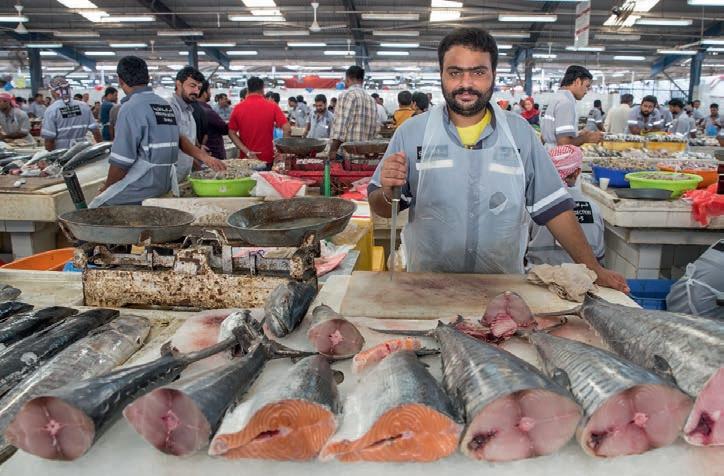
“We’re still waiting for an official confirmation, but the country’s authorities have verbally informed the importers that the rule has been removed,” said Ørjan Kjærvik Olsen. He also said that getting approval as a seafood exporter to Saudi Arabia has been a complicated process.
But after a number of inputs to the Saudi authorities and with help from the embassy in Riyadh and the Norwegian Food Safety Authority, the application process has now become easier.
NORWAY has negotiated a series of rule changes to make it easier for its salmon industry to export to three Middle Eastern countries.
Working with the Food Safety Authority and Norwegian embassies in Israel, Jordan and Saudi Arabia, Norway’s government has been able to improve market access and remove some of the earlier regulatory barriers.
The rule changes mainly concern agreeing a longer shelf life for fresh salmon, which greatly simplifies the export process.
The development was described by Seafood Council spokesperson Ørjan Kjærvik Olsen, who works in the Middle East, as a victory for exporters.
Most markets operate with a shelf life for salmon of at least 14 days. In Israel, however, the shelf life for fresh salmon is set at only seven days.
For Norwegian exporters, this rule had been a major obstacle to developing the market, according to Maria GE Barroso at the salmon producer Seaborn.
She explains that delays due to bad weather or logistics and transport have meant that the salmon has been returned or destroyed and tonnes of fresh and fine salmon had gone straight into the bin.
This was unsustainable and had resulted in large financial losses, she added.
He explained: “We have created a much more comprehensible registration form. The filling-out process is still cumbersome, but nowhere near as difficult to handle as before.
“We will continue to work on further simplifications, but so far we are quite satisfied that the whole process has become more predictable.”
There have also been signals from Saudi Arabia about possible changes to the durability regulations. According to the rules, the shelf life for fresh salmon is only nine days.
Now Norwegian salmon exporters who work with Saudi Arabia say that it has been expanded to 14 days, although this had yet to be confirmed by the Saudi authorities.
NORWAY and Vietnam have entered into a new cooperation deal to develop marine aquaculture.
Norway’s credentials in fish farming are already wellknown, but Vietnam has also become a leading exporter of aquaculture products, notably whitefish such as pangasius to the UK and Europe.
The cooperation deal was strengthened at a recent seminar in the city of Nha Trang.
Hilde Solbakken, Norway’s ambassador to Vietnam, told attendees of the seminar that co-operation on fishing-related issues went back almost 40 years, but things were now moving faster.
Norway currently has several aquaculture companies operating in Vietnam, helping to provide various technology-related solutions.
Tran Dinh Luan, head of the Vietnam Fisheries Department, said that with both countries having a long coastline, they have many similarities and common interests.
Studying Norway’s experience and lessons of success would provide ideas to help Vietnam solve current difficulties as well as implement appropriate policies to develop stronger and more sustainable mariculture, he said.
Vietnam has set out a new seven-year strategy plan for developing its marine aquaculture sector, which includes an even longer-term vision up to 2045.

The aim is to create a safe and sustainable environmentally friendly industry, creating branded products that meet the needs of both foreign and domestic customers.
Tran Dinh Luan said the plan would also look at reducing exploitation and increasing aquaculture as a policy to help balance human needs with the conservation of marine resources and sustainable development.
By shifting to offshore farming, developing fish farming on an industrial scale towards export and improving would increase the quality and value of Vietnam’s aquatic sector, he added.


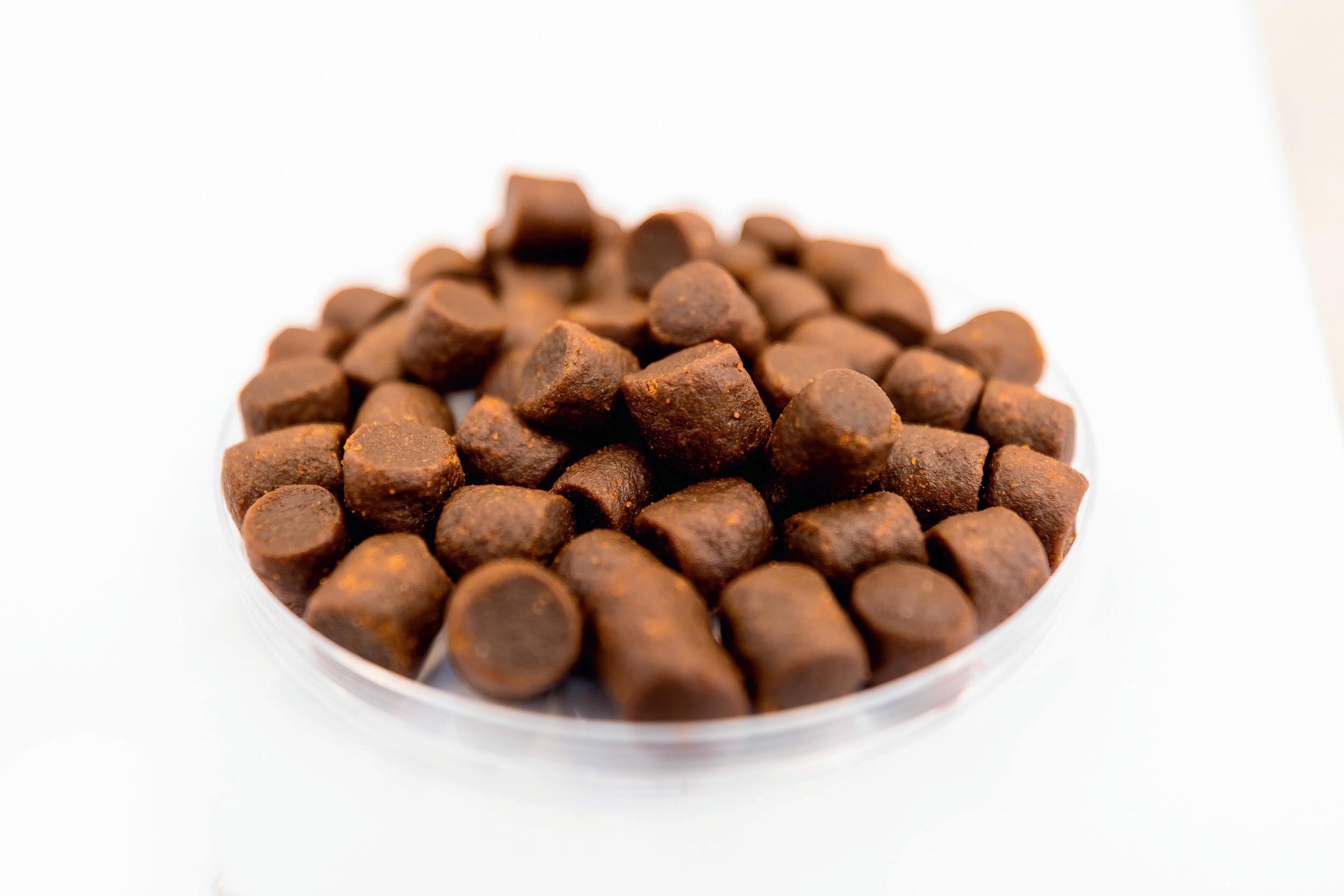
Mowi’s feed mill in Kyleakin on the Isle of Skye produces feed for salmon and trout at all lifecycle stages and for fresh and seawater environments.
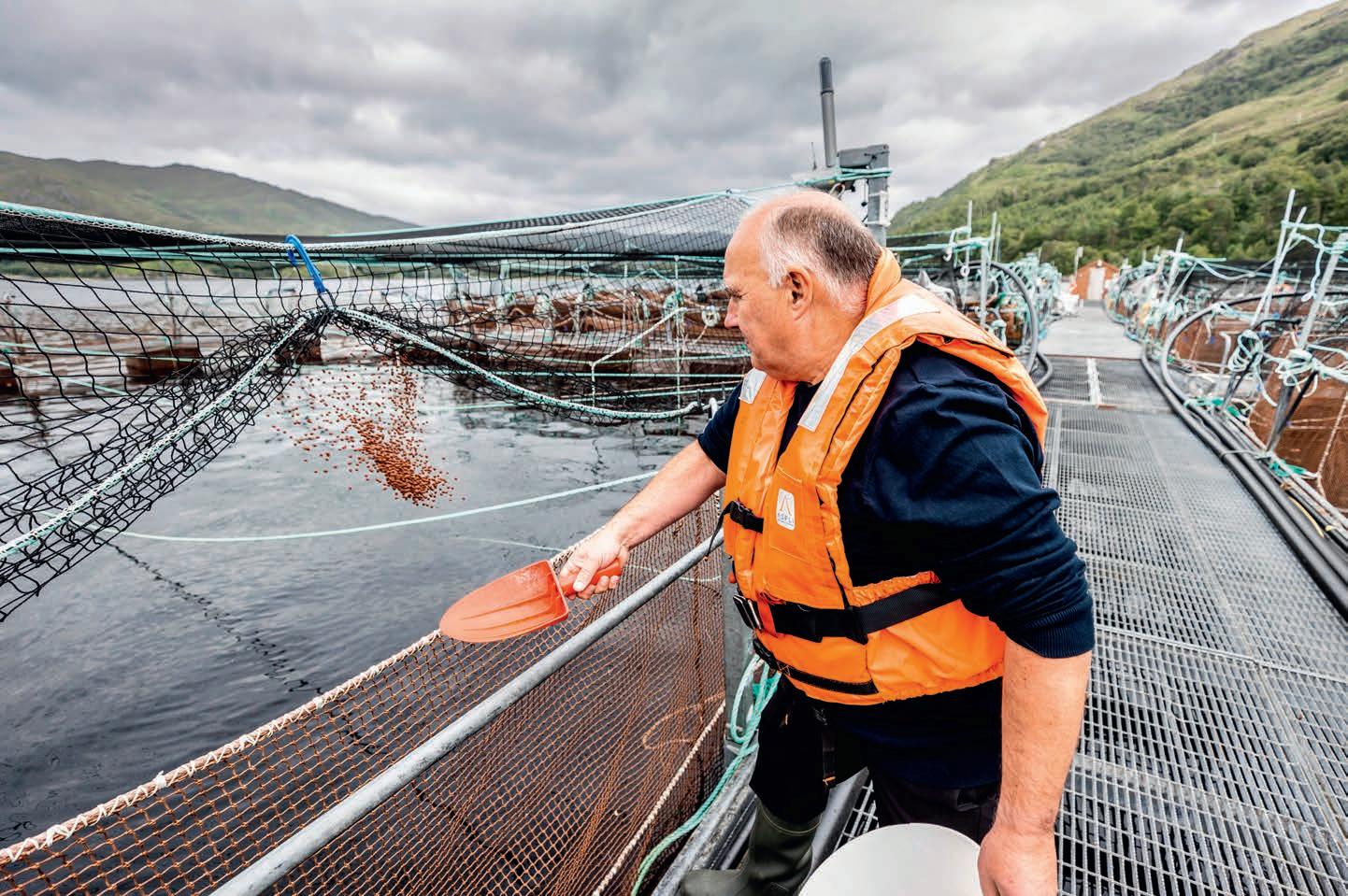
R&D is central to everything we do at Mowi Feed and ongoing field trials inform our approach to optimising raw materials, growth rates and animal robustness.
We have a robust policy on sustainability and all ingredients used in fish feed are traceable. Mowi also holds certifications for feed production according to the GlobalGAP CFM, Label Rouge and organic (Naturland and Soil Association) standards and we are already working towards gaining accreditation to the forthcoming ASC Fish Feed Standard. Mowi is regularly audited by many of the major European retailers and comply with the quality standards prescribed by a wide diversity of retail outlets.

We offer bulk deliveries using our own vessels and we can deliver in bags by sea or road transport.





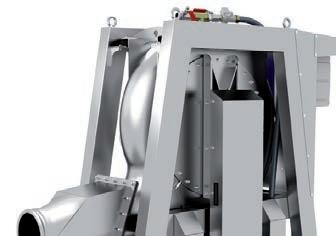
To find out more contact:
kyleakinfeedsales@mowi.com








+44 7817 099 334




www.mowi.com/sustainability/mowi-feed

THE United States government agency responsible for fisheries policy is to identify areas along the Alaskan coast that might be suitable for future aquaculture development.
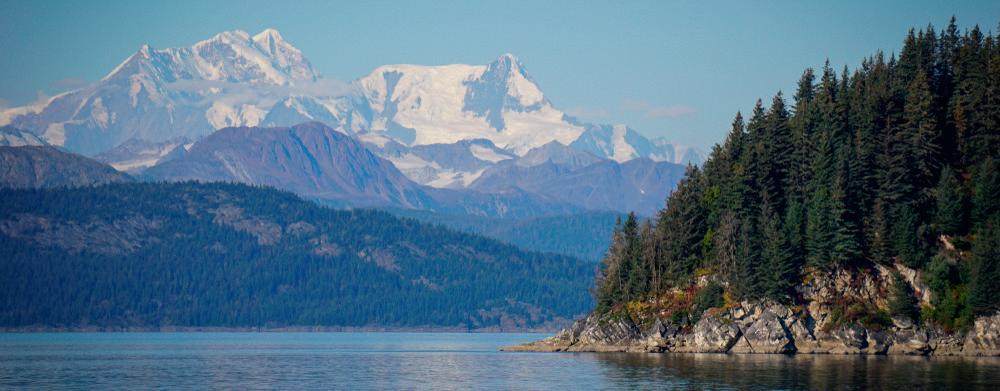
The National Oceanic and Atmospheric Administration (NOAA) said possible locations will be selected through engagement with indigenous tribes and the general public.
An Aquaculture Opportunity Area is a defined geographic region that has been evaluated to determine its potential suitability for commercial aquaculture.
NOAA said it plans to use a “combination of scientific analysis and public engagement to identify areas that are environmentally, socially and economically appropriate for commercial aquaculture”.
The organisation says it has directives to preserve ocean sustainability and facilitate domestic aquaculture in the US through the National Aquaculture Act of 1980, the NOAA Marine Aquaculture Policy and an executive order from two years ago “promoting American seafood competitiveness and economic growth”.
NOAA also has a variety of proven science-based tools and strategies that can support these directives, it says, helping communities to consider how and where to develop offshore aquaculture sustainably that will complement wild-capture fisheries, working waterfronts and the country’s seafood processing and distribution infrastructure. The latest move means Alaska will join southern California and the Gulf of Mexico as the third region where possible aquaculture opportunity areas are being identified.
NOAA Fisheries Assistant Administrator Janet Coit said: “With more coastline than all the lower 48 states combined, Alaska is uniquely positioned to benefit from a growing marine aquaculture industry.”
The US is a huge importer of seafood, including farmed fish, and its government is trying to improve the situation by developing homebased industries.
However, aquaculture projects, particularly on the US east coast, have often run into strong opposition from various protest groups.
THE Canadian Aquaculture Industry Alliance (CAIA) has sent an open letter calling on Prime Minister Justin Trudeau to curb the activities of his controversial Fisheries Minister, Joyce Murray.
The CAIA has attacked what it describes as the “uncertainty, confusion and lack of due process caused by Minister of Fisheries and Oceans (DFO) Canada, the Honourable Joyce Murray, through her active disregard of her departmental science advisory process as it relates to the future of the BC salmon farming sector”.
It warns: “If continued, these actions have the serious potential to further undermine economic activity of all resource sectors in Canada and damage the trust of Canadians in government science.”
The CAIA asks Trudeau how “…any resource-based business can operate in Canada with the uncertainty and lack of due process being established by Murray, through her active disregard of her departmental science advisory process”.

CAIA President and CEO Timothy Kennedy says in the letter: “The minister is circumventing the government’s own principles of evidence-based policy and undermining this Liberal government’s promises of indigenous reconciliation and clean economic growth.
“The prime minister trusts Agriculture Canada and Canadian Food Inspection Agency scientists daily to ensure that Canada’s food is safe.
“He trusts Environment Canada scientists on climate change. The DFO science process for aquaculture was reviewed several years ago by an eminent international advisory group with the chief science advisor to the prime minister and found to be fundamentally sound.
“Why is the DFO minister choosing science linked to activists with a pre-set agenda?” Kennedy asks.
Murray is shortly expected to present options for the BC salmon farm transition framework to the Federal cabinet, says the association.
It maintains government decisions have already shut down 40% of salmon farms in BC since 2020, with a devastating impact on indigenous and coastal communities.
“It has also made groceries more expensive for Canadian families, increasing carbon emissions and wiping out jobs that are the lifeblood of rural, coastal and indigenous communities,” says the letter.
SALMON farming is helping to drive the Tasmanian economy, according to a report from consultants Deloitte.
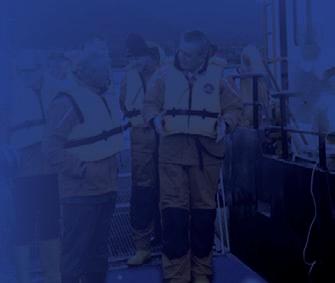
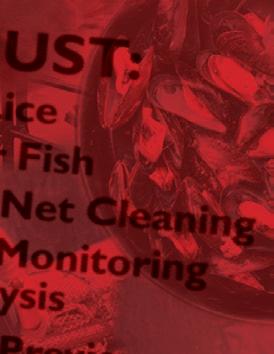
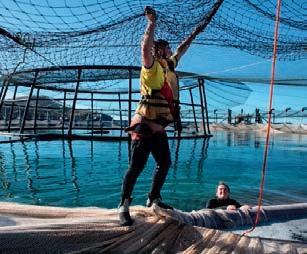
The report was commissioned by the Australian island state’s salmon industry, representing major producers such as Tassal, Huon Salmon and Petuna.
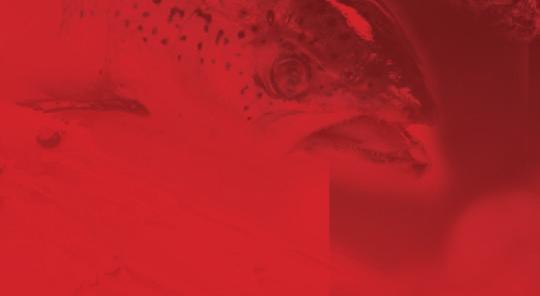
It says the industry generated over AUD $770m (£606m) in 2022 alone, supporting more than 5,100 jobs.

Salmon Tasmania CEO Luke Martin said that almost 90% of this economic activity occurred in regional communities such as the Huon Valley, Latrobe,Tasman and West Coast areas.
The report is the first comprehensive assessment of the industry’s economic and social impact in Tasmania.
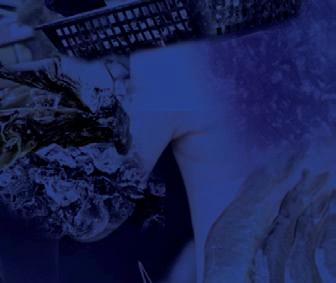
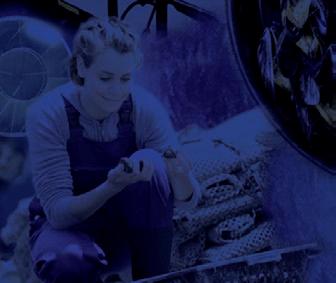
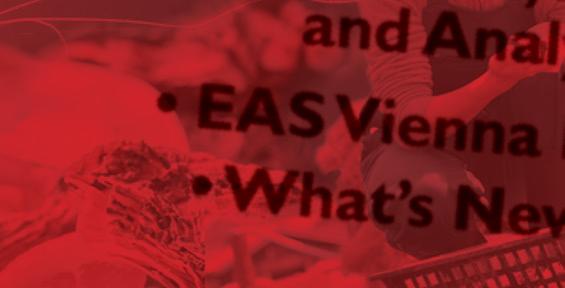




The report has been welcomed by Jo Palmer, Minister for Primary Industries and Water. She said that the state government would back the sector, which is “economically successful, environmentally responsible, socially beneficial and wellmanaged”.
Opposition Primary Industries and Water Spokeswoman Janie Finlay said that the report showed the industry shouldn’t be taken for granted. She accused the Liberal Government of creating a salmon plan that has caused “great uncertainty and angst for both industry and community”.
However, Peter George, President of Neighbours of Fish Farming, said the report ignored the majority of people in Tasmania, who wanted to see coastal inshore salmon farming ended.
FOLLOWING the successful World Aquaculture Conference in Darwin, Australia (May 2023), the focus is now onto the upcoming second annual International Conference and Exposition of the African Chapter of the World Aquaculture Society (AFRAQ2023) to be held in Lusaka, Zambia from 13 to 16 November 2023.
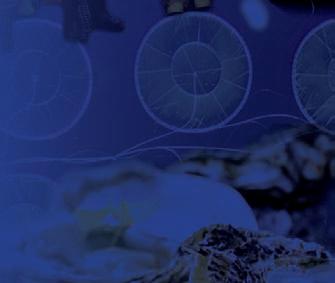


Delegates from around the world are expected to converge in Zambia to celebrate achievements on all aspects of aquaculture development in Africa, but also to find solutions to some of the challenges hampering the growth of the sector and to explore new opportunities. AFRAQ2023 will offer numerous educational, networking and collaboration opportunities.


Zambia has recently launched its Fisheries and Aquaculture Policy 2022-2026, which sets out the expectation that the aquaculture sub-sector will contribute significantly to food and nutrition security, employment creation and
foreign earnings through fish exports.
The country has stepped up its efforts to create an enabling environment for private sector investments and is implementing a number of strategic public-private sector project activities to enhance and strengthen the aquaculture value chains. Consequently, a number of aquafarms – small, medium or large scale – continue to flourish in the country.
An aquaculture tour is being organised to Siavonga, Lake Kariba, where a number of medium- to large-scale aquaculture enterprises are based.

Aller Aqua is the Gold Sponsor of AFRAQ2023.

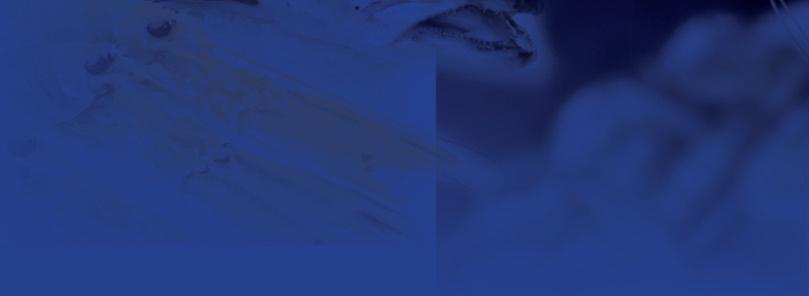
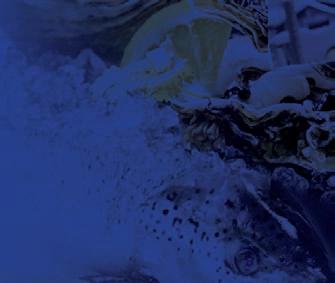

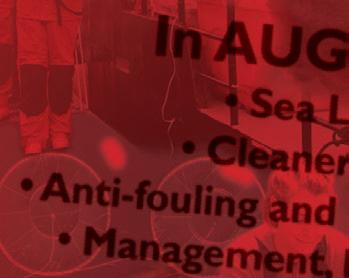




For further information, see was.org/meeting/code/AFRAQ23.


• Facilitating and promoting international trade. Seafish says it wants to support businesses to achieve frictionless seafood trade with suppliers and markets globally.
• Responding to the climate change emergency. Over the next five years, Seafish will work to place the seafood sector on a clear path to achieve its emissions targets. Seafish also wants to ensure businesses understand how they’ll need to adapt to the impacts of a changing climate.
• Improving fisheries management. Seafish’s ambition is that over the next 10 years, all commercial fisheries will be managed via Fisheries Management Plans.
UK industry body Seafish has launched its new five-year corporate plan for the sector. It includes making overseas trade easier, ensuring a safer and better trained workforce and responding to climate change emergency.
Seafish, which is publicly owned, says it’s a strategic roadmap that reflects the organisation’s vision for a thriving seafood sector, its ambition to drive the industry forward and foster sustainability, resilience and prosperity.
The 2023 to 2028 corporate plan was developed following a strategic review of Seafish that involved extensive consultation and collaboration with government and stakeholders from the seafood industry.
Marcus Coleman, CEO, said: “Our new corporate plan demonstrates our ongoing commitment to support the UK seafood industry.
“Consultation with industry and government stakeholders has been instrumental in shaping our new priorities. By working together, we can ensure that our initiatives are directly informed by the aspirations of the seafood industry.”
Seafish says the strategy aims to help the industry to address current challenges, such as labour shortages, the climate emergency and post-Brexit trade issues as well as reputational challenges the sector faces.
These events have a direct impact on all seafood businesses and will influence industry’s performance over the next five years and beyond, it argues.
These are the main priorities.
• Ensuring a safe and skilled workforce.
Seafish wants the UK seafood sector recognised as a dynamic, safe and attractive sector to work.
• Enabling supply chain resilience. Seafish aims to equip businesses to respond and adapt, highlighting where change is necessary and creating pre-competitive spaces for businesses to find solutions and opportunities.
• Improving data, insight and innovation. Seafish’s ambition is to become the centre for analysis and insight on the operation and performance of the supply chain.
• Championing industry reputation. Seafish aims to support the industry to tell a positive story about seafood.
AROUND 285 jobs at a Young’s Seafood production site in Grimsby could be at risk.
The company said that its factory in Marsden Road in the town is no longer financially sustainable. It’s looking at moving operations to a larger factory elsewhere in Grimsby and to Fraserburgh in Scotland.
Young’s said in a statement to the local Grimsby Telegraph news site: “Following changes in future demands for products produced at our Marsden Road site, the company has explored a number of options to try and maintain production at the site from October 2023.
“It is with regret that we have been unable to find any viable solutions and therefore are announcing the proposal to move the remaining whitefish processing undertaken
at the Marsden Road site to the Humberstone Road site in Grimsby and the smoked processing to their Fraserburgh site in Scotland.”
The statement added: “As a result of these proposed changes, Sofina Foods Europe is sadly proposing to cease production at the Marsden Road site in Grimsby from October 2023. We have taken this decision as producing the remaining whitefish contracts at Marsden Road would no longer be financially sustainable.”
The company said it is now starting a formal consultation process with staff at the Marsden Road site.
Young’s is the UK’s largest seafood producer and, with a workforce of more than 1,700 people, the largest private employer in the town of Grimsby.
In 2018, Young’s closed its salmon factory in Annan, Scotland with the loss of 450 jobs and moved that production to Grimsby.

A year later, it cut around 50 jobs at its Macrae site in Livingston, West Lothian, but this latest announcement is the first to affect its main Grimsby location for many years.
Over the last few months, a number of reports suggest that inflation is hitting seafood sales in the UK, especially at the upper end of the market.
“Seafish aims to equip businesses to respond and adapt ”
A revised version of the Global Seafood Alliance (GSA) Processing Standard has been released for public consultation.
Seafood Processing Standard (SPS) Issue 6.0 has been restructured to include a core set of requirements for all processing plants, with separate modules to accommodate production processes that may not occur at every processing facility. With this new format, facilities are assessed to all clauses that fall within the core of the SPS, as well as any modules that fall within the scope of the seafood processing production at that facility.
The 60-day public comment period ends on 27 August.
The GSA said the proposed new design and implementation of the Seafood Processing Standard will offer the same robust assurances, while at the same time providing an improved audit process for all stakeholders.

Specifically, the revised format is expected to enhance overall audit efficiency for plants under assessment, improve applicability for wild-capture seafood processors, provide clearer clause language with corresponding interpretation guidance and create the most customised, comprehensive certification option available for seafood processing plants globally.
SEAFOOD processing technology business Maritech has installed a smart monitoring system at a UA/Samherji processing plant in Iceland.
The Maritech Eye automates the quality assessment, documentation and sorting of salmon or whitefish at industrial speed with an objective eye.
Maritech said that when the company has gained operational experience with integrating the first system, the plan is to extend the delivery to cover UA/Samherji’s total processing operations.
The modules include:
• ready-to-eat products;
• outsourcing;
• animal welfare;
• effluent discharge;
• product identity;
• low-acid canned foods;
• an environmental module for remote wild-capture processors; and
• finished product testing.
Chris Weeks, Vice-President of Program Integrity, said: “We are excited to present SPS 6.0 to our global partners and stakeholders. Issue 6.0 incorporates innovative features that offer customised third-party certification audits to the individual scope of both aquaculture and wild-caught seafood processing plants.
“When combined with the Enhanced Social Standard, SPS 6.0 embodies a robust supply chain assurance programme designed for alignment to internationally recognised global food safety and social benchmark initiatives.”
Sunneva Ósk Guðmundsdóttir, Production Manager with UA, said: “For the last months, we have been developing, with Maritech, a system that focuses on finding the main defects in fillets: blood spots, nematodes, gaping, black lining and shape deviations. The objective has been to identify the fillets that require no trimming and thus can go directly to portioning. This gives considerably more yield in production and reduces the manual workload for pre-trimming.”

Konrad Hatlemark Olavsson, Maritech Iceland, added: “UA/Samherji has led the way in this project the whole time and has been pioneering the commercial utilisation of this technology in whitefish processing. We are grateful for their cooperation and we are confident we can make a great difference and create considerable value for Samherji.”
WHITEFISH farming company
Norcod is buying a slaughterhouse business, Kråkøy in Norway.
The exact purchase price hasn’t been disclosed, but it’s likely to total several million kroner and is
being paid for partly in shares and partly in cash.
The news came just a week after Norcod set out a longterm business strategy for near sevenfold growth.
The company’s annual report said that Norcod is experiencing increasing demand for year-round stable deliveries of fresh cod.
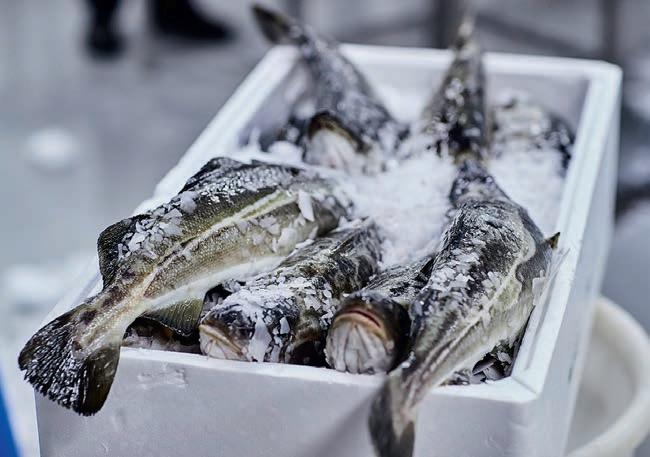
Norcod told the Oslo Stock Exchange it has entered into an agreement to purchase 100% of the shares in Kråkøy Slakteri AS and TN Kråkøy Eiendom AS.
The statement went on: “Kråkøy Slakteri had NOK 63m (£46m) in revenues in 2022 and delivered an EBIT (operating profit) of around 5%, which will add to Norcod’s free cash flow going forward.
“The transaction is expected to create operational synergies and enable cost-efficient operations in Norcod’s value chain. The transaction involves 53 full-time employees at Kråkøy Slakteri AS.”
Norcod CEO Christian Riber added: “Led by our strategy for growth, this vertical integration
of our value chain is a strategic step to improve our operations and create a robust and streamlined business model.”
Roger Sørgård, CEO of Kråkøy said: “Being part of Norcod will accelerate our growth ambitions and enable our efforts to scale our offering. Joining forces with Norcod is an acknowledgment of the success we have had serving the local market with harvesting services.”
According to the Oslo Stock Exchange announcement, the purchase price will be settled partly in cash and partly in consideration shares in Norcod. The number of consideration shares to be issued will be 577,639 at a subscription price of NOK 36 per share, which is equal to the trading price the last day prior to signing off the share purchase agreement.
As the summer holidays get underway, Salmon Scotland Chief Executive Tavish Scott explains why visits to salmon farms are an important part of promoting the sector
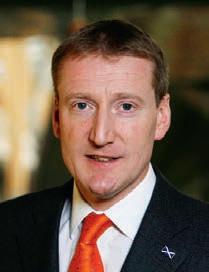
With the summer holidays in full swing, many people will be enjoying Scotland’s beautiful coastline. When the sun’s out, there’s no better place to be. One person we hope will spend some time in the Highlands and Islands over the coming months is Mairi McAllan, a Scottish Government Cabinet Secretary.
Just before the Scottish Parliament broke for the summer, she announced that controversial plans for highly protected marine areas (HPMAs) have been shelved – and the Scottish Government will consult further with the industry, communities and conservation organisations.

HPMAs divided coastal communities, MSPs and the five local authorities across the Highlands and Islands. HPMAs would have banned all human activity from vast swathes of Scotland’s coastline. So we welcome the announcement, which comes as a massive relief to salmon farmers and others who were concerned about the impact on their jobs.
I’m grateful to all the MSPs who have spoken up to support our sector and to those who signed our Seafood Alliance petition outside Holyrood last month.
We’re fully committed to working with the Scottish Government to develop workable proposals that safeguard both livelihoods and the marine environment on which they rely.
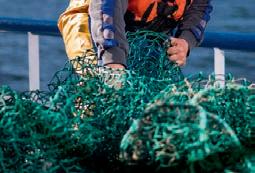
As part of that, Ms McAllan has promised to tour Scotland’s coastal communities, which stand to lose the most should the idea of HPMAs be resurrected.
If she’s able to make it out on a salmon farm – and I’m sure there would be no shortage of companies willing to host her – Ms McAllan would see for herself the skill and care that goes into rearing the country’s most popular fish and the UK’s biggest food export.


She would see how salmon farms already coexist with marine protected areas (MPAs) and how scientific modelling of the marine environment is used in site selection, ensuring we have a minimal impact on the marine environment in which we farm.
Our salmon farmers have the privilege of getting to work on Scotland’s waters throughout the year. At this time of year, there truly is no better or more beautiful place to work than on a salmon farm.
Already this year, hundreds of people have had the opportunity to visit a salmon farm to see for themselves what goes on.
Salmon farmers are constantly welcoming MPs and MSPs, community and local authority councillors, regulators and government officials, independent animal welfare inspectors, school groups, customers, chefs and journalists to their sites.


There’s no better way to understand salmon farming than to don the lifejacket and ask questions of the committed men and women who look after their animals on a daily basis.

This has to be done in a structured way, however – not because we have anything to hide, but because, like any working farm or workplace, there are health and safety hazards, which require visits to be supervised.




You wouldn’t be allowed to wander around a power station, factory or really any workplace unaccompanied and our farms are no different.
Unauthorised visits to fish farms can place employees and the animals they care for at risk and subject them to unnecessary stress.
They also risk ignoring company-specific health, safety and animal welfare and the biosecurity procedures required of them.
There’s no better way to understand salmon farming than to don the lifejacket and ask questions
And, of course, members of the public don’t know when there are farm-specific issues that need even stricter measures to maintain the health of our livestock.
Salmon farmers work hard to mitigate the risks to their own people and visitors follow procedure at all times. Special personal protective equipment is required by law and other measures are taken to disinfect footwear to reduce the risk of introducing infection to our fish.
Salmon farms are located in dynamic marine environments – the sea - which are subject to rapid shifts in weather conditions as well as changing tides and wave states. These conditions are great for rearing salmon, but they present potential safety hazards for the uninitiated and unaccompanied.
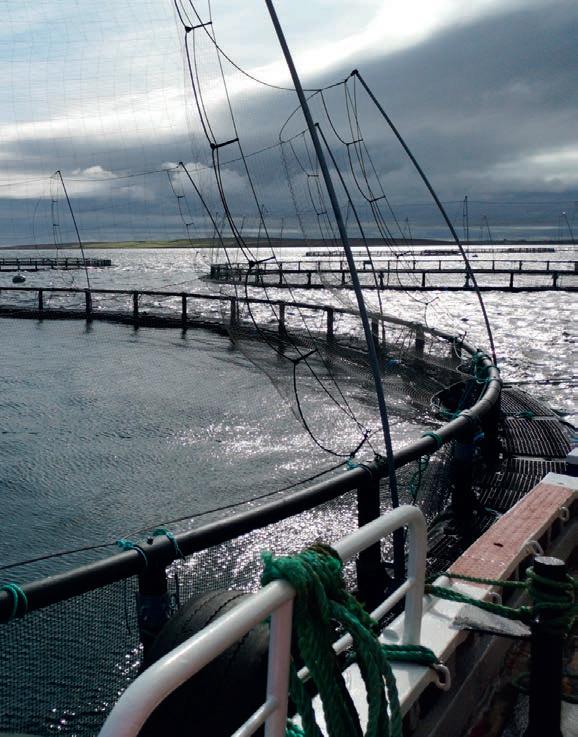
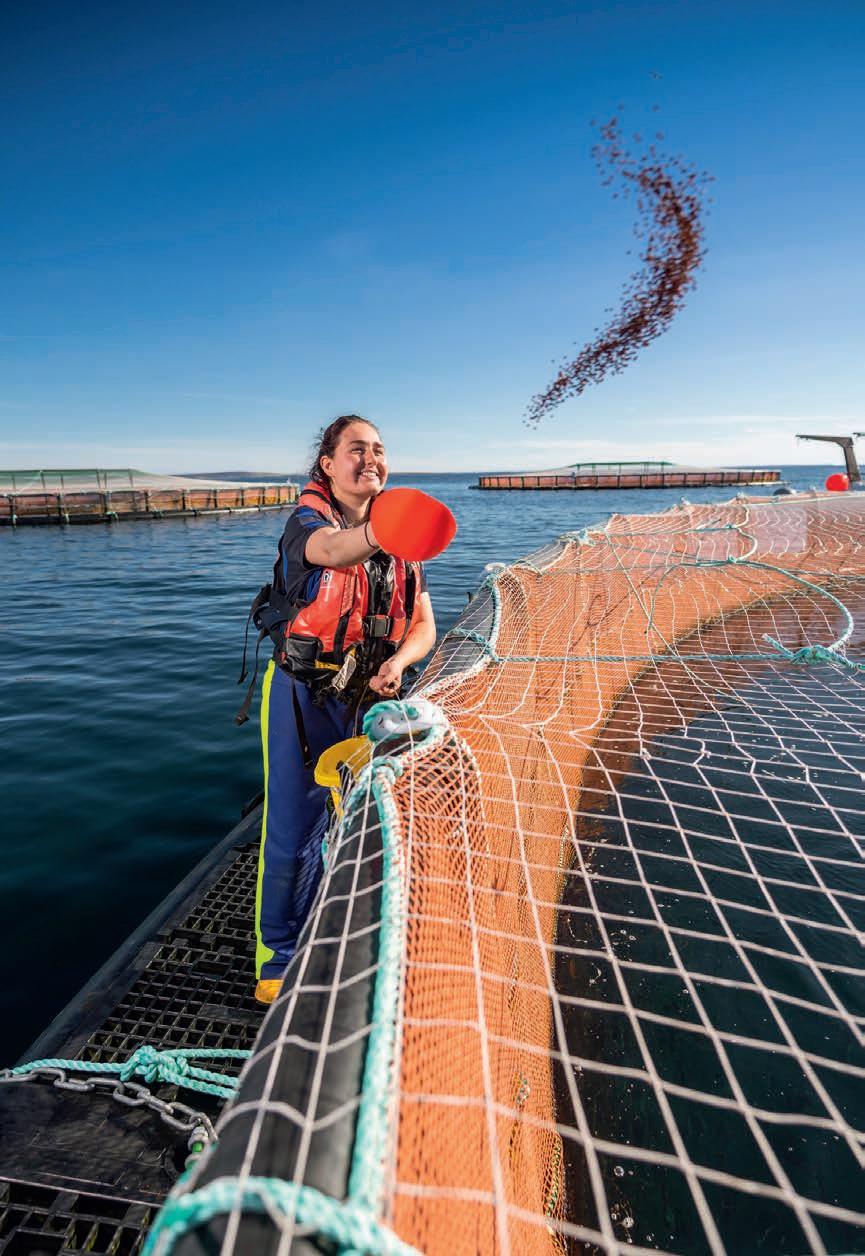
We understand the genuine curiosity that surrounds fish farms – it’s probably the case that more people have climbed Everest than visited a salmon farm.
According to the Royal Life Saving Society, 46% of accidental drownings last year happened in the three summer months of June, July and August, and this year there have already been high-profile reports of drowning at sea and in freshwater lochs across the country.
While there have been reports of higher seawater temperatures and what this might mean for wild and farm-raised salmon, the water is still relatively cool. Cold-water shock and hypothermia can still catch people out.
For several years, Salmon Scotland has run a water safety campaign to explain the risks of getting too close to salmon farms, as well as general advice such as cold water shock.


Scotland has a growing marine leisure sector, which continues to bounce back from the lockdowns of 2020 and 2021, attracting domestic and international visitors to our waters. The marine infrastructure continues to expand to support this growth, often with pontoons and jetties funded by the local salmon farming company.
We want people to be safe and enjoy Scotland’s coastal waters responsibly. So whether you’re on a cruising yacht, a kayak, diving or wild swimming, we ask you to maintain a distance of 15m from the perimeter. In other words, to stay outside the buoys that moor our salmon farms to the seabed.
Most farmers manage visits to their land and sea-based facilities yearround and, if contacted in advance, most will be able to accommodate an arranged visit.
Visitors can then see for themselves what goes on at a salmon farm and ask any questions they want. The consistent feedback from people hosting these visits is that everybody leaves a salmon farm better informed and with a better impression of our sector than when they arrived. So the more we can get people out onto our farms and get their feet wet, the more we’ll win folks round to the benefits of aquaculture.
Whatever your plans are this summer, I hope you stay safe, enjoy the weather and have the opportunity to visit a salmon farm to find out more about what we’re doing.
To read the HPMAs report, turn to page 8.



France Naissain, a leading company in premium oyster seed production, has underlined its commitment to the environment as a priority. The company says: “We are committed to preserving and protecting our marine ecosystem by adopting sustainable practices at every stage of our oyster farming operations.
“We strive to minimise our environmental impact and reduce our carbon footprint.


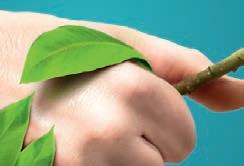
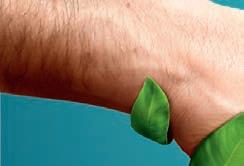


With this aim in mind, we invest in research and development to find energy-efficient solutions for oyster production.
“We believe it is imperative to preserve our planet for future generations.” www.francenaissain.com/en/
An infestation of invasive zebra mussels has been linked with sightings of a blue-green algal bloom on the surface of Lough Neagh, a freshwater lake in Northern Ireland. The Agri-Food and Biosciences Institute (AFBI) has been monitoring the Lough and has found much higher than normal surface temperatures (21C as opposed to a typical June average of 15C). As well as warming waters, however, Lough Neagh is also becoming clearer – because, says the AFBI, the growing population of zebra mussels is feeding by filtering particles from the water. This is not only depriving native shellfish species of their natural food source, but also allowing sunlight to penetrate deeper than usual into the Lough – and this, the AFBI says, can lead to increased nuisance plant and algal growth.
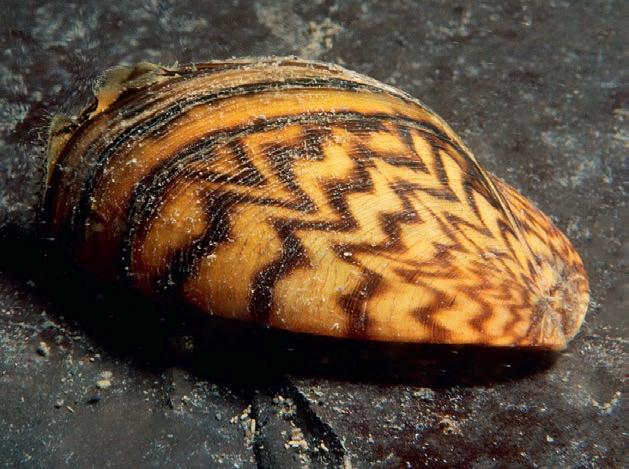
JFC Marine specialises in manufacturing a comprehensive range of navigation aids for the safe marking of aquaculture farms. Their range includes navigation buoys, lanterns, and marker post sleeves. The marker sleeves offer a high visibility, costeffective solution for marking aquaculture farms. Crafted from UV stabilised polyethylene, these sleeves with an internal diameter of 63mm effortlessly slide over existing poles, eliminating the need for expensive painting maintenance on beacon structures. With a built-in standard lantern flange, integrating lanterns into the operator’s navigation system is hassle-free. JFC Marine marker sleeves are available in various colours and feature top marks that adhere to IALA guidelines, delivering optimal marking solutions for aquaculture sites. Pictured right is the JFC Marine Navigation Post Sleeves jfcmarine.com
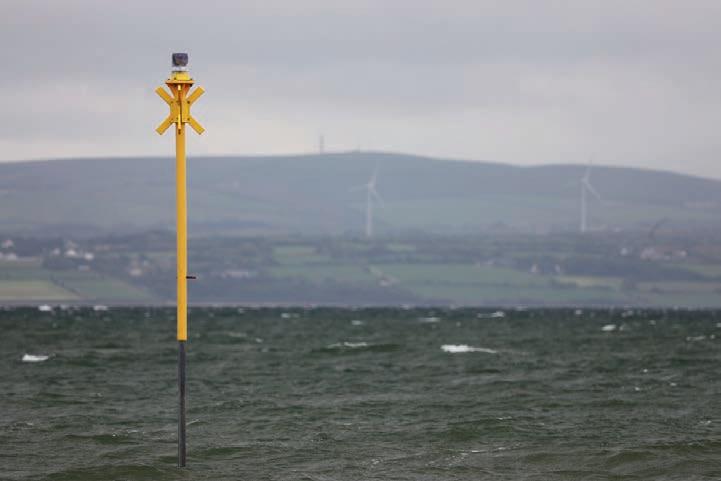
Native oyster restoration projects are becoming increasingly
innovative, as two examples from the US and UK demonstrate
Bivalve molluscs are an important indicator of ocean health, but they can also actively help to restore ecosystems by filtering seawater and providing an environment – and food – for other species.
Native oyster restoration projects around the world have set out to reverse the trend of collapsing oyster populations, and one example in the USA has made use of an innovative solar energy application to help with this process.
In 2017 the Chesapeake Bay Foundation began a project aimed at restoring native oysters in the river estuary and throughout the Chesapeake Bay. The target is to add 10 billion oysters in the bay by 2025.
First, a 1.1-acre man-made reef was constructed near Fort Carroll, a Civil War-era fortification on the Patapsco River near Baltimore, Maryland. As in so many coastal areas the native oyster population had been massively reduced by pollution and overfishing.
Chunks of granite were used as a bed for the reef. Tons of old oyster shell were piled on top of the stone. On each shell was attached an average of 12 juvenile oyster “spat” barely visible to the eye.
Three-quarters of the young oysters survived their first winter and more are being added each year. More recently the scale of restoration has increased, thanks to use of innovative and clean technology to increase the production of juvenile oysters, using a solar-powered system.
Solar Oysters LLC is a joint venture Solar Oysters is a partnership of Maritime Applied Physics Corporation (MAPC) and EcoLogix Group, Inc..
In partnership with the Chesapeake Bay Foundation (CBF) and with funding from the Abell Foundation, Solar Oysters has developed a way to grow spat for the restoration projection faster and more efficiently, using the clean energy.
The first batch of oysters grown using the new system was placed on the reef late last year and the second went in at the end of last month.
The Solar Oyster Production System (SOPS) is a solar-powered platform located in Baltimore Harbour. While survival rates on oyster farms can vary drastically, survival rates of over 90% have been observed

This technology has the potential to shift the oyster aquaculture industry
consistently on SOPS, the company says.
The SOPS is an innovative technology that uses clean energy via roof-mounted solar panels to power rotation of oyster cages. By rotating vertically through the water column, oysters have access to more abundant food sources and exposure to sunlight when out of the water for periods of time to reduce fouling.

The current compact design can produce up to 250,000 oysters in a 0.02-acre space compared to multiple acres used in traditional oyster farming on the Chesapeake Bay.
“This technology has the potential to shift the oyster aquaculture industry by reducing labour while producing healthy oysters for both restoration and consumption. The Solar Oyster Production System’s automatic oyster cage rotation system dramatically increased oyster survival versus oysters sitting stationary,” says SOPS Platform Manager Emily Caffrey. “The more oysters that can be grown, the faster we can improve the bay’s water quality, and oyster farmers will have more product to sell at market.”
Oysters improve water quality by filtering water as they feed, removing excess harmful nutrients and increasing water clarity. Additionally, their reef systems create a habitat for native fish species. The Chesapeake Bay Foundation and the Chesapeake Oyster Alliance have an ambitious goal of adding 10 billion oysters to the bay by 2025.
“New technologies such as SOPS give us the ability to think innovatively and increase oyster production to help us achieve this goal. Over the past two years, we were able to increase the numbers of oysters grown in Baltimore Harbour by more than 60% by working with Solar Oysters,” says CBF’s Oyster Restoration Coordinator Kellie Fiala.
More than 356,600 oysters grown on the SOPS platform were transferred and planted at Fort Carroll in May, where they are expected to continue to thrive on the reef, doing their part to help improve bay water quality. The first batch of spat was placed on the SOPS in October 2021 and placed at the Fort Carroll restoration reef in November 2022. Solar Oysters continues to refine the SOPS approach to maximize oyster quality and output. The technology is now being marketed to those interested in oyster restoration and aquaculture farming for consumption.

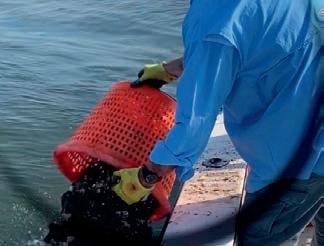

”Meanwhile, on the other side of the Atlantic, The Oyster Restoration Company has announced a new initiative to help businesses achieve their net-zero sustainability goals by replenishing the stock of native oysters. The company argues that oyster reefs are three times more efficient than temperate forests when it comes to sequestering carbon. With that in mind, businesses are being urged to support the restoration of European oyster beds as a way to offset their own carbon emissions, in the same way that many businesses offset carbon by planting trees. The company says: “Our efforts will not only restore the native oyster and associated ecosystems through restoration, but they will also help with decarbonisation and we are looking for partners to collaborate with on flagship net-zero projects.
“Through our environmental developments, we are developing a metric-based reporting system that will provide an overview of the ecosystem benefits for key stakeholders. These tangible statistics will demonstrate the benefits of deploying native oysters, giving businesses the knowledge they need to further invest capital with a potential return of nature credits.”
www.oysterrestorationcompany.co.uk

These tangible statistics will demonstrate the benefits of deploying native oystersTop: Oysters ready for placement, Chesapeake Bay Left: European oysters
An exceptional oyster, at the heart of our collection
An exceptional oyster, at the heart of our collection
The ORKA oyster is selected for its survival rate, its shape and its colour, all for the sake of meeting your expectations.
The ORKA oyster is selected for its survival rate, its shape and its colour, all for the sake of meeting your expectations.

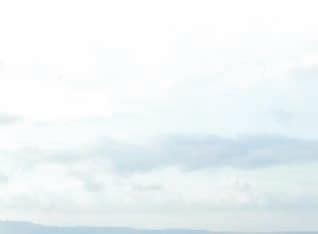
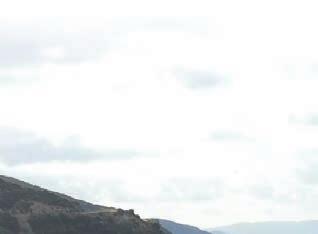
JFC Marine offers a range of single and double-line mussel floats designed to revolutionise mussel farming. Manufactured in Ireland, their floats provide distinct advantages for farmers seeking to optimise their crop yields and profitability.

For single-line setups, JFC Marine offers the SF200 (200L) and SF40 (40L) floats. The SF200 float features dual mooring eyes, reducing twisting on the mooring line and float loss. Its low-profile design minimises vertical motion, leading to higher yields in less time. By combining the SF40 and SF200 floats, farmers can tailor floatation as their crop grows.
JFC Marine’s double-line floats ranging from 200L to 330L are engineered to minimise float movement and reduce vertical motion, resulting in increased stability. The patented fin design enhances stability, even in turbulent sea conditions, further reducing crop loss. The strong mooring eyes ensure secure attachment, while the offset handles are strategically positioned to allow efficient submersion of the headline.
The double-line floats, like their single-line counterparts, are made from UV-stabilised polyethylene and are 100% recyclable. Their marine grey colour not only blends harmoniously with the environment but also reduces visual impact.
By offering superior stability, durability, and adaptability, JFC Marine’s mussel floats empower farmers to maximise their yields and profitability. These floats represent a significant advancement in mussel farming technology, shaping the future of the aquaculture industry. Through their dedication to innovative designs, JFC Marine continues to lead the way in revolutionising mussel farming practices.
•
•
•
•
•
Variété : Crassostrea gigas oyster
Variété : Crassostrea gigas oyster



Tailles : G1.5 to G8
Tailles : G1.5 to G8

remains challenging.
Tom Cameron, from the University of Essex, spoke about the ecoservices delivered by farmed native and non-native shellfish habitats. He pointed out that the spread of Pacific oysters further north is inevitable as a result of climate change.
However, restoration of native oysters and removal of non-native species is expensive and time consuming, and may not even be achievable. He argued that it would be far better to adapt and accept that nonnative oysters also deliver benefits for the ecosystem, such as improved water quality and biodiversity.
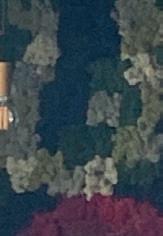
Linda Wood from Marks & Spencer confirmed that the retailer remains committed to sourcing seafood from the UK, but is drawing up higher welfare criteria within its sourcing standard that will affect the wild-caught shellfish sector in particular.



It’s always a pleasure to attend the Shellfish Association of Great Britain (SAGB) conference and dinner, which never fails to feature an excellent line-up of speakers and great networking opportunities. The 53rd annual event this year, held at The Crown Estate’s HQ near Piccadilly, was no exception, with presentations from the wild-caught and farmed shellfish sectors. The keynote speaker was UK Fisheries Minister, the Rt Hon Mark Spencer MP, who agreed that the government isn’t doing enough to support expansion of the non-native oyster industry. He said he’s keen to find solutions to the current stalemate with regulators. However, regulators need to be satisfied that natural settlement won’t adversely impact sensitive areas and that triploid oysters aren’t a threat to biodiversity. Farming of triploid oysters is recommended in environmentally sensitive areas as they don’t reproduce. However, not all oyster producers are keen to use them and the only available seed comes from Guernsey.
The minister acknowledged that poor water quality continues to impact shellfish farmers’ ability to trade. Despite water companies being tasked with making urgent improvements, finding pragmatic solutions to safeguard human health that are acceptable to all parties

Marks & Spencer is also seeking to source more seafood with smaller environmental footprints such as crab, mussels and smaller pelagics, and doubled sales of British oysters last year.


Cefas scientist Frederico Batista outlined


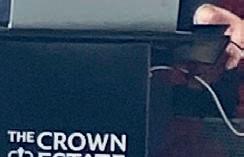


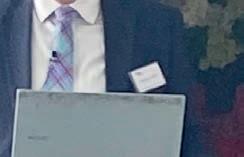
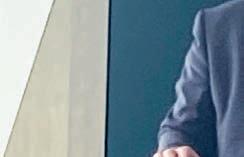
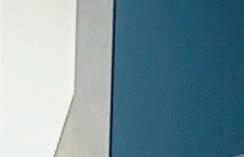





This year’s SAGB Conference addressed some of the biggest issues facing the shellfish sector. By Nicki Holmyard
Poor water quality continues to impact shellfish farmers’ ability to trade
the potential impacts of climate change on UK shellfish. Atlantic surface temperatures have reached unparalleled new highs, which could lead to an increase in mortalities and algal blooms, and greater risk for shell-producing shellfish from ocean acidification.
Batista called for more collaboration between industry and scientists to enable a greater understanding of the impacts of climate change. He also warned that other stressors of shellfish such as sewage discharge and dredge spoils need to be reduced. Contributions from agencies included Graeme High of the Marine Management Organisation (MMO), who outlined the success of the Fisheries and Seafood Scheme, and detailed monies currently open for application.
Ben Ying, seafood specialist from the British Consulate General in Shanghai, gave an overview of the Chinese market for shellfish. He said there were considerable opportunities for UK shellfish suppliers to break into top-end outlets. Support and advice for anyone interested in exploring the Chinese market is readily available from the UK trade delegation. Seafish is supporting a UK pavilion at the China Fisheries & Seafood Expo in Qingdao Seafood Show in October 2023 and is seeking applications from UK businesses wishing to take part.
Chris Wells of Food Assurance and Innovation spoke about a seafish-backed study investigating the potential for and the barriers to increasing mussel consumption through novel uses of the species. It looked at nutrition, markets, spat production, environmental impact, sea space and consumer perception. Consumers have highly polarised views with concerns about the look, texture, taste and food safety aspects of mussels, which need to be made attractive to everyone.
Possible options include processing into a form to add to fishcakes or to make burgers; into a powder for coating seafood; use in animal feed, cosmetics, pharmaceuticals/nutraceuticals and sports nutrition; or for an extruded textured protein. However, new processes, players and collaborations are needed to create a steep change in demand.
The next step is to deliver proof of concept and to examine the microbiological, functional and organoleptic properties of mussels as an ingredient.
Sarah Horsfall from SAGB spoke about the importance of water
quality projects being undertaken by the organisation.
She explained that since privatisation of the water companies in 1989, the amount of untreated wastewater discharged into our rivers and seas has increased considerably, with no reliable data available on what’s dumped.
Professor Peter Hammond estimated that in 2020, a year of low rainfall and low discharges, 11 billion litres was discharged untreated, saving the water companies millions of pounds in treatment costs.
Shellfish businesses bear the cost of this pollution, either in increased depuration costs or through restrictions on harvesting. There’s no mechanism to make the polluter pay.
Since Brexit, shellfish businesses have been unable to send live molluscs from Grade B waters, which has devastated the industry.
SAGB, through the Shellfish Stakeholder Working Group, has been working to adjust the classification system and bring it into line with other European countries, which achieve public health protection with more rational and workable systems. One result is the recent reduction in waiting times between a bad test result and a re-test of an area.
The organisation is also working with the EU on the development of a test for bacteriophage in shellfish flesh, which is a reliable indicator of active norovirus. This will improve food safety, particularly for oysters, which are eaten raw. It’s anticipated that this will lead to an eventual change in EU legislation.

Bangor University has been working with Porthilly Shellfish and Seafish on a complex project, which concluded that environmental data may be used to predict water quality in a harvesting area in certain areas and thus its suitability for harvesting.
SAGB hopes to further test this conclusion and to work alongside regulators the Seafish and the Shellfish Stakeholder Working Group to ensure that a predictive system can be considered as part of the classification system.
Funding is being sought for a project to bring together water quality data for all the shellfish harvesting areas across England and make it available on a website.
A co-operative project with other European shellfish producing nations looks at water quality in shellfish harvesting waters and how this can potentially be improved by investigating methods used elsewhere.
The conference concluded with an upbeat talk from Gus Caslake of Seafish and Duncan Lucas talking about the huge success that is SEAFEAST, the Dorset Seafood Festival, which will be held this year in Weymouth on 9 and 10 September 2023.
Idon’t usually write about shellfish, especially as Fish Farmer runs a dedicated column on the subject; however, shellfish are farmed to supply to the end consumer and consumption is very much on my radar. Following the pandemic high, fish consumption is again in decline and if fish producers are having a hard time right now, then the shellfish sector is suffering even more so.
A new scientific paper has attracted my attention. This is from a team at the Department of Zoology of the University of Cambridge, who have been looking at ways to increase consumption of bivalve seafood in a mass market economy. This isn’t the first paper from this team. They have published previously in association with the NGO Feedback, which argues that salmon farming is extremely wasteful and consumers would be better served by eating what they believe to be more sustainable species such as bivalves instead.
The fundamental problem is that British consumers like eating farmed salmon and don’t particularly like eating bivalve shellfish. The last Nielsen survey for the public body Seafish showed that consumption of chilled salmon stood at 53,358 tonnes whilst mussels reached 3,851 tonnes. That’s a massive gap.
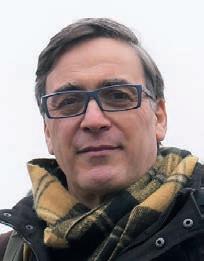
The new paper assesses the current barriers to and drivers for bivalve consumption as well as looking at if transforming the bivalve meat into a more processed form would make consumption more attractive to consumers.
The researchers’ conclusions were derived from an online survey of 134 respondents, who all eat meat. They found that the more regularly respondents ate meat, the more likely they would be to try bivalves. Those who thought bivalves represented healthy eating or were more environmentally friendly were more likely to substitute bivalves for meat.
The researchers also found that respondents were more likely to opt for highly transformed bivalves over bivalves that had been minimally transformed. This means that they might be more likely

to move from meat to, for example, a clam burger rather than buying mussels without their shells. Finally, respondents said that they would be willing to pay more for highly transformed bivalves than any other highly transformed meat.
Whilst I’d be delighted if consumers could be persuaded to eat more bivalves, I don’t think that this new research paper offers any insight into how this might be achieved, despite its best intentions.
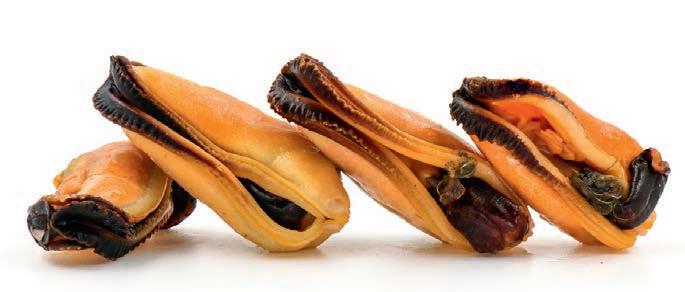
Certainly, I don’t think clam burgers, mussel cakes, sautéed oysters with wine and herbs or clam fingers are the solution. Equally, I’m not convinced that the views sought are really representative of UK consumers. The researchers obtained contacts through the University of Cambridge (who they say represent the young consumers who are important for the future of seafood) and from the Fishmongers’ Company, who were expected to represent those who are better informed about seafood.
The eventual make-up of respondents included 50% who were under the age of 24, 30% in the age group 24 to 44 and 20% over the age of 45. It’s worth remembering that currently only 11% of fish and seafood is actually bought by those under the age of 35 and 15% by those aged between 35 to 44. Therefore, 80% of those in the survey represent age groups that buy just 26% of fish and seafood in the UK. The remaining 20% surveyed account for 74% of purchases. It’s unlikely that those who are not buying fish now will ever be convinced to buy something that even many fish consumers tend not to buy. I’m also not convinced that any consumer would be willing to pay more for something that they haven’t even tasted.
If the researchers want consumers to
”British consumers are very limited in the fish they eat
A paper on the prospects for increasing the consumption of shellfish may be over-optimistic.
eat more bivalves, they have to do something more radical than conducting an online survey. What consumers say in such surveys and what consumers do are notoriously different. Perhaps the researchers should have had some sample dishes made up and offered them to a panel of respondents to taste.
British consumers don’t get much opportunity to buy and eat bivalves at home. This is because stores won’t stock products that consumers don’t buy. The choice available in UK stores is minimal and primarily consists of packs of de-shelled mussels or vacuumpacked mussels in a sauce. Live mussels are available from time to time and oysters are available around St Valentine’s Day. Of course, before Brexit, most shellfish were shipped straight over to the continent, so it didn’t really matter if the UK consumer wasn’t interested in buying them.
British consumers are very limited in the fish they eat. Eighty


and chilled fish, salmon dominates sales. Yet even this popularity masks barriers to consumption. The researchers mention a clam burger as a way of attracting young consumers, considering burgers are popular. Given that popularity, offering a burger made from salmon might have a good chance of getting young people to eat a fish-based product.
As we enter the summer BBQ season, burgers are ubiquitous on the supermarket shelves so offering salmon as an alternative should be a positive move.
Rather surprisingly, whilst salmon burgers are available in some supermarkets, they aren’t big sellers – so if salmon burgers are
Above: Shellfish, vacuum packed Opposite: Mussels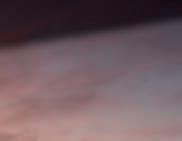


Ireland’s seafood industry grew by 4% last year in financial terms and seafood prices have been riding high for both farmed and wild-caught fish and shellfish. The industry faces a number of challenges, however, that are all causing headaches in their own way.

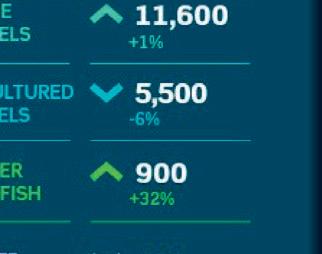
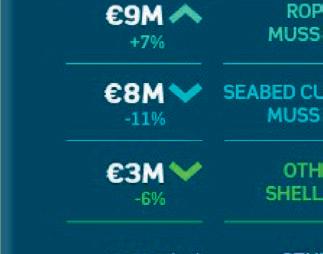
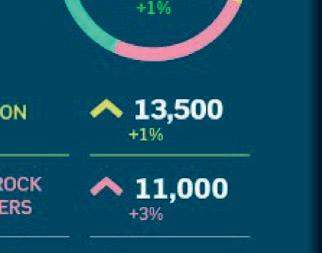
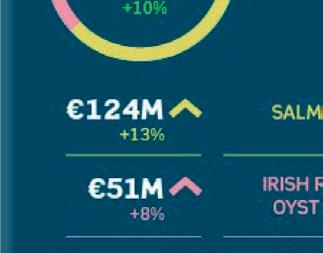

Perhaps the most obvious is Brexit. Out of all the European Union’s member states, Ireland had the most to lose from the UK’s withdrawal. Proportionately, it’s receiving more support than any other from the European Union to help mitigate the impact. Ireland is also exposed to the effects of climate change and warming seas. Ireland’s national broadcaster RTÉ has this month reported that salmon and trout angling has been suspended at two fisheries in the west of the country. This is due to elevated










water temperatures and the impact these temperatures may have on fish stocks.




Warmer waters not only threaten wild fish in rivers and lakes, but have also been associated with health issues and increased mortality for farmed finfish. Reporting on its harvest for the first quarter of this year, Mowi Ireland, for example, cited biological issues, due in part to the exceptionally hot summer of 2022.

Another challenge, at least for Ireland’s finfish farmers, is opposition to the growth of their sector, not only from lobby groups such as Salmon Watch Ireland – which protested in January this year over the restocking of Mowi’s salmon farm at Deenish Island in the south-west of the country – but also from bodies such as Inland Fisheries Ireland, the state agency covering Ireland’s fishing waterways. Inland Fisheries Ireland has spoken against a proposal from Mowi for a large fish farm at Ballinakill in Galway, which is going through a drawn-out planning process.


Every year Bord Iascaigh Mhara (BIM), the development body for the Irish seafood sector, produces a report, The Business of

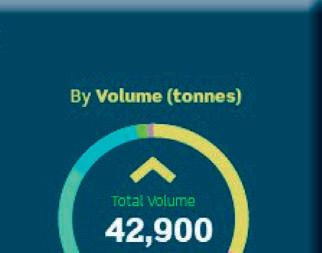










”Price inflation affected the sector significantly in 2022
Seafood, providing a snapshot of the industry in numbers. BIM estimates the GDP of the seafood industry in Ireland amounted to €1.3bn (£1.1bn) (2021: €1.25bn/£1bn, up 4%). Of this, aquaculture accounted for €196m (£167m).
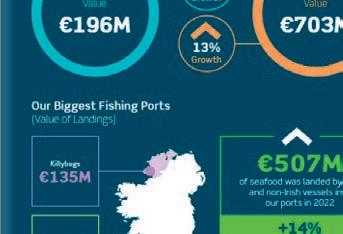
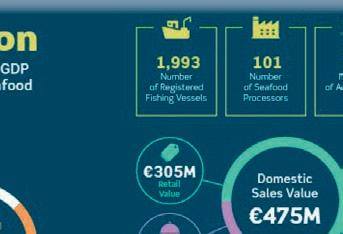

Salmon is Ireland’s top-selling species at €119m (£102m), down 3% year on year, with wild-caught cod coming in at €44m (£38m).
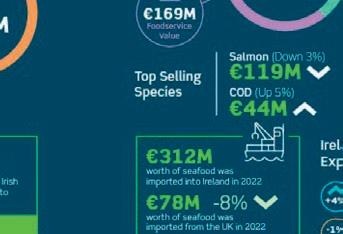
Ireland’s seafood industry accounts for a 25% share of the UK’s total seafood imports (2021: 29%).
The main export markets for the industry are:

• EU €407m (£347m): +4%
• UK €80m (£68m): -1%
• Asia €79m (£67m): -1%
Domestic demand drove growth for Ireland’s seafood sector, however. Domestic consumption of seafood was up 13.5% to €475m (£406m), representing a further rise after the steep fall seen in 2020 as a result of the Covid-19 pandemic.

Price inflation affected the sector significantly in 2022, with salmon increasing 9% in price and cod increasing by 7%. These price hikes led to demand falling by 11% and 3% respectively for salmon and cod.
While investment in the sector declined slightly, down 1% to €443m (£378m), government investment increased by 10% as funding under the European Union’s Brexit Adjustment Reserve (BAR) came on stream during 2022.

The Irish seafood processing sector, in particular, benefits from the Seafood Processing Capital Support Scheme, which was set up by the Irish government to help the sector to engage in transformational change, mitigating the effects of Brexit while also building more environmentally friendly, sustainable and competitive enterprises. The scheme is managed by BIM.












Following the 2% reduction in the value of aquaculture production in 2021, the volume (+1%) and value (+10%) both increased in 2022. The value of Irish organic farmed salmon increased to €124m (£106m), driven by high demand and strong price growth. The farmed shellfish sector also fared well with positive growth recorded for oysters and rope mussels increasing significantly in value. The oyster sector increased a further 8% in value, following the strong growth in 2021. Both mussel sectors –
rope and seabed cultured – had contrasting performances in 2022, with the rope mussel sector benefitting from strong demand leading to a 7% increase in value, while the seabed cultured mussels declined by 6% in volume and 11% in value.





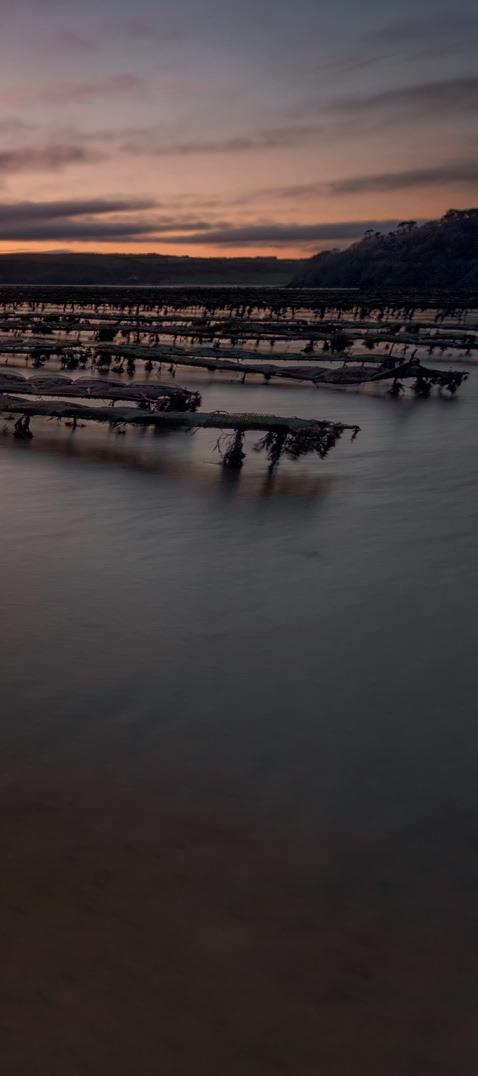
There are just under 300 aquaculture sites recorded throughout Ireland, employing just over 2,000 people.








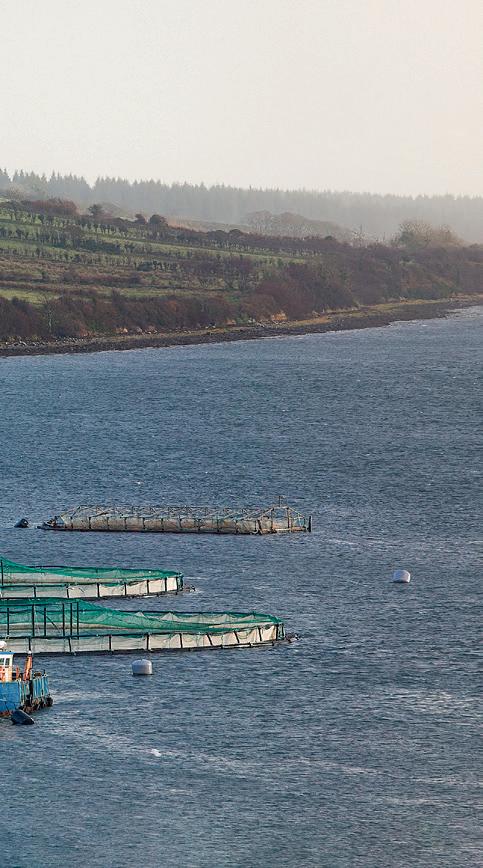




The seafood processing sector is made up of just over 100 companies, of which 14 specialise in salmonids and 32 in shellfish (wild and farmed).

The BIM report notes that apparently healthy export growth by value for processors – which is largely down to higher market prices and demand bouncing back – masks a number of challenges, including raw material constraints, an escalation in most supply chain costs (for example, energy, fuel, logistics, consumables, storage and raw material) and difficulties in recruiting and retaining employees.

The processing sector was dealt a blow in May this year when Mowi Ireland announced that, as part of a global streamlining exercise, the company would cease secondary processing in Ireland. This means job cuts for Mowi’s facility in Donegal in the north of Ireland. Mowi is understood to be consulting on these, with a view to redeploying staff elsewhere within the organisation if possible.
The seafood-tech sector is estimated to be worth €217m (£185m) in terms of turnover, employing nearly 900 people. This sector is estimated to have grown by 152% since 2016 – and is dominated by bioscience companies, which account for the majority of the number of companies, in terms of employment and revenue generated.
BIM also estimates the total greenhouse gas (GHG) emissions for Ireland’s main aquaculture sectors, comparing their performance in 2019 with that in 2017. Given that the sector as a whole has continued to grow, it’s noticeable that for most subsectors, emissions (in terms of tonnes CO2 equivalent) have gone down, particularly for farmed salmon, which is by far the largest emitter of GHGs. Salmon farmers were responsible for an estimated 71,185 tonnes of GHGs in 2017 but this had fallen to 43,983 in 2019.







One marine sector the BIM report doesn’t cover is seaweed. Ireland is one of Europe’s leading nations when it comes to seaweed mariculture, although in comparison to Asia, where most global production is based, that’s not saying much. A recently published strategy document from BIM, however, sets out a route by which Ireland could become a bigger player in this sector. Currently, most of Ireland’s macroalgae production takes the form of harvested wild seaweed, for the most part Ascophyllum nodosum, which is processed to produce plant biostimulants and fertiliser. Seaweed cultivation in Ireland started in 2010, but it peaked in 2015 with a maximum annual production of 70 wet tonnes. The BIM report argues that licencing issues aren’t a barrier to growth – currently Ireland has a licenced area capable of supporting an output of 3,810 tonnes – but focuses instead on lack of a consistent research effort, a shortage of hatchery facilities to produce seeded strings and limited market information.
The BIM report recommends as priorities:
• stimulating non-productive licence holders to commence cultivating seaweed;
• boosting the sector by attracting new growers;
• obtaining relevant market information on seaweed for food use;

GOATSBRIDGE Trout Farm in County Kilkenny will increase its production of value-added products with help from the Brexit Processing Capital Support Scheme.
The Thomastown business is one of 44 projects to share in a €26.8m (£22.9m) investment from the Seafood Processing Capital Support Scheme, administered through BIM. The scheme is funded by the European Union.
Directors Mag and Ger Kirwan are using the 280,000 (£239,000) investment to improve production efficiencies of their key ranges, including smoked trout, trout caviar and fish chowder.
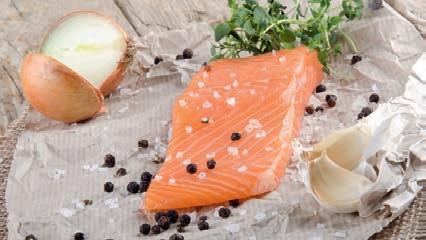
“In recent years, we’ve focused on adding value to our highly sought-after trout products,” says Mag Kirwan. “With costs increasing, we’re always looking at ways to be more efficient and increase capacity so we can increase sales.”
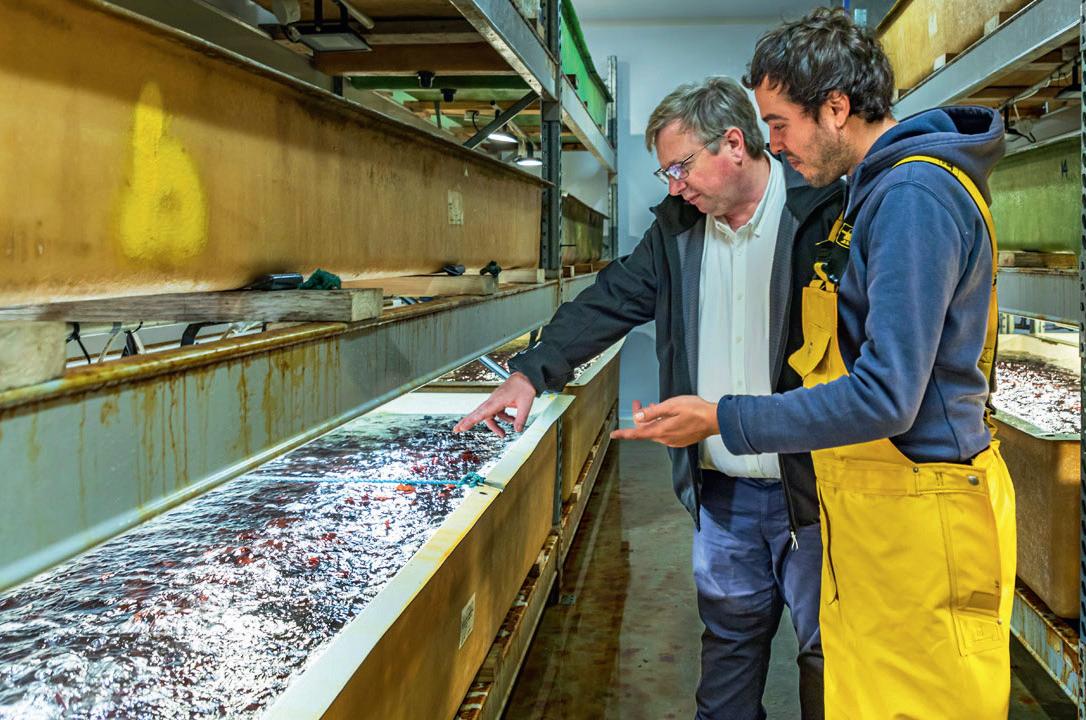
Goatsbridge Trout Farm is using the grant aid to purchase processing equipment, including an inline chiller, bowl choppers, cooking vessel and a manufacturing production system.
• confirming and funding a national seaweed research agenda;







• encouraging collaboration between growers to share information, know-how and equipment; and
• establishing a hatchery facility capable of operating to international best practices.















Launching the report, Caroline Bocquel, CEO BIM, said: “To ensure a sustainable and economically profitable aquaculture industry in Ireland, the volume of farmed seaweed must increase. This new strategy sets out a roadmap for the seaweed sector to realise its potential. Ireland’s long coastline and clean, cold waters present the ideal conditions to cultivate seaweed and to sustainably develop this crop that’s highly resource efficient, requiring minimal resource input.”
There are currently 25 licensed seaweed farms in Ireland, located along the northwest, west and south-west coastline.
Michael O’Neill, seaweed farmer with Pure Ocean in Allihies, West Cork welcomed the new strategy and said: “The seaweed industry has the highest potential for growth in the Irish aquaculture sector. Ireland has always been a supplier of high-quality seaweeds for various uses, but there have been limitations to date on the scalability of the industry.
“The advances in cultivation technology and processing leaves Ireland extremely well positioned to become a major player in the international seaweed industry, with the demand for seaweed biomass and seaweed-based products outstripping supply for the foreseeable future.”
These upgrades will ensure greater production efficiencies and increase its capacity to develop further value-added products.
It will improve its energy efficiency by upgrading existing doors to improve temperature control in the production area. It also plans to build a blast chiller, which will improve the processing of products, including caviar.
“We make these upgrades because it’s the right thing to do but the grant aid certainly helps take the pressure off as it halves the payback time,” said Mag.
“It’s particularly helpful to have this support in the current climate with costs rising. It’s when we’re feeling fearful that it’s time to be brave and make changes.”
Innovators in the Irish seafood industry, Mag and Ger Kirwan have run the Goatsbridge Trout Farm for almost 30 years.
In 2012, they developed Ireland’s first-ever caviar – trout caviar.
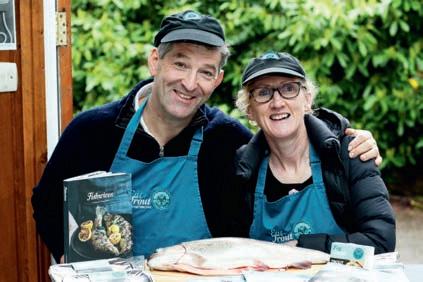
The seaweed industry has the highest potential for growthAbove: Goatsbridge’s Ger (le�) and Mag Kirwan
caviar and efficient andAbove: Pure Ocean interior, Michael O’Neill (le�) Left: Lightly smoked Irish salmon fillet
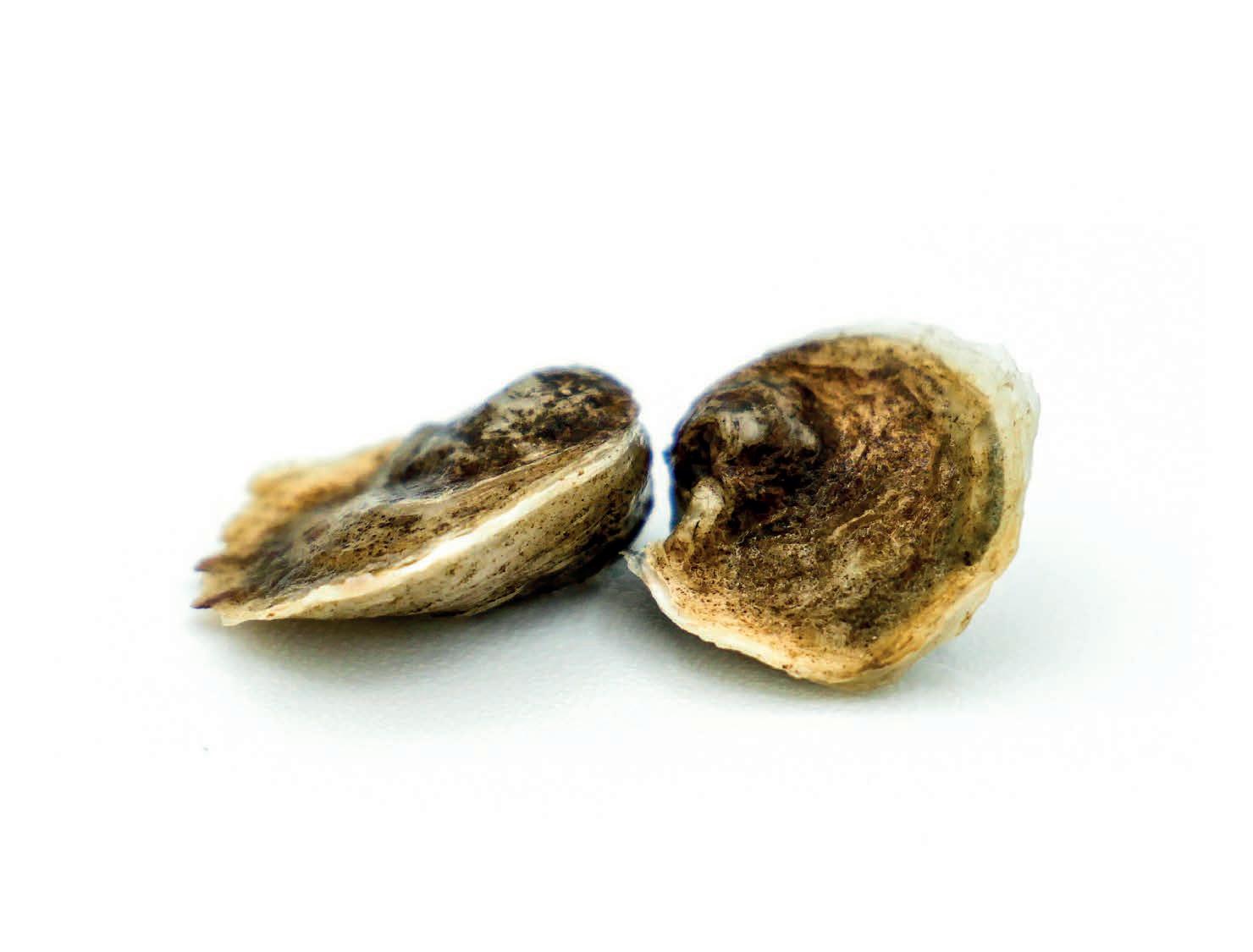






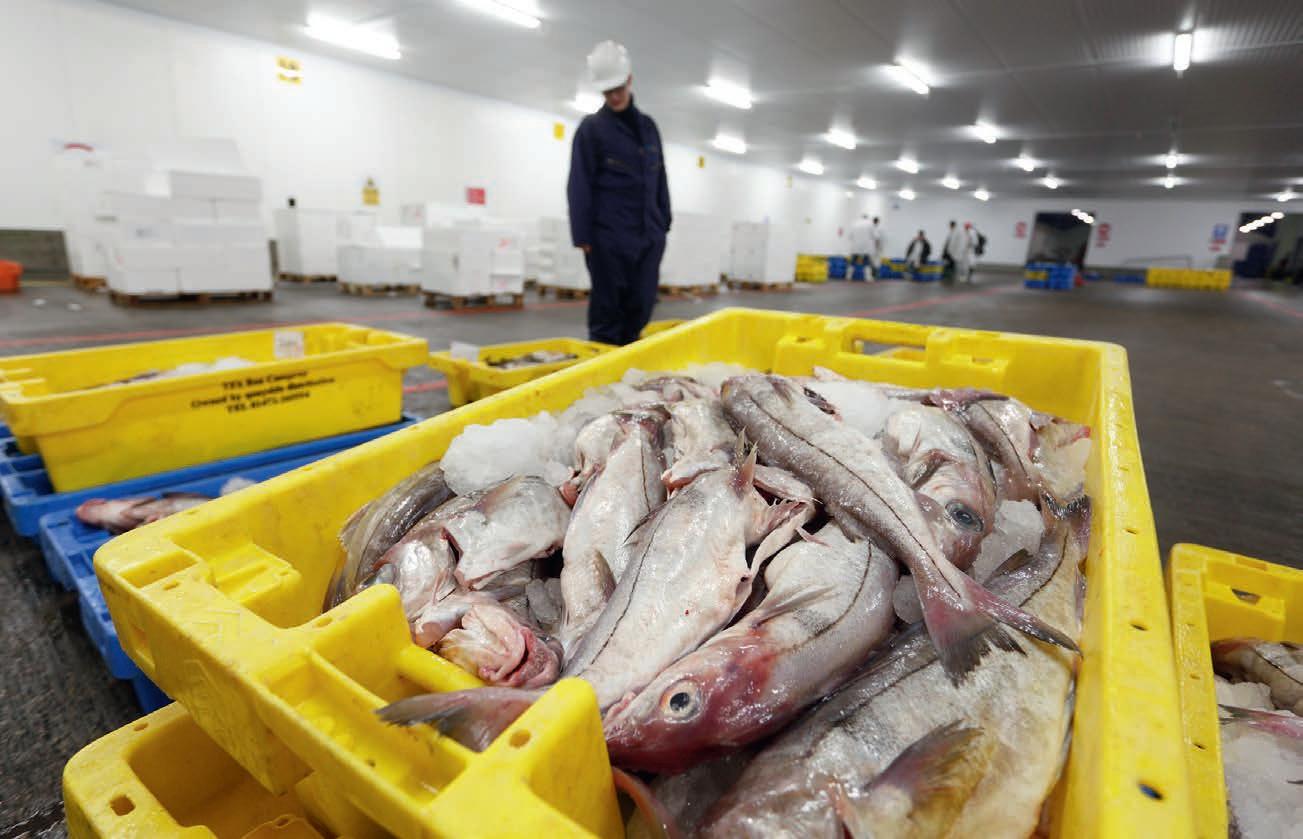






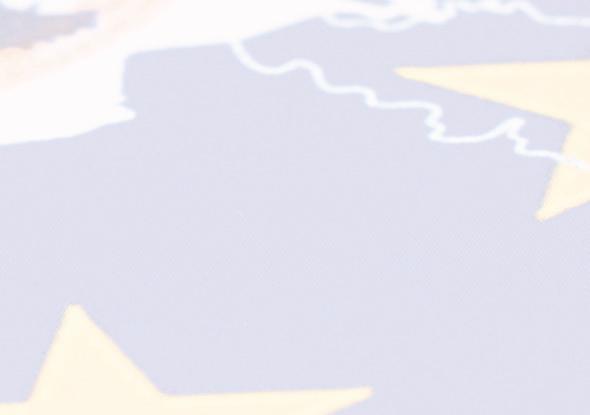
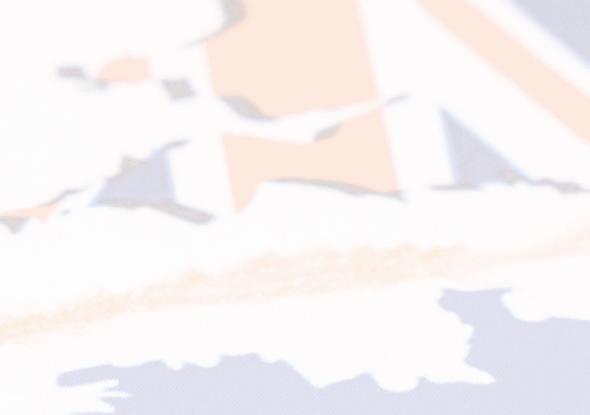

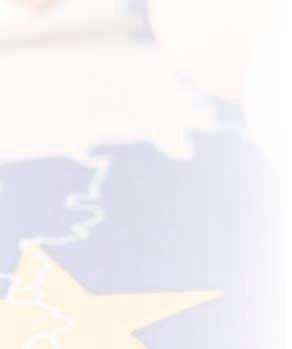
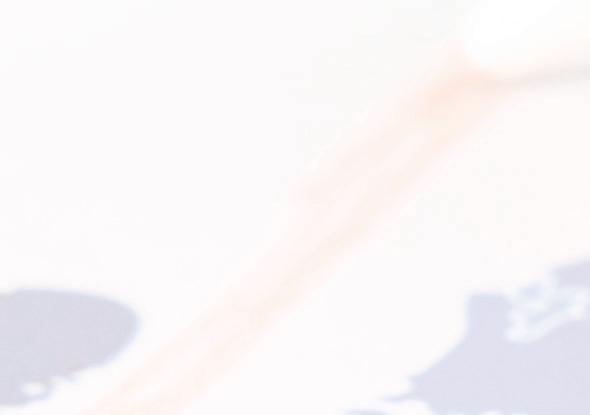
 By Sandy Neil
By Sandy Neil
Whatever you think of Brexit, both sides of the divide may be able to agree on a single term to sum it up: “saga”. In other words, a long, rolling epic that, one winter’s evening many, many years from now, will make our grandchildren gasp by the fireside.
“Let me tell you about New Year’s Day 2021 when the UK left the EU’s Customs Union and Single Market,” you’ll begin. “The deadly Covid pandemic was still raging, and, around the corner, lurked a run on fuel, a European war in Ukraine, a cost of living crisis, the death of a monarch, three Prime Ministers in as many months, and [insert next event here].”
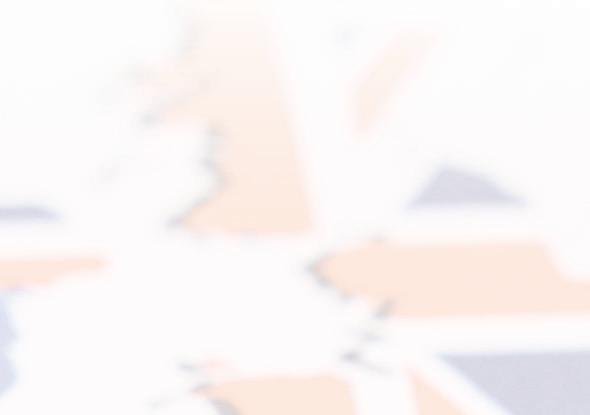
When the bells chimed midnight on December 31 2020, just a week after a Brexit deal between the UK and EU was struck on Christmas Eve, a new customs regime began. Before that, transporting seafood to Lisbon was as easy as taking it to Luton – the only difference was the distance. Afterwards, the same task became much slower and pricier.
For importers and exporters, the new regime led to a slowdown in receiving stock. It took longer for European hauliers to get here, and UK-based lorries were slowed on the way out and back. This led to empty shelves and shortages. The problems were most acute for perishable goods. Fish and shellfish sold to European
markets were decomposing in the back of lorries because of the time taken to get across.
Businesses exporting meat and seafood from the UK to the EU faced more red tape, higher costs, and delays that led to whole shipments being dumped, lost orders, discounted sales, and disgruntled customers. Exports almost entirely collapsed, when it was taking many hours – sometimes days – to process orders of seafood destined for the EU.
Where once only one form did the job, UK seafood firms had seven new documents to complete just for one lorry carrying one species to the EU. At the

This model takes a data-driven approach to managing our border
heart of the costly delays was a complex layer of post-Brexit bureaucracy called Export Health Certificates (EHCs), which ran to dozens of pages for each order, with mistakes and then delays while new versions were sourced. These had existed before, but did not apply to the UK as an EU member state.
UK exporters gradually adapted, with EHCs being processed in 45 minutes rather than four hours, shortening delays of fresh fish to EU markets. The industry has now called for an end-to-end digitised solution to speed things up further. Meanwhile, the UK has up until now been putting off the imposition of similar controls on animal-based goods coming into the UK.
UK controls set to come in – at last Andrew Kuyk CBE is Senior Policy Manager of the Seafood Alliance, the seafood arm of industry body the Provision Trade Federation. As he explains: “Up till now, imports from the EU have continued on much the same terms as before Brexit – without the need for health certificates or many other checks and controls applying to goods from the rest of the world. That is going to change under a new system of risk classification. What this will mean, in practice, in terms of additional costs or transit times is still unclear.”
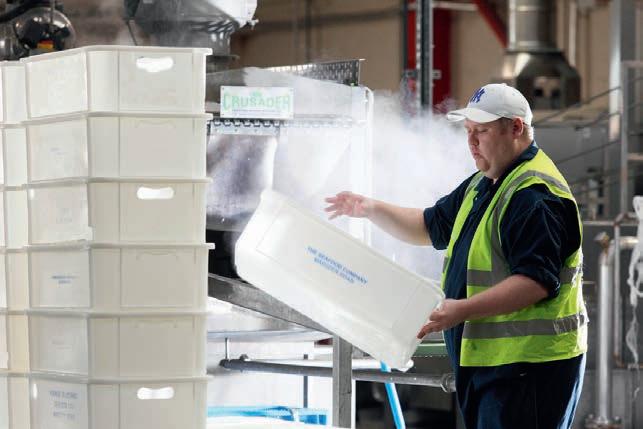
In April this year, the UK set out its draft plans to simplify and speed up post-Brexit border checks for imports from the EU from October 2023. Full implementation had been delayed on several occasions because of worries about port disruption, COVID-19, and adding to a cost-of-living crisis.
The proposed system, the Border Target Operating Model (TOM) “proposes a new approach to security controls (applying to all imports), and Sanitary and Phytosanitary controls (applying to imports of live animals, germinal products, animal products, plants and plant products) at the border,” according to a joint ministerial statement from the UK, Scottish and Welsh Governments.
“This model takes a data-driven approach to managing our border, utilising tech to reduce the reams of paperwork firms are currently forced to complete when they do business. It will eradicate the cumbersome and frustrating approach currently taken to carrying out checks, replacing it with a more targeted, risk-based system that is underpinned by evidence and data.”
The proposals include a new “single trade window” under which traders need only submit information once and in one place, which is expected to be fully operational by 2027. Required checks will take place away from ports to prevent delays at the border. To aid preparedness, TOM will be introduced across three milestones between the end of October 2023 and October 31 2024.
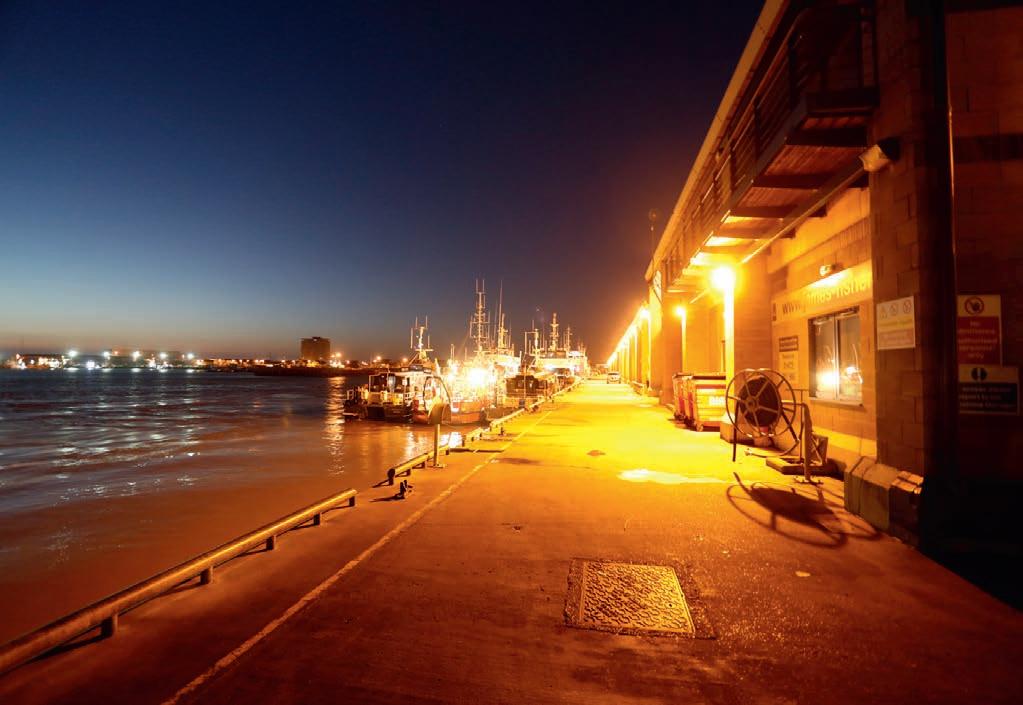
The Norwegian Seafood Council’s UK Director Victoria Braathen explains: “The TOM sets out three risk categories. Depending on whether a seafood product is wild caught or from aquaculture it will as a starting point fall within risk category low or medium. Salmon is the largest seafood species from Norway to the UK and as a farmed product it falls within the medium risk category. In turn this means that from 31 October Norwegian salmon exported to the UK must be accompanied by a health certificate. The same will apply to Norwegian wild-caught seafood falling outside the scope of the low-risk category.”
The British Retail Consortium’s Director of Food and Sustainability, Andrew Opie, is hopeful the impact on seafood imports will be minimal.
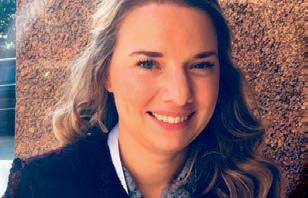








“Wild caught fish, for instance, are classified as low-risk meaning they will not require new export health certificates and will only be subject to limited border controls,” he says. “However, farmed fish such as salmon will require certification and it is vital that suppliers in other countries are prepared for the necessary paperwork. We have liaised with the UK
Opposite: Seafood warehouse
This page from top: Quayside; Victoria Braathen, Norwegian Seafood Council; fish market at night
Government for a number of years to ensure European countries are ready and shared details of the TOM with our supply chains so they are prepared for October. We have asked the Government to monitor imports and be ready to mitigate any potential issues.”
“Like other food businesses, the Provision Trade Federation is still awaiting publication of the definitive version of the TOM,” adds Andrew Kuyk. “The UK is a very significant net importer of seafood (over 90% in the case of main whitefish species) so any changes to existing arrangements will clearly have significant implications. But it is still too early to judge what these will be – either in terms of possible improvements or additional costs.
“Our main concerns at the moment relate to the additional costs and procedures that are likely to apply – on which we are still awaiting further detail. The proposed staging of different elements of the TOM also gives rise to its own uncertainties. Communicating the changes – and ensuring their smooth operation - is going to be a challenge for government in what is a highly competitive global seafood market where there are plenty of other willing buyers.
“Government have indicated they will take a pragmatic and flexible approach to compliance in the initial stages of the new model. But it is not yet clear if the required IT and other systems – and physical border facilities – will be fully tested and ready for day one. Some suppliers may seek to increase shipments in advance in order to ensure they have adequate stocks – where product shelf-life permits. But that would itself incur extra cost for additional storage and could bid up prices in the short term.”

Importers who import from non-EU countries are hopeful the TOM will improve the time it takes goods to clear port health checks at the border, according to Seafish’s Regulatory Affairs Advisor Ivan Bartolo. He says: “This is because the frequency of physical controls will be reduced from current levels of 15% or 30% of consignments to no checks at all for wild-caught fish and potentially just 1% for farmed fish. Importers who import from the EU, Norway and Iceland, on the other hand, are concerned that the TOM will raise costs and increase delays at the border.
“All seafood imports will be affected in some way or other. NonEU imports will undergo fewer physical checks and will be dealt with more quickly at the border. Seafood from the EU, Norway and Iceland will be affected significantly because the import barriers
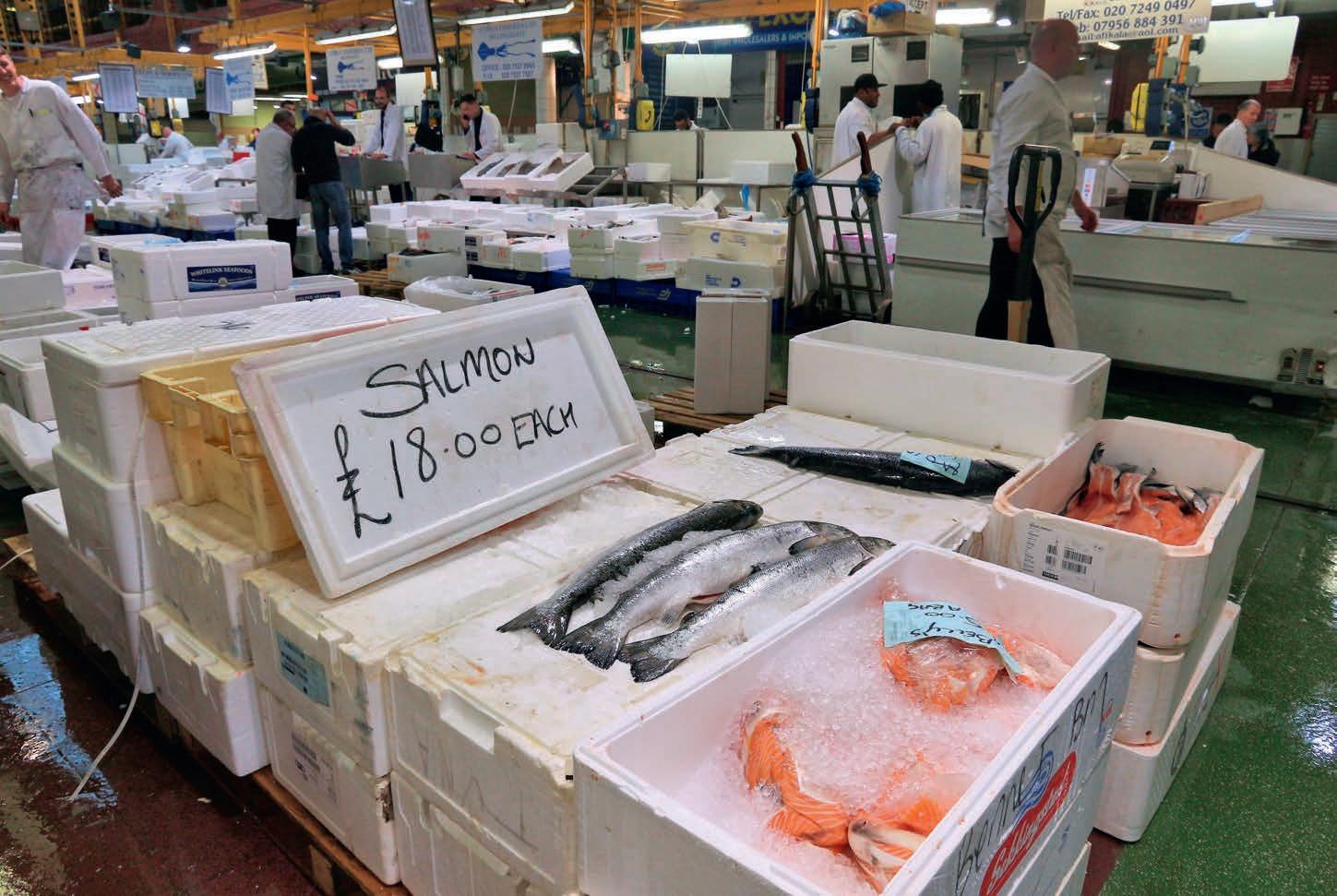
applied to non-EU imports will also apply to those imports. Until now, shipments from the EU entered the UK through any port and with minimal paperwork. Once the TOM is in place the seafood will need to enter Great Britain through a Border Control Post (BCP). Mediumrisk seafood, which includes all farmed fish and some types of wild caught fish, will have to be accompanied by a health certificate, which will need to be signed by an official veterinarian.
“Importers are worried that their suppliers in Europe might not be able to obtain the export health certificates to go with their shipments. Producing large numbers of health certificates for exports to the UK will be a new, untested administrative process for the authorities of the exporting country. There’s a shortage of official veterinary surgeons in the EU. Since every certificate requires a vet’s signature, this might cause delays.
“Another concern is that there might not be enough port health capacity at GB ports to deal efficiently with the increased volume of products of animal origin that will pass through BCPs. Some BCPs are not yet operational, and there is still some uncertainty about the volumes expected at each port.
“The TOM will also bring new costs to the


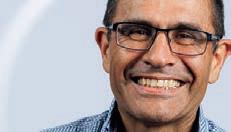
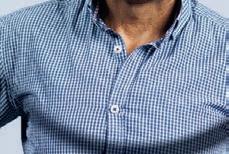






Costs will go up to cover, among other things, inspections
importer. These are estimated to be between £300 and £500 per consignment, to cover the signed export health certificate, increased administration costs for the exporter and port health charges.
“We have heard that Defra has been in touch with the authorities of all the EU and EFTA (European Free Trade Association) countries that export seafood, and have received assurances that they have the capacity to issue health certificates. There is also a phase between 31 October 2023 and 31 January 2024 during which health certificaterelated issues can be identified and addressed. As regards port capacity, many port health authorities are ready to increase their BCP operations if import volumes are greater than predicted.
“Some importers are anticipating some short-term disruption as BCPs learn how to deal with the new import check regime. Longer term, all traders who import from the EU will have to learn how to live with the new processes. Defra has proposed load consolidation models that will allow some importers to bring in mixed loads under one health certificate, which would reduce costs. It is encouraging that Defra are saying that they will accept digitised versions of health certificates and other documents, and there is work ongoing towards full digitalisation of the cross-border process. Trusted trader models are also being developed. Trusted traders will be able to circumvent some border processes if they can provide guarantees on traceability and on-site checks.”
The TOM model is likely to result in higher costs, more paperwork and more potential for disruption, warns Seafood Scotland’s Head of Trade Marketing for the UK, Middle East & Asia, Adam Wing: “The model categorises products by risk, and each risk category has a set of rules for importing. The higher the risk, the greater potential for disruption. In addition, there are no options – yet - for multiple pickups or groupage, so this could affect non full-truck deliveries.
“In terms of disruption, there are more steps and documents
involved opening up potential for hold ups, and there are likely to be different interpretations of the regulations, most noticeably in the early stages. Potential issues may arise where product is transiting through the EU to UK or where there is dispute over the origin of the product. This could impact on duties that might need to be paid.
“Costs will go up to cover, among other things, inspections – and it is not yet clear who will be responsible for paying these extra costs. Another unresolved matter is who is responsible for the shipment if it is held at customs and is damaged.
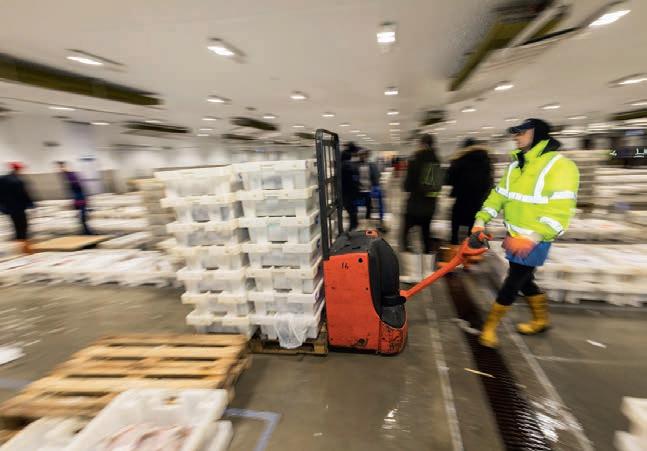
“Finally, hold ups are likely due to volumes at peak times and, being realistic, how well prepared UK border posts are and whether Customs’ computer systems work as they are supposed to.”
Seafood Scotland’s Chief Executive once described Brexit and its challenges as “pain by a thousand cuts... just when you think you have everything sorted, along comes another bit of legislation which changes things again.”
Current typical RAS designs are not effective in removing particles sized <30-50 microns in drum filters and >10 micron particles in protein skimmers, leaving those in the range between 10 and 50 microns to be carried into the biological filters. The actual purpose of the latter is nitrification, so their performance is compromised by organic particulates while sludge production is increased. Some other, smaller particles continue to circulate throughout the system increasing the overall load until the systems finally crash.
Sludge production increases the foot print of the biological filter, whilst also increasing oxygen demand, pH regulation and risk of pathogens. The cost of sludge disposal is also increasing incrementally.
Dryden Aqua’s AFM® media has been used in a variety of aquaculture applications, such as intake water systems, hatcheries, brood stock and wastewater treatment, for over 20 years.
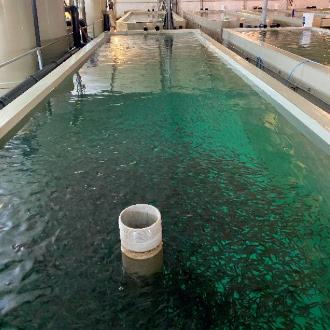
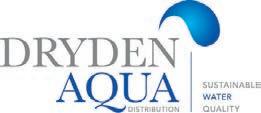
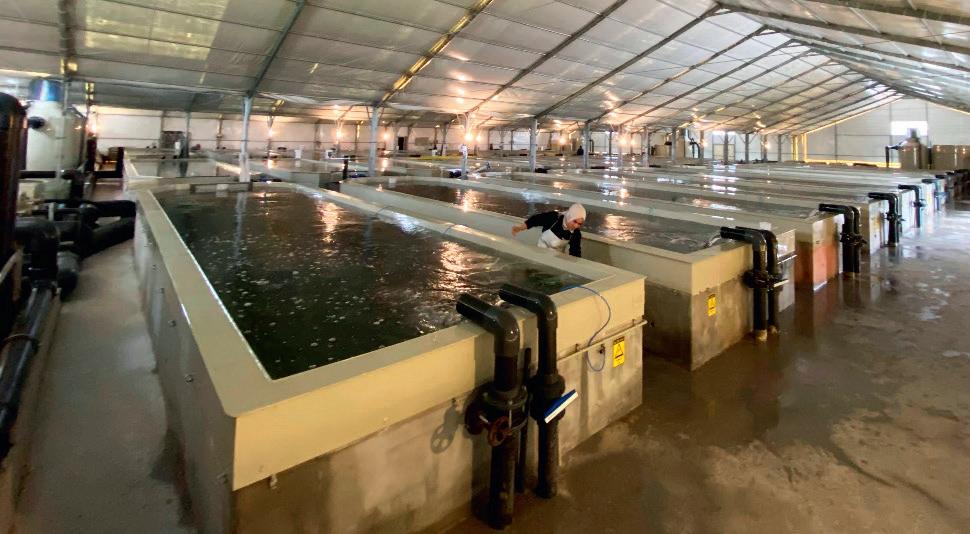
AFM®ng, Dryden Aqua’s new hydrophobic media delivers 95% removal of 1 micron particles and offers improved organics, microplastics, lipids and fats removal, as well as improved performance in soft water, whilst maintaining its resistance to biological fouling. This makes it ideally suited for use in any aquaculture application.
Organics removal is where AFM® starts to make a large impact. There are a number of farms running side loop systems on Grow-Out RAS (10, 20 and 50% flows) as they see the value in greatly reduced organics loads impacting on the biological filter’s performance and the benefits in oxygen savings as a result of the reduced load.
For more information contact Mike.demaine@drydenaqua.com or go online to www.drydenaqua.com.
With AFMng®, increased biosecurity and increased organics removal mean more efficient systems and reduced oxidation demandPhoto: ADEC, Milas, Turkey Top left and above: ADEC Aquaculture Hatchery Juvenile tank - Clean water
FF: So is there an implication that the big salmon producers were playing poker, when they said the new tax would stop them investing in new projects?
KN: I wouldn’t phrase it like that. In the first place, they were really surprised [by the announcement]. In the second place, they were upset. This was a complicated process, especially when you aren’t invited to discuss anything, at least to start with.
So it’s difficult to make any investment decisions when you don’t know the future tax regime. That’s not about playing poker, that’s about how businesses were working.
I think now, everybody will analyse the new tax regime. The tax level is one thing but another is all the regulations coming in with it. So most players will take a bit of time to understand the new situation.
I don’t think everyone will be in the same position. Some will probably still hold back on investment and some need to develop their business.
FF: Do you see post-smolt as an exciting area?
KN: Personally, I believe this is part of the future. Post-smolt is very much proven as a concept. There have been good results in many of the post-smolt facilities.
AKVA Group CEO Knut Nesse is a busy man. When Fish Farmer magazine caught up with him in June, he was embarking on a round of visits in Scotland, ahead of flying to China to take a look at the Nordic Aqua Partners recirculating aquaculture system (RAS) salmon farm project in Ningbo, for which AKVA is a key contractor. The company had also just announced that it had won one of Norway’s biggest RAS contracts, helping to build a new plant for Cermaq in the Finnmark region, with the aim of growing salmon smolts to a larger size before they’re released into the sea.
Norway-based AKVA Group is one of the leading names in aquaculture support, with an involvement in traditional sea farming as well as land-based – not to mention a growing digital division. Last year, it reported revenue of nearly £260m.
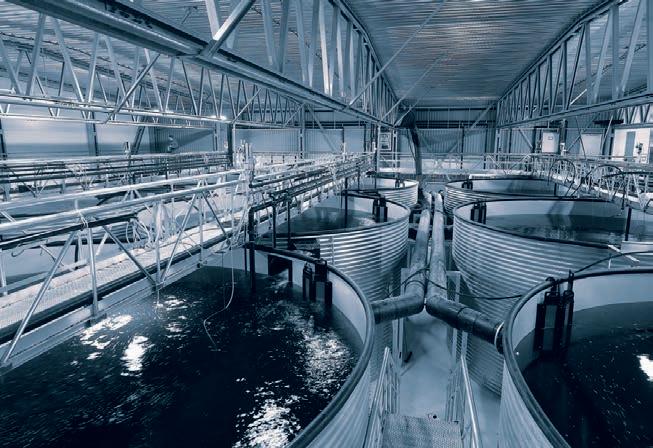





Nesse was happy to share his insights into technology in aquaculture and about where the industry might be headed.
Fish Farmer: Can you tell us about the big project announced with Cermaq?
Knut Nesse: It’s a post-smolt project in the far north of Norway. They are going to produce 12m smolt there and we’re going to provide all the RAS technology. It’s worth a minimum of €60m (£51m) to us. This is our single biggest contract in Norway, ever.

And there has been a standstill there thanks to the resource tax [the new “salmon tax” tax in Norway on fish farming in coastal waters, which the Norwegian parliament finally passed in May]. No one has been making decisions for eight months.
When you’re in the supply industry, it’s a difficult period when you can’t sign new contracts. We planned for business continuation, however, so we kept our people and capacity, so now we’re ready to take more contracts. It’s a fantastic starting point for us.
www.fishfarmermagazine.com
There were low FCRs [feed conversion ratios] – we’ve seen FCRs below 0.9 – and very low mortality. There’s also a reduced cost for sea lice treatments. The fish are getting less stressed and that means lower mortality.
In most salmon producing countries, it will not be easy to get access to growth on the same basis as we did before. For me, the growth opportunity is really from post-smolt.
Also, in Norway, post-smolt production [on land] is outside the scope of the resource tax.
FF: What about semi-closed containment at sea as an alternative approach?
KN: We shouldn’t overcomplicate things. Post-smolt is now proven. It involves relatively large capital expenditure, but you’re replacing expensive licences [at sea] with capex on land.

Knut Nesse outlines his view of where aquaculture technology is heading.
By Robert Outram
We think you should go with simpler technology at sea, such as deep farming [where the salmon are kept below the level at which most sea lice swim]. I’m not ruling out semi-closed or closed and there have been a lot of investments in innovation and technology, but as far as we’re aware, this isn’t at a commercially scalable level at this point in time.
Offshore farming could be part of the solution in the long term, but this type of investment comes with a new set of risks.
FF: What are the factors that make land-based salmon farming –like the Ningbo project – viable?
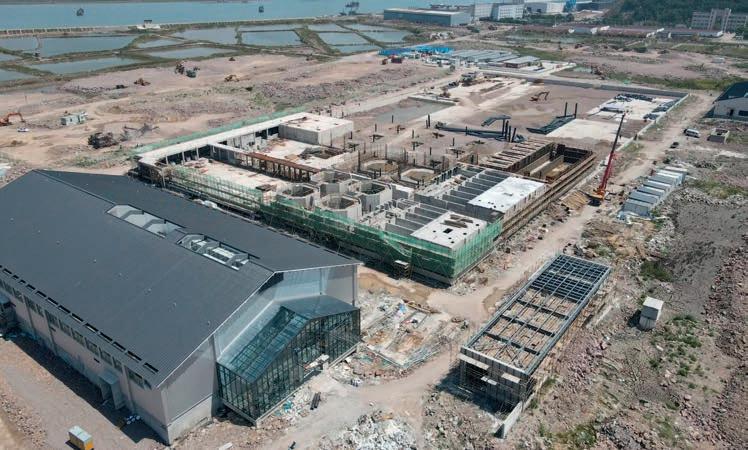

KN: It’s natural to start, with big investments, where you’re closer to the consumer. So we’re talking Asia, North America, the Middle East. In Ningbo, they’ll be producing locally, so they don’t have to pay for air freight, import tariffs etc. We expect to see the first harvest next year. That will be the inflection point… we’ll have proof of concept as regards growing large salmon in a faraway marketplace. Then more investments will follow.
FF: What about other species?
KN: At AKVA Group, we’re in all the salmon countries and we’re also in bass and bream in the Mediterranean, including Turkey. In the future, we’ll consider other species. There’s a good prospect for shrimp RAS technology in Europe… that’s something I’m particularly interested in.
FF: AKVA’s last annual report showed revenue going up. Would you hope to be back in profit this year?
KN: Certainly yes, we’ll be back in profit. Not the highest profit but a reasonable level. We’ve been through a couple of extraordinary years. Last year, we carried out a restructuring for several parts of our business, so this year will provide profit. But we still need to scale our land-based business up even more and our digital business should be scaled even further, so 2024 will be even better than 2023.
FF: One of the elements in the restructuring was bringing the land-based division into the same headquarters as the sea division – was that a cost-saving decision?
KN: No, it wasn’t about cost saving; that was more of a strategic move. What we’ve kept back in Denmark is design engineering and some other functions, and we still have a big office there. But our marketplace is first and foremost the Norwegian marketplace, so it’s about being close to the customer and also about access to talent.
FF: Covid and the war in Ukraine have put pressure on the supply chain. What kind of things have you done differently to address these problems?
KN: There were some supply shocks right after the war started. There were some components that were difficult to resource, but
that’s now stable again. We did a hard costsaving programme and then we looked into our complete way of doing business when it comes to cost calculation and contract management. I think our business model these days is more resilient and solid.




FF: What areas of technology are you particularly excited about over the next five to 10 years?
KN: Aquaculture will be more digital. AI and machine learning will play a big role. Precision farming is the ultimate vision of this industry and digital solutions will be part of that. We have 110 people working in that space.
When you have automated feeding and full connectivity on all sites, that means you can move people off the farm site or the barge. We’re working on what we call the “Barge for the Future” and we hope to come to the marketplace in one or two years.
I think we’ll see most people starting with bigger smolt [in sea pens] – around one or one-and-a-half kilos, with a relatively short time in the sea.
Producing salmon overseas [in RAS systems] will be normal, so some additional supply will come from Asia, the US and the Middle East. But five to 10 years isn’t a long time – one RAS project can easily have a lead time of five years. There’ll be some additional supply, but not major compared to the industry’s three million tonnes. We’ll still be in the sea but with more technology, for example to allow for the collection of sludge. The industry needs to have a smaller environmental footprint or we won’t have the social licence to operate and to grow.
This
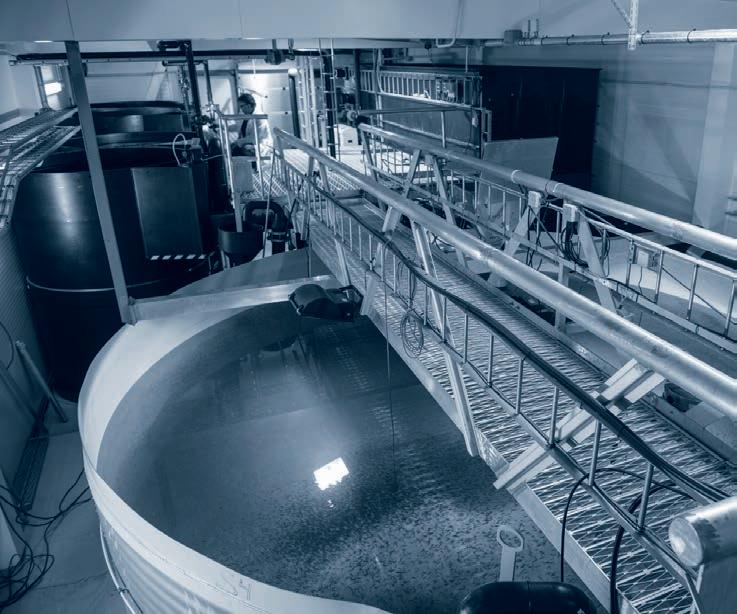 Opposite from top: Knut Nesse, CEO of AKVA Group; AKVA RAS plant
page from top: Nordic Aqua Partners’ RAS facility in Ningbo, China; AKVA flowthrough facility
Opposite from top: Knut Nesse, CEO of AKVA Group; AKVA RAS plant
page from top: Nordic Aqua Partners’ RAS facility in Ningbo, China; AKVA flowthrough facility
For me, the growth opportunity is really from postsmolt
”
We all sometimes choose food for its convenience factor, rather than its nutritional value. Some of our quick and easy purchases may even be marketed as healthy. However, if you read the ingredients list of many of these pre-packaged items, you’ll see there are a whole host of extra additives, e-numbers and other ingredients. These are usually found in a lab, not a domestic kitchen, and are not necessarily adding any nutritional value to our bodies.
Ultra-processed food has come under the spotlight of late, with a team of researchers from Imperial College London reporting links between foods such as ready meals, breakfast cereals and ice cream –which are often packed with artificial additives, processed sugars and fats and salt – and a higher risk of various types of cancer. A separate study also found that nearly one-third of baby and toddler foods sold in the UK are ultra-processed.

That’s the bad news. But not all processed food is ultra-processed. Many protein sources, which are grown, produced and lightly processed here in the UK, score much better. Dairy products such as whole milk, for example, require a lighter level of processing and offer higher nutritional benefits, according to the Zoe nutrition plan, based on human gut-health research.
Experts suggest that to eat a healthier diet, all we need to do is go back to basics, concentrating on fresh food and products with ingredients we recognise, rather than those highly processed composite products.

All of this media attention could be a prime opportunity for the Scottish seafood sector. There’s a clear role for fish and shellfish to be consumed as part of a healthy, balanced diet of fresh foods. Seafood is an excellent source of protein, with so-called fatty fish offering high levels of omega-3 micronutrients that we as humans can’t make for ourselves.
Another aspect of importance to consumers is knowing that the food we buy and eat is safe, healthy and satisfying. Protein helps people feel fuller for longer and seafood has the additional benefit of being low in saturated fat.
One of the standout features of farmed seafood is the high standard of quality and traceability from farm to supermarket shelf and from plate to fork. The UK has incredibly high standards when it comes to food safety, fish welfare and sustainability, with many different quality marks that act as badges of assurance for consumers.
Innovation and technology play a big part in these assurances. In the shellfish sector, for instance, the Sustainable Aquaculture Innovation Centre (SAIC) is supporting the development of new rapid testing equipment, which will help to boost consumer confidence. Once
commercialised, these new tests will allow health checks to happen on farms, with results available for farmers in a matter of minutes rather than days or weeks. This is one example of a practical solution that supports farm productivity while simultaneously offering consumer benefits.
Much of the innovation, research and development in the sector is also addressing consumer concerns about the environmental footprint. In many ways, farmed seafood is leading the way, with commitments from the major retailers related to sustainable sourcing of both marine and soy feed ingredients, often co-created with NGOs such as the World Wide Fund for Nature and standardssetting bodies such as the Aquaculture Stewardship Council.
Across the sector, there’s a lot of work going on to boost the sustainability of fish feed ingredients in three main ways: reducing the reliance on marine ingredients, reducing the carbon footprint of feed by improving the efficiency of its production and use, and stimulating the development of novel ingredients.
To boost the adoption of these ingredients, it’s important to have retailer involvement – these companies are custodians of pushing for better standards in supply chains on behalf of us, the consumer. SAIC, with its role as a hub for academic and industry collaboration, is keen to support pre-competitive collaboration across all areas of the sector to help make that a reality.
As the public perception of convenience food starts to change, we may well see greater recognition that fresh, farmed seafood from Scotland – which undergoes simple processing steps far removed from ultra-processing – is the sustainable choice.
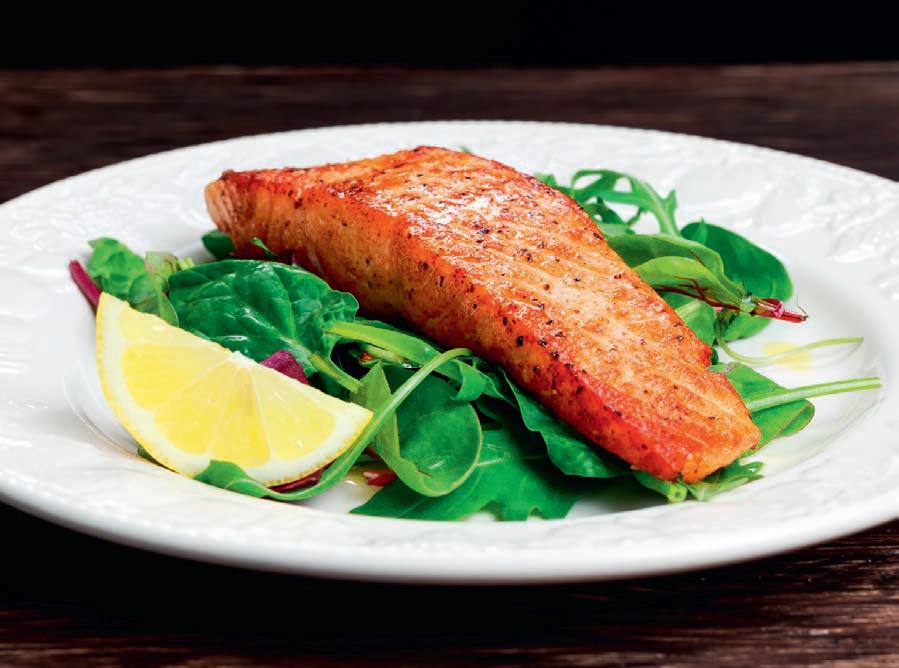 Heather Jones is CEO of the SAIC.
Heather Jones is CEO of the SAIC.





 Above: Salmon fillet meal on a plate
Above: Salmon fillet meal on a plate
One of the standout features of farmed seafood is the high standard of quality and traceability
Keeping innovation on the menu can feed a healthy diet. By Heather Jones
Proteomics is analogous to a puzzle. There are many pieces of information, such as the proteins in a cell, their interactions, functions, and modifications. You want to put them together to see the big picture, such as how a cell works, how it responds to stimuli, or how it reacts to disease. Proteomics finds the right pieces and fits them in the right places
MariHealth Solutions is a marine biotech start-up from South Africa, developing solutions for improving fish welfare management. Intensive farming is the main driver of animal stress, with disease outbreaks accounting for 30-80% of losses, making this a US $6bn (£4.7bn) problem globally. However, current health management practices are reactive – treating disease once symptoms are detected, but offering no pre-emptive data and insight to mitigate stress prior to problems occurring.

To solve this, we use a proteomics platform coupled to a bioinformatics pipeline to analyse blood obtained non-lethally. Through this analytical approach, we can identify protein biomarkers of stress and metabolism, providing a substantially deeper insight into the impacts of farming operations on farmed fish and shellfish. Ultimately, we enable vets, farms, and fish feed companies to optimise farming operations and nutrition to reduce animal stress and disease outbreaks. MariHealth Solutions seeks to ensure a more sustainable approach to farming seafood by improving production, reducing costs and mitigating feed waste.
Farmed rainbow trout belonging to two cohorts of different weight, ±350 g and ±1 kg, kept under identical conditions, exhibited 80 proteins that were differentially expressed between the two groups (Fig 1).
Fig 1: Volcano plot depic�ng the up- and down-regulated proteins following a fold-change analysis of the small fish versus the large fish. Only 25 proteins with the lowest p-value are labelled.
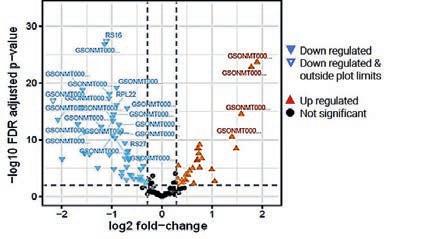
Analysis of the differentially expressed proteins showed that the small fish were actively metabolising, while the large fish were dealing with stress and maintaining homeostasis (Fig 2).
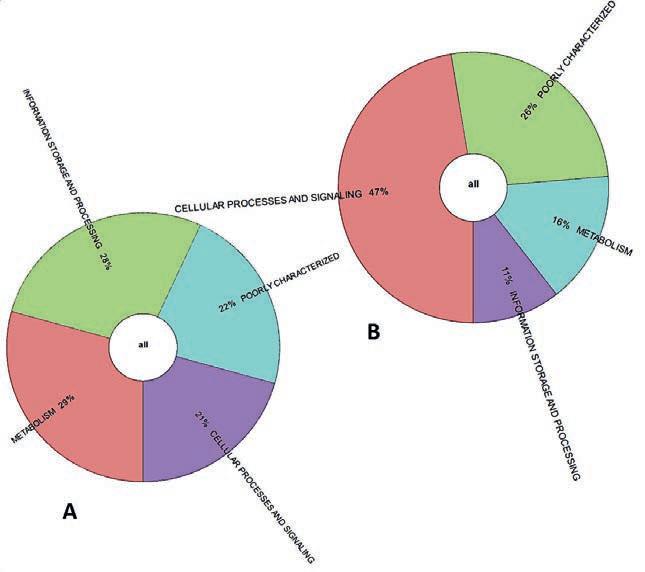
The study highlighted the difference in growth/metabolism between the two fish cohorts and posed the question: when will the small fish eventually reflect the proteome profile of the large fish? If so, are there interventions that could be implemented that would prolong the “small fish proteome profile”, thus resulting in additional growth of the large fish over time?
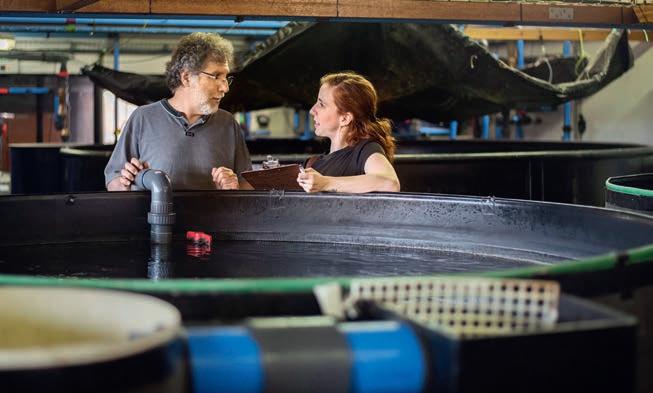
The study also showed that it was not economically appropriate
for the farm to continue feeding the large fish since they were not increasing in size and faced an increased risk of stress and disease the longer they remained in the raceway. These fish should have been marketed sooner.
The future of proteomics in aquaculture offers innumerable applications and utilities, from disease diagnosis and targeted drug delivery, to biomarker discovery for developing protein arrays and biosensors. Undoubtedly, “omics” technologies are becoming increasingly important in scratching below the surface of fish health and productivity management, particularly in ensuring sustainability in aquaculture.

SOME of Norway’s smallest political parties played a big part in voting through a controversial measure, for which the full impact has yet to be seen.

On 25 May, salmon farming, a key national industry employing thousands of people and a bedrock of the coastal economy, was hit with a punishing new tax. This was thanks to a handful of MPs on the far left, a few Liberals and a lone Patient Focus member, who was elected as part of a campaign to secure a new hospital for her home town.
Norway’s Labour-Centre party coalition was only able to get its highly controversial fiscal measure through parliament with the help of these groups, one of which wouldn’t be too unhappy if salmon farming disappeared altogether.

The ground rent tax or salmon tax, as it’s become known, is now law and likely to remain so until the next general election in September 2025.




It’s true that the headline rate for the new tax was reduced from 40% to 25% but most economic observers of the industry think figure is still too high.
The tax was due to apply from this year, but Prime Minister Jonas Gahr Støre said it will come into force at the start of 2024, so it may be some time before there’s an accurate indication of how
































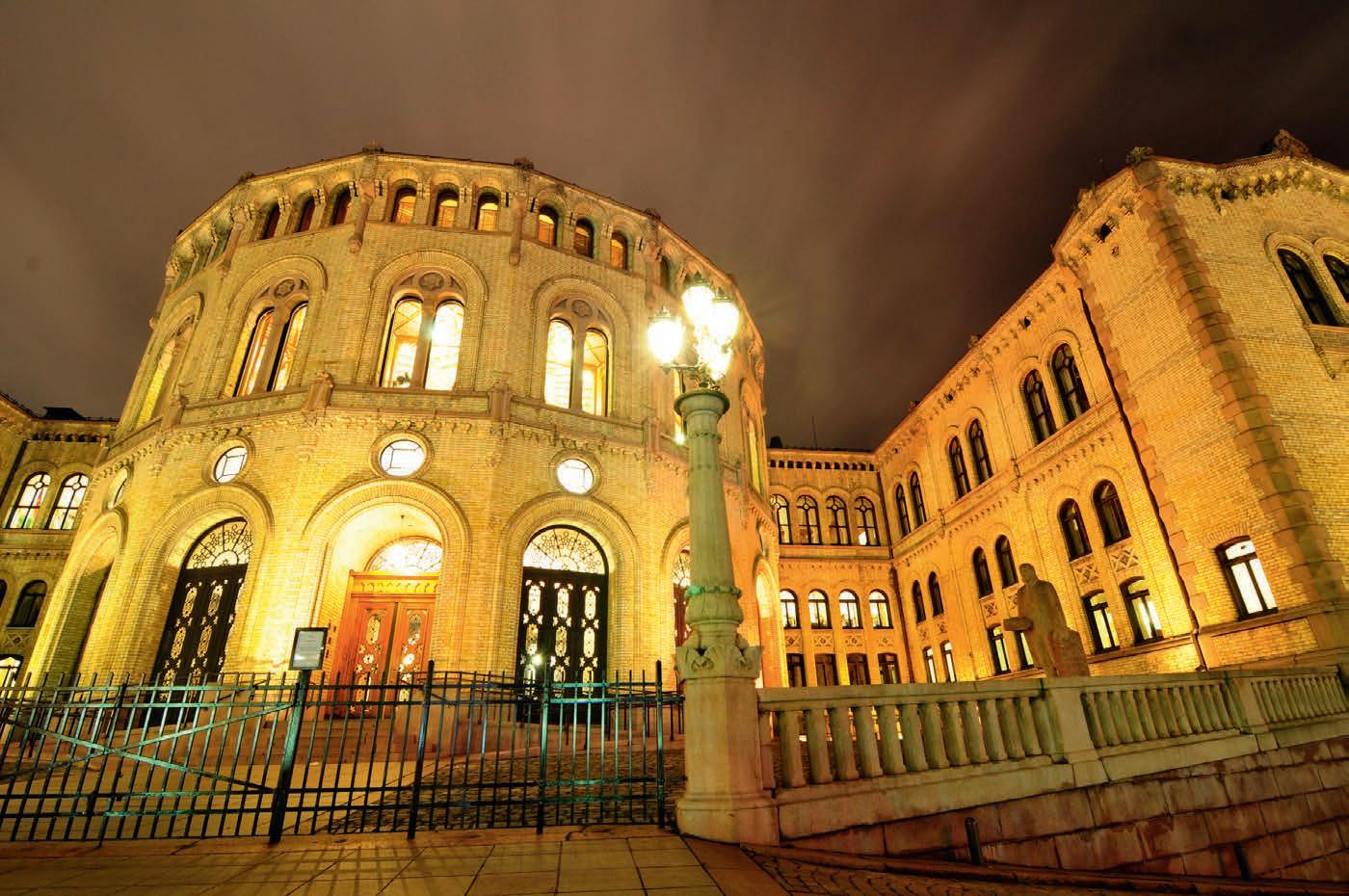
much extra companies will have to pay in addition to their regular corporation tax at 22%.

















So, for the larger fish farmers, the tax burden will more than double to 47% and it’s already having an effect.

Investment plans totalling billions of krone have been scrapped or put on hold, with many coastal workers at risk of losing their jobs.
The Labour Party, which prides itself on protecting the working community, now finds itself in the bizarre position of proposing legislation that directly threatens the livelihoods of many of its supporters.
It’s true that more money will go to coastal communities, but those who live there are asking: what good is a new school or sports centre if their jobs are under threat?
The tax is also highly selective. Land-based farms and smaller coastal facilities are exempt, which means the big names such as Cermaq, Mowi, SalMar and Grieg will be hit hardest.


These are the same companies that helped restore the fortunes of coastal towns when conventional fishing closed down or moved away in the 1980s.
This is an industry that barely existed five decades ago. Today, it employs well over 100,000 people, a high proportion in a country with a population of only six million. The UK equivalent would be around a million.
Months of argument following the announcement last year of a new levy on salmon farmers has left a bad taste the industry will not forget.
By Vince McDonagh
At 1.5 million tonnes a year, Norway’s aquaculture sector produces more than half the world’s farmed salmon, which is a staggering achievement by any standard.
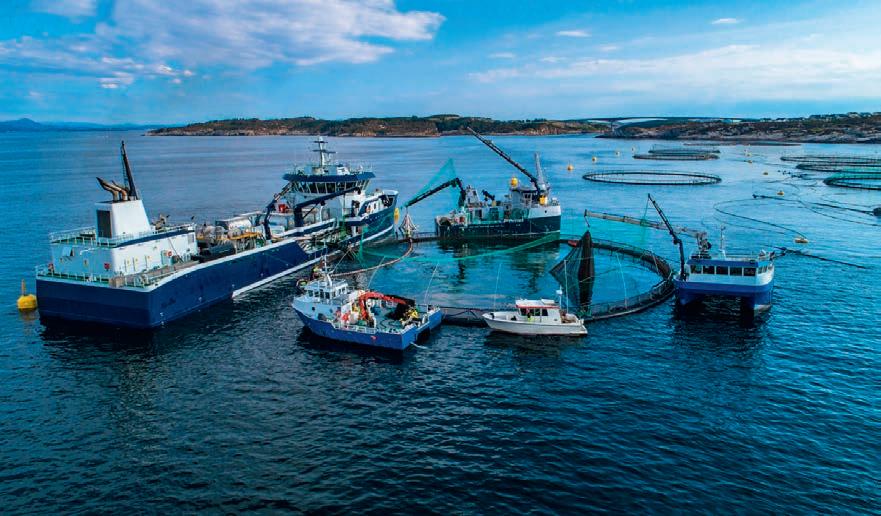
A new salmon tax was always on the cards. Four years ago, the then Conservative government appointed an independent committee headed by economics professor Karen Helene UlltveitMoe to look at new fiscal measures for aquaculture.
By a six-three majority, the committee advocated a 40% rate based on profits, using the argument that as the industry took up large areas of natural resource in the form of coastal waters, it should pay more.
Labour rejected that argument at the time, although it’s now using it to justify the new tax.
The Conservative party, trailing in the polls at the time, shelved the recommendation but something similar was always going to resurface at some point, even though it was hardly mentioned during the 2021 election campaign.
The problem is that the Norwegian economy doesn’t run on salmon alone. The government, like most others in Europe, has a huge deficit to fill, which includes high welfare and defence costs.
Norway, for example, is buying 52 of the new F35 fighter jets at US $75m (£59m) a throw. To put that in context the UK, which has a population 10 times the size of its Nato partner, is ordering 75.
The country’s elderly have just been handed a record £2,500 a year increase in their pensions, while there are persistent calls for more doctors, hospitals and health clinics. Yes, they’re in short supply in Norway too.
Someone has to pay. The super-profits from salmon farming over the past 18 months, which its leaders have flaunted on occasions, are coming back to haunt the industry, making it an obvious target.
The likes of SalMar and Mowi have given away billions in dividends to shareholders, many of them foreigners with no allegiance to Norway other than an opportunity to become richer.

While there’s nothing wrong with rewarding investors prepared to put money into an economically beneficial industry, the practice doesn’t go down well with ordinary households struggling to buy food or heat their homes – and in a country that straddles the Arctic Circle, the latter is proving expensive.
The industry’s case isn’t helped either by some private owners threatening to take their fortunes to tax havens such as Switzerland.
People will naturally ask about Norway’s huge oil wealth but most of that goes into a sovereign fund for future generations, rather than funding day-to-day spending.
The coalition government may be unpopular now, but outside fish farming areas, that’s more down to the high cost of living rather than protecting jobs. It could win back popularity if it can control inflation, so an outright Conservative victory isn’t guaranteed.
Conservative leader Erna Solberg has indicated she’ll keep the ground rent model in the short term, but has promised to reduce the rate to 15% before looking at alternatives.
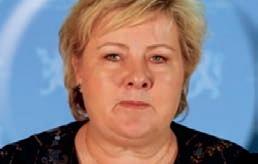


Mowi CEO Ivan Vindheim is pinning his company’s hopes on this pledge. He also says that he’s working to make his company more sustainable, but that needs money, which is now being taken away in higher taxes.

There’s probably fault on both sides – on the government’s part for sneaking its plan under the door last September and on the industry’s for taking too rigid a stance.
The tax is also discriminatory in that it penalises the big producers, but not smaller ones, although they both take up what’s deemed publicly owned coastal space.
It certainly looks set to slow the sector’s growth. Investment is set to move abroad, with Iceland likely to be the main beneficiary. Scotland too could win out so long as it remains relatively tax-friendly.
Many analysts believe that with the global economy facing recession and inflation cutting into company profits, some investment schemes would have been postponed anyway
There’s no doubt that the salmon tax issue has taken the shine off a once confident industry and a country that usually rides high in the international happiness league.
The 19th century United States Chief Justice John Marshall famously said: “The power to tax is the power to destroy.”




Let’s hope that doesn’t happen to aquaculture.
NEW bridges must be built to rebuild trust between the salmon industry, the authorities and the public, says Jørgen Christiansen, former Communications Director at Mowi in the days when it was known as Marine Harvest.

He says the most damaging effect of the debate on the ground rent tax isn’t the levy itself, but the polarisation, the lack of dialogue and the level of conflict it’s generated. These will, in the long term, do more damage than the effect of the tax itself, Christiansen argues.
The industry has also been exposed to much strong criticism in recent years, some justified but most of it grossly unreasonable, around issues such as antibiotics.
Christiansen says salmon farmers are involved in food production which, measured by all relevant sustainability parameters, is superb compared to other protein industries. Yet at times it’s been unfairly accused of being among the worst.

What good is a new school or sports centre if their jobs are under threat?
Uworkboat in the UK. The 7.5m Fluggaboat uses an Evoy 120hp continuous rated, electric outboard powered by a 63 kwh Lithium-Ion battery housed in the console. Charging is by an onboard charger, so it can be fully charged overnight or topped up during the day depending on the rate of use.

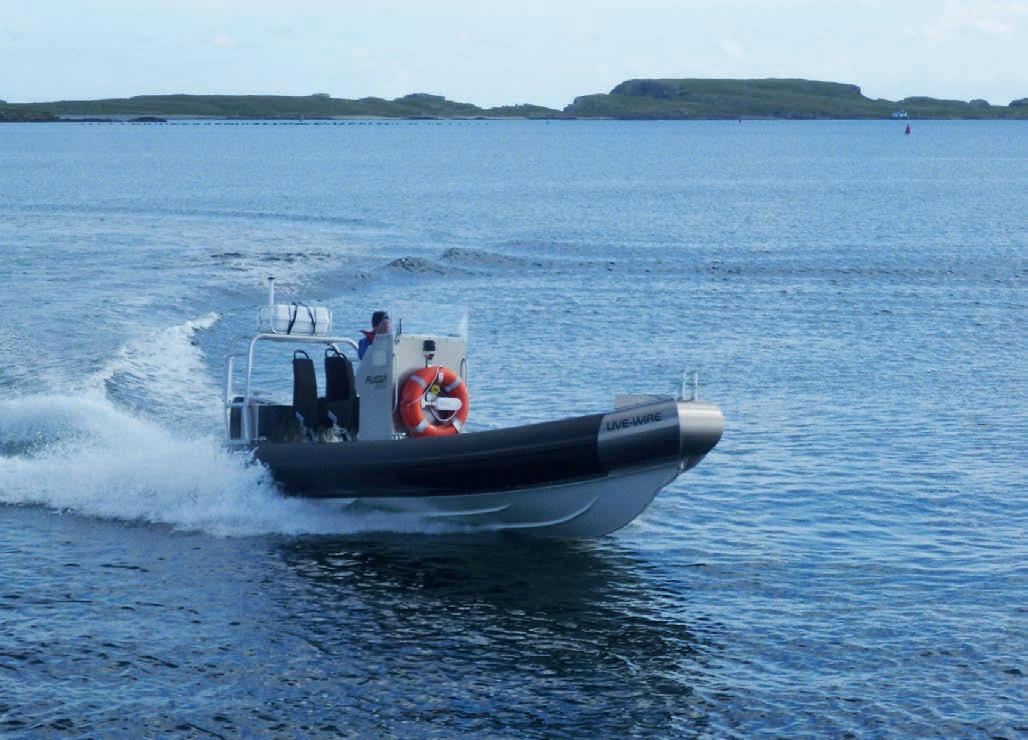
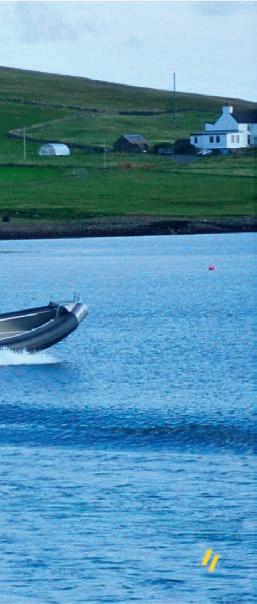
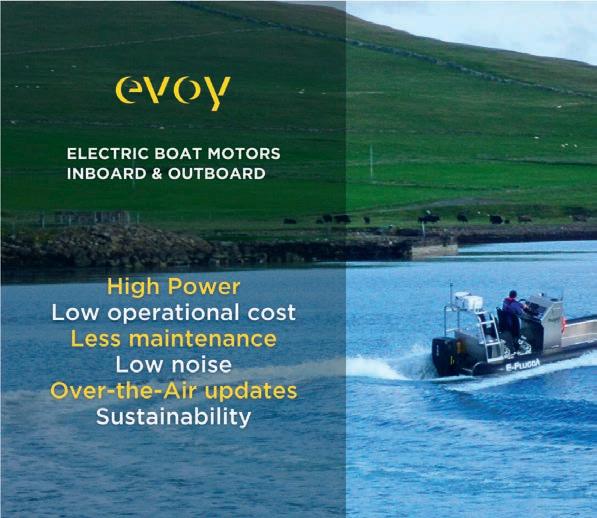
The vessel’s top speed is 30 knots but the most economical speed

Above: Cruise speed
Above left: Good handling
Below right: Evoy outboard
Opposite: Computer designed
is 24 knots, with a slower speed giving a slightly longer range. The touch screen dash panel gives a good indication of the battery’s state of charge and use; speed and available range are constantly updated and motor RPM and kw are also displayed. Different screens show the rate of charge etc. Below 20% the battery management system will go into a “get home” reduced power mode to enhance the range for the return trip to a charge point. “Range anxiety” is taken care of by the amount of information provided on the touch screen. Unst exhibited the boat at the Aquaculture UK show last May and the amount of interest was impressive. Until it can gain full MCA approval, the company says, it is not possible to take any orders for the electric boats, but it adds: “We are confident we have all the bases covered now. By the time this is published we should have the coding to MCA Cat 5 or 6. The most difficult part of the whole process was the coding. We like to code the boats before delivery; this way, they are ready to operate on delivery and the customer knows the boat is an approved unit.”
The propulsion system is by Norwegian firm Evoy and is 120hp continuous rated. It has built-in charging for the liquid cooled
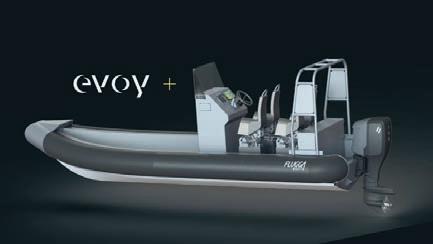
63KWH Lithium-Ion battery. The unit is monitored over the Internet for diagnosis and software updates via the touch screen.
Unst chose the Evoy system, with a liquid cooled battery and charger, as the best option for what was required. The company’s plan was to build and test so the range could be measured at different speeds, to be sure it will actually perform as specified.



Unst says: “We have found the boat has a best speed/range at around 24 knots, which was a nice surprise. To find we had achieved pretty much exactly what we planned was very satisfying.
“We have been asked whether we had any assistance to develop this




project. Unfortunately, even though we asked for help none was forthcoming. We decided that it was worthwhile going ahead anyway and our intention was to produce a perfectly viable boat and not just a token effort of an electric boat.


“There are those who announce that they are in the process of building the first all-electric boat, but we have actually built it. Being the first was a big problem as a lot of the regulation was new and finding the correct way forward was troublesome. With a lot of help from Mecal and guidance from the MCA, the boat is now ready for delivery.”
The all-electric boat is now going to be deployed to a salmon farm in Shetland which will allow the company to monitor it and potentially find ways to improve it further.


Unst says: “It will be interesting to see what improvements we can find, and the guys are keen to get to grips with it.”

We are confident we have all the bases covered



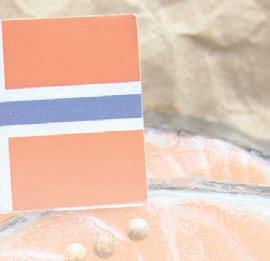 By Vince McDonagh
By Vince McDonagh
Norway’s Auditor General has pulled no punches in a highly critical investigation into the country’s salmon welfare record.
Rather than directing his displeasure against the salmon companies, however, Karl Eirik Schjøtt-Pedersen has gone for the Ministry of Fisheries and its associated agencies, accusing them of failing to act.
“They’ve not implemented sufficient measures to reduce ongoing challenges with diseases and poor fish welfare in the aquaculture industry,” he says bluntly.
This neglect, he maintains, has led to high fish mortality and considerable economic losses.



Schjøtt-Pedersen was formerly a Labour member of the Norwegian Parliament and served a stint as Fisheries Minister in the 1990s.

His report is hardly a surprise, given that three months earlier, the Norwegian Institute of Marine Research revealed that 58 million farmed salmon and trout died prematurely last year.
The National Audit Office report has gone one step further by recommending measures that can be adopted to remedy the situation.
Some of them might also be worth study by other northern salmon farming countries such as Iceland, Scotland and the Faroe Islands.
Aquaculture is Norway’s second largest export earner, with a turnover of almost NOK 80bn (£6bn) a year. It sells fish to many countries where animal welfare is becoming an increasingly

important issue for consumers.
The audit office has identified where some of the problems can be found. “Mortality is particularly high after the fish has been treated against salmon lice,” says the report.


“The use of burdensome drug-free methods, such as hot water and rinsing the fish to treat [them] against salmon lice, is increasing. The fact that it has become more common to release fish in winter, when the water temperature is low, also contributes to increased mortality.”
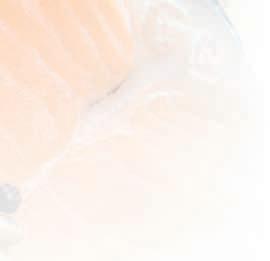
The report continues: “Fish that die before being slaughtered cause financial losses. Disease and wounds also reduce the sale value of the salmon. The National Audit Office’s investigation shows that 91% of the salmon was of the best quality in 2017. In 2022, it had been reduced to 86%.
“The diseases which today cause the biggest challenges in terms of mortality, economic losses and reduced fish welfare are not notifiable to the authorities. This weakens the authorities’ basis for considering preventive measures to prevent further infection.”
Auditor General Schjøtt-Pedersen adds: “The measures introduced by the Ministry of Trade and Fisheries to prevent infection and the Norwegian Food Safety Authority’s follow-up of vessels that transport fish between facilities are not enough to reduce the challenges of disease.
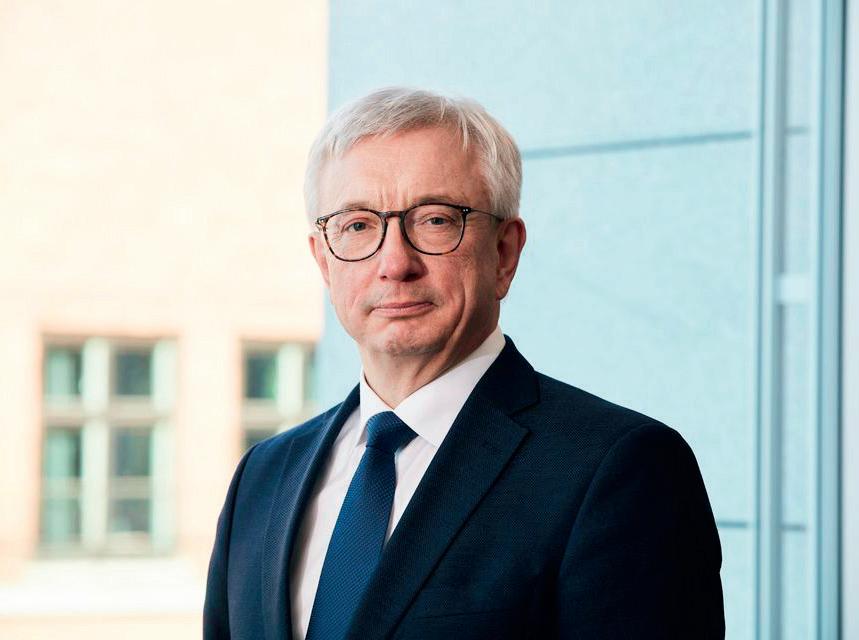
“The authorities have not implemented a sufficient precautionary approach to new disease challenges.”






The National Audit Office’s investigation also notes that new technology and production methods that weaken fish welfare have become widespread.
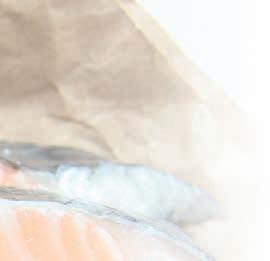
The Food Safety Authority [?? or audit office] has previously said that it believes that much of the development has taken place through trial and error, without the breeders having sufficiently documented the welfare consequences for the fish.



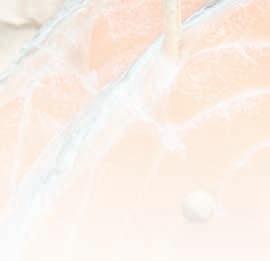

The audit office report says the authorities aren’t sufficiently following up the negative consequences that new technology and methods of operation can have on fish welfare.
There was also insufficient co-operation on regulations and supervision between the Food Safety Authority and the Directorate of Fisheries.
He points out the industry has the main responsibility for safeguarding the health and welfare of the fish.
The National Audit Office believes that the authorities must set clearer requirements for farmers’ internal control and risk management, and they must strengthen follow-up through supervision.
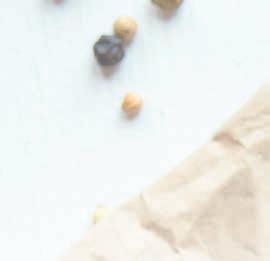
the Ministry of Trade, Industry and Fisheries and the Food Safety Authority had implemented or were working on several measures to improve welfare, adding that the use of antibiotics in Norway has been at a low level for many years.
The report highlights a number of areas where the Ministry of Fisheries has either failed or which need to be improved, for example it says facilities are too close together, particularly in western Norway, which has the highest percentage of deaths.
The Norwegian Food Safety Authority must also closely monitor outbreaks of infectious salmon anaemia (ISA), the report says, adding that, along with pancreatic disease, this must be reported to the authorities.
The National Audit Office has set out a number of recommendations to the Ministry of Trade, Industry and Fisheries including:
• ensuring that that the Norwegian Food Safety Authority develops increased risk-based supervision and that it and the Directorate of Fisheries strengthen cooperation on the development of regulations, data management and supervision;
• developing regulations for risk management and internal control in the aquaculture industry;
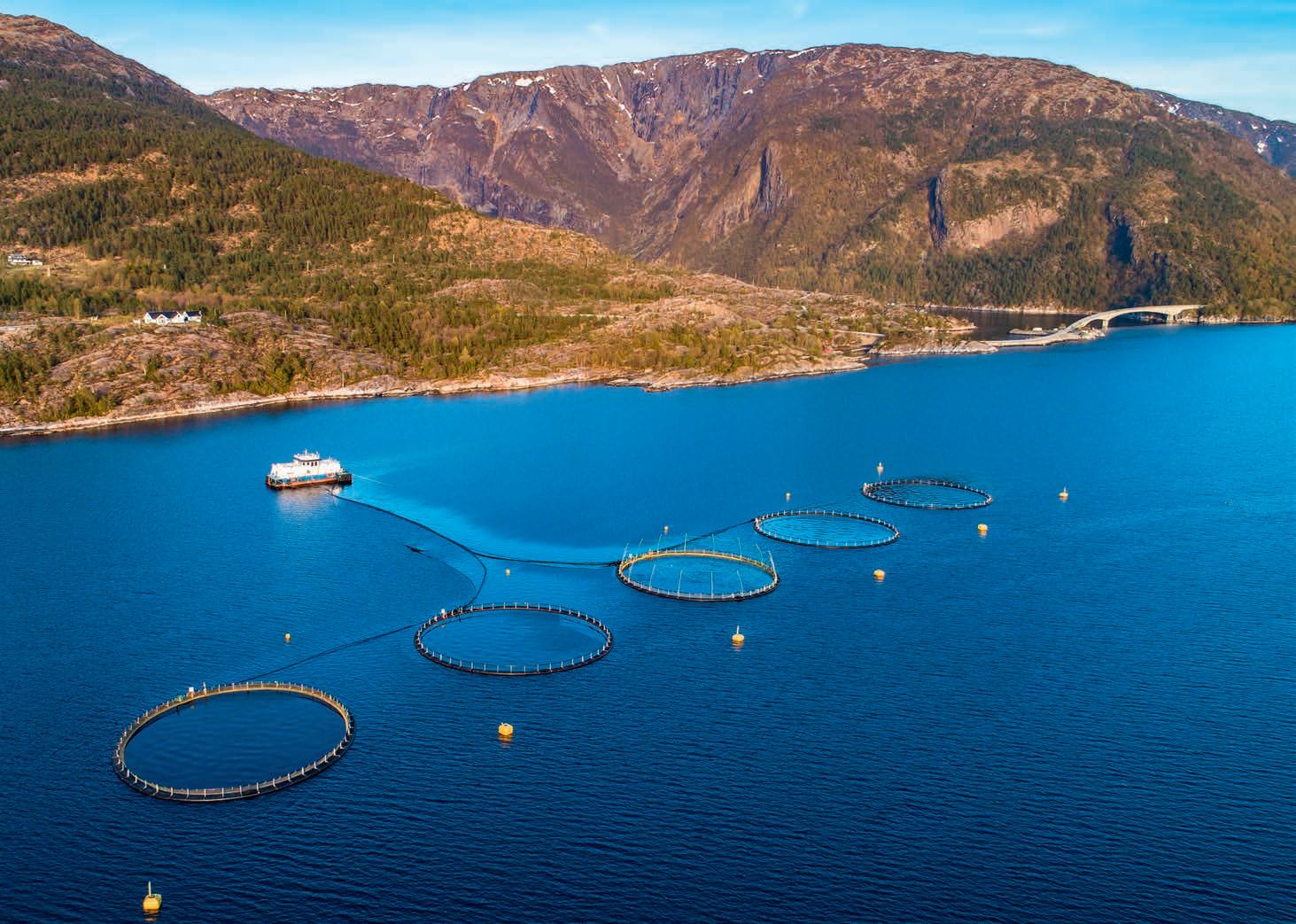
• considering the development of functional requirements for standards for facilities and equipment to help safeguard fish health and fish welfare, with requirements for documentation, monitoring and certification;
• adapting reporting requirements to ensure that the Norwegian Food Safety Authority and the Directorate of Fisheries have a better basis for risk-based supervision; and
• systematically monitoring how the regulations contribute to preventing the spread of disease and assessing the need for changes to the regulations.

NORWAY’S Animal Protection Alliance has accused authorities of failing to follow up problems in the past and says the report should now be the trigger for them to demand proper improvements.
Communications Manager Live Kleveland says the alliance has long pointed out that the current regulations for growth don’t take fish welfare into account.
A one-sided spotlight on salmon lice, she maintains, has led to the rapid development of cowboy treatment methods, which have created a big problem for fish welfare.
Norway now needs a system that allows those companies who take fish welfare seriously but who also punish unscrupulous businesses, she adds.
The current regulations for growth don’t take fish welfare into account
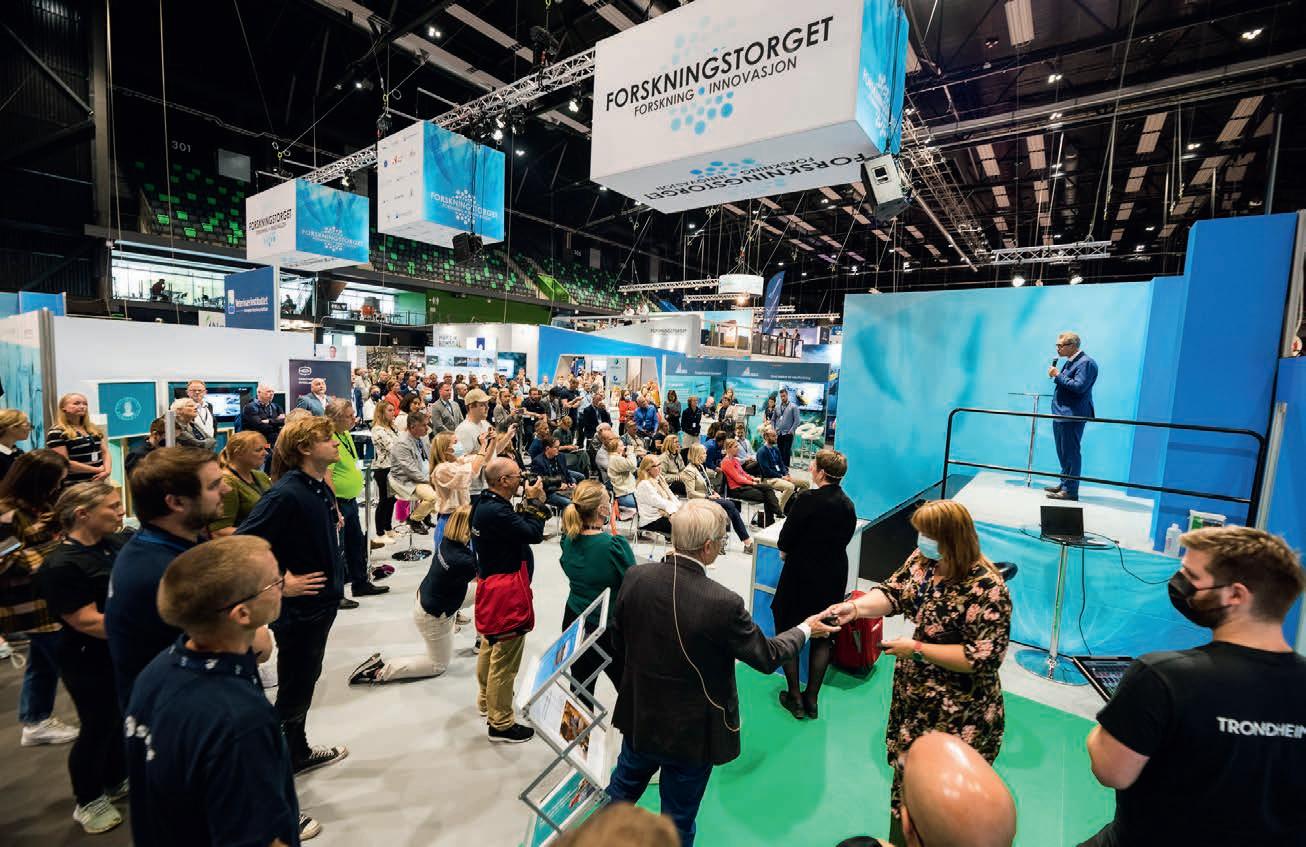

Once again the Norwegian harbour town of Trondheim is set to play host to aquaculture’s biggest trade show. Aqua Nor, this biennial exhibition and conference, is organised by the Nor-Fishing Foundation, and over 21-24 August it will bring together leading figures from the sector, not only from across Norway but from around the world.
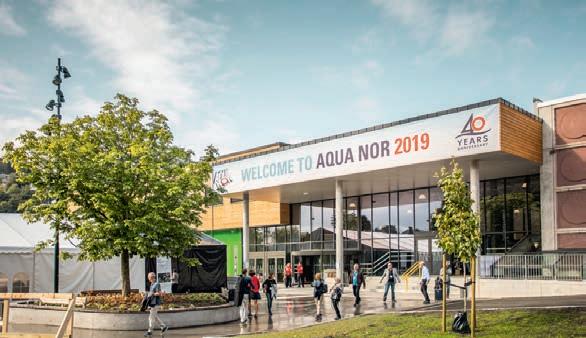
The last show, in 2021, saw around 28,000 people attending and this was despite Covid-19 travel restrictions that meant many people could not get to Norway – including anyone based in the UK.
This time the organisers are expecting a full house in Trondheim’s Spektrum exhibition
centre. The show is bigger than ever, with tighter maximum sizes imposed for the stands, in order to fit more exhibitors than ever, around 700.
Display spaces outside the exhibition centre and, for waterborne products like vessels and pens, in the harbour alongside the Spektrum,
will make it possible to see even more products and get hands-on with them.
Over the last few years, previous shows have included a conference programme and have run over four days, with Friday as the “student day”. This time the exhibition will take place over just three days, starting on Tuesday with Thursday as the student day.
Ahead of the trade show, a oneday conference programme will be held on Monday 21 August, organised in collaboration with SINTEF and the Norwegian technical University NTNU, with the theme “More food from the oceans. Contributing to the green shift through expanding aquaculture production”.

The Food and Agricultural

Organisation (FAO) in Rome is also cooperating on the conference programme.




As well as finfish farming, speakers at the conference will cover seaweed production, shrimp production and low-trophic food production among other topics.
During the exhibition there will be around 80 events, including scientific presentations in the Research Plaza, and events taking place outside the exhibition centre itself

Erik Hempel, Director of Communications for Aqua Nor and the Nor-Fishing Foundation, says: “The exhibition is a ‘display window’, a professional programme and a great chance to network. People like to get together!”
After the innovations brought in two years ago – when many people were unable to get to Trondheim – the show is now “hybrid”. Those not attending in person can see online highlights in the “TV show” format introduced in 2021, catch up online with specific debate events or set up one to one meetings with exhibitors. Even now, with Covid restrictions largely lifted, Hempel says, some people may find cost and visa restrictions make it easier to follow the show online.
For those at the show in person there is also a programme of social events, including a Grand Dinner on the opening day, 22 August, and a “Street Food and Mingle” party at the Clarion Hotel on 23 August. Authorities, organisations and private companies alike will also make use of the opportunity to organize receptions of various kinds, from shrimp parties and buffets to cocktails receptions for foreign visitors. In addition, restaurants in Trondheim have special offers for the visitors and exhibitors during the week.
Looking forward to Trondheim
Aquaculture technology business Smir is one of the many Norwegianbased business exhibiting at Aqua Nor. Marketing Manager Roy Schjølberg Brevik says: “The name ‘Smir’ is a traditional Norwegian word that can be translated into English as ‘forge’ – the process used by a blacksmith to create new and useful solutions.
“So, our key message at Aqua Nor is that we are an innovative and flexible supplier that the farmer can approach if he/she has an idea or a challenge that must be solved.”
Smir will be showcasing, among other things, the company’s new “Smirfeeder”, a gentle and efficient waterborne feeding system that comes with major cost- and environmental benefits, as well as the Hydrolicer sea lice treatment.


Brevik adds: “We are also working on a concept for a semi-closed containment system and hope to announce this to the market later this year.”




Karina Poulsen, Marketing Manager with DESMI says she and her colleagues will be promoting the company’s UV treatment solutions and also its energy-efficient pump technology.
Priorities for the company at Aqua Nor will be, she says: “Being there to network and promote our brand and aquaculture solutions with existing and potential local customers and rest of the world.
“Also, getting market insight. What is new, what is ‘hot’ and what sets the agenda for the fish farming industries.”



New Zealand-based Boss Aqua, which offers innovative net-cleaning technology for the fish farming sector, will not be taking a stand this year but Director Andy Fairhall will be attending as a visitor.

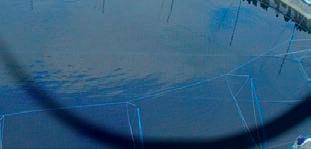











attending as a visitor.
He says: “Aqua Nor is an important event bringing much of the world aquaculture community together in the same place, allowing maximum opportunity to network and discuss recent innovations and opportunities for business.”
It will also be a great opportunity to spread the word about the company’s AutoBoss V4 Smartbot” net cleaning robot, which launches very soon.
Aqua Nor takes place over 21-24 August in Trondheim, Norway. For more information see aquanor.no/en/


This innovative platform incorporates innovative sensing technology that captures essential data, including oxygen levels, pH, temperature, conductivity, and physical acceleration/shock experienced during processing operations. By integrating acceleration measurements with comprehensive water quality monitoring, Sensor Globe aims to revolutionise fish welfare practices and improve overall survival rates in the aquaculture industry.

EVONTA-Technology GmbH, Dresden, Germany, was shortlisted for its fully automated device for non-destructive testing for salmon and trout eggs in hatcheries, that enables the capture of tomographic image data. The scanned fish eggs remain viable and are examined in their natural state. EVONTA’s Optical Coherence Tomography (OCT) has been tested in collaboration with Aqua Gen AS.
Using this system, the scanned fish eggs remain viable and are examined in their natural state, so they can be examined without, as is currently the case, testing a sample which needs to be destroyed as part of the process.
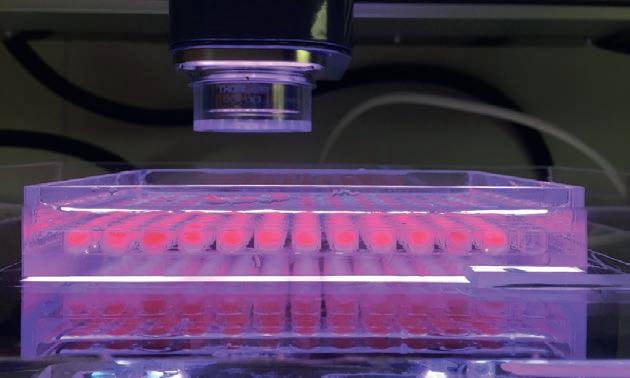
Asensor system to monitor fish health in pens, a nondestructive testing system for salmon and trout eggs and a robot designed to clean fish tanks are the shortlisted finalists for the Aquaculture Innovation Awards.
The winner will be announced at Aqua Nor in Trondheim on Thursday 24 August.

The three were selected from among 29 candidates. The jury consisted of Kari Lisbeth Fjørtoft from Hofseth International AS (previously Møreforsking AS), Oddvar Staulen from Innovation Norway, Kjell Maroni from Norwegian Seafood Research Fund (FHF) and Jan Henrik Sandberg from The Norwegian Fishermen’s Association.

Marin X Inc. (Sensor Globe), based in Nova Scotia, has developed a one-of-a-kind platform that employs acceleration measurements alongside water quality monitoring to enhance fish welfare and reduce mortality rates during processing operations.


The Sensor Globe IoT welfare platform offers real-time monitoring capabilities, allowing fish farmers to access crucial indicators and water quality parameters at various depths and locations.
EasyX AS, based in Bergen, Norway, has developed the VCR robot (Vertical Cleaning Robot) for cleaning and disinfecting fish tanks in hatcheries and tanks in land-based fish farming. The robot is capable of moving vertically on smooth surfaces – regardless of material. It also eliminates several environment, health and safety challenges, such as exposure to chemicals and heights.
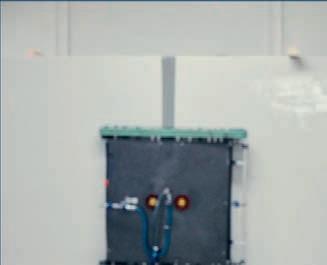
Production efficiency is also increased. The robot is equipped with a foam nozzle and spray wand, which among other things reduces chemical consumption.
A prototype has been tested by pilot customers and partners. Currently, this is the only robot on the market for cleaning empty tanks and vessels.

This is the only robot on the market for cleaning empty tanks





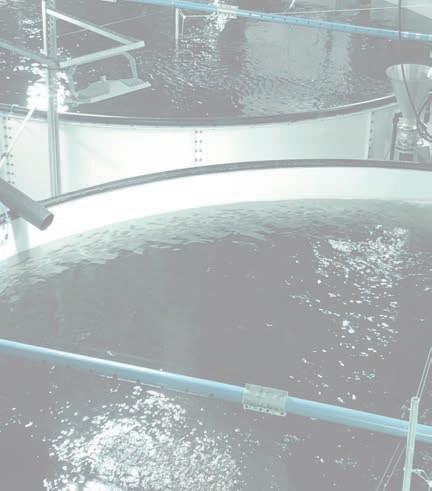










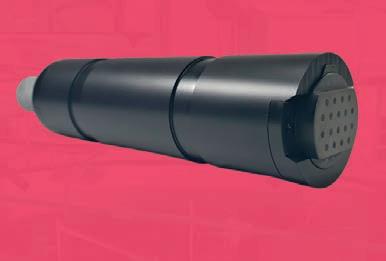





Team Scotland will be back at Aqua Nor in force this year, with a specially designed Scottish Pavilion under the auspices of Highlands and Islands Enterprise the Sustainable Aquaculture Innovation Centre (SAIC) and the Marine Directorate of the Scottish Government. SAIC hosted a stand to promote Scotland at Aqua Nor in 2019, but this is the first time Scottish aquaculture businesses have had a dedicated full-scale pavilion since the 2017 show. In 2021, Covid-19 restrictions meant that visitors from the UK were not able to visit Trondheim in person.
This year, the Scottish Pavilion will provide a showcase opportunity for a range of aquaculture-related Scottish businesses. It will also be the focal point for meetings, presentations, opportunities to enjoy excellent Scottish seafood and a programme of events highlighting Scotland’s contribution to the aquaculture world.



The official opening of the Pavilion, on Tuesday 22 August, will include an address from Mairi Gougeon, Cabinet Secretary for Rural Affairs, Land Reform and Islands in the Scottish Government. Heather Jones, CEO of SAIC, said: “The Scottish Pavilion at Aqua Nor will be a great showcase of all that Scotland has to
offer. We will have a broad range of organisations exhibiting, including researchers from world-leading academic institutions and innovative companies bringing new technologies into the sector. We are excited to share everything that Team Scotland can do to help aquaculture maximise its economic impact, while minimising its environmental footprint, and look forward to seeing everyone there.”

Represented this year in the Pavilion are
• Aqualife Services Ltd – fish health professionals, based in Stirling.



• Brimmond – lifting and cranes specialists.
• DSM – international animal health and nutrition business.









• Fish Farmer Magazine – publishing a monthly magazine and website for the aquaculture sector.

The Scottish Pavilion at Aqua
Nor will be a great showcase
FNC8 and FNC5 deliver fast, thorough and efficient net cleaning solutions in an economical and safe manner. Standard and tailor-made ROV systems can work efficiently 24 hours a day carrying out inspections, repairs, maintenance and control of installations control of installations down to a standard depth of 1000m – for deeper installations down to 10,500m- available on request
FNC8
AKVA FNC8 Multi Cleaning Tool adds even more cleaning abilities to the FNC. With the unique clamp design, it allows the FNC to clean ropes, chains, pipes, etc. using water from your existing high-pressure pump.
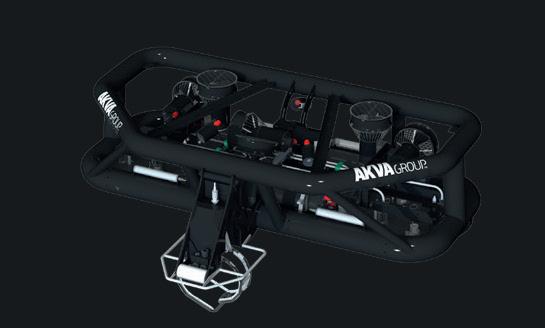
ROV DRILL ROCK
Standard interface for SUB-fighter ROV 15k & 30k
Hydraulic drill for Ø75 mm hole
Neutral buoyant for easy ROV handling subsea


Frame can be extended for long hole drilling
Remote controlled from the ROV pilot console
We supply innovative ROV systems to the underwater sector. The aquaculture industry is constantly developing; the pens are getting bigger and deeper and the temperature in the sea is changing. This places increasing demands on divers who inspect visually and collect sediment samples.
For more information: www.akvagroup.com/rov-systems or scan the QR-code

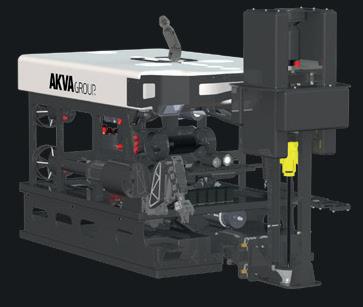
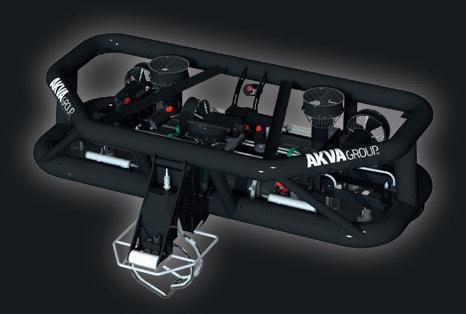

• GenusWave – predator and sea lice protection systems.
• I and C Process Solutions Ltd - water and waste water optimisation, treatment and recovery.






• Institute of Aquaculture – research, education and training centre of excellence at the University of Stirling.
• KelpRing – producer of custom-made hides for cleaner fish.

• Krucial – telecommunications and a platform for the digital fish farm.


• MiAlgae – developing algae-based aquafeed as an alternative to wild fish.
• Moredun Scientific – Edinburgh-based body promoting livestock health and welfare through research and education.
• Otaq Group – marine technology business.
• Otter Ferry Seafish Ltd – specialist hatchery for cleaner fish and halibut.
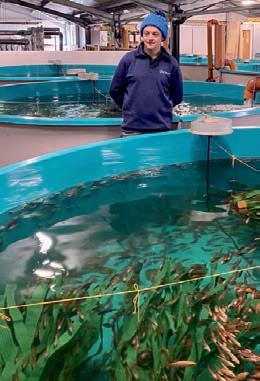
• SAMS Enterprise – commercial arm of the Scottish Association for Marine Science.



• Tritech International Limited –manufacturer of robust subsea sonar equipment.
• Tritonia Scientific Ltd – underwater photogrammetry specialists.
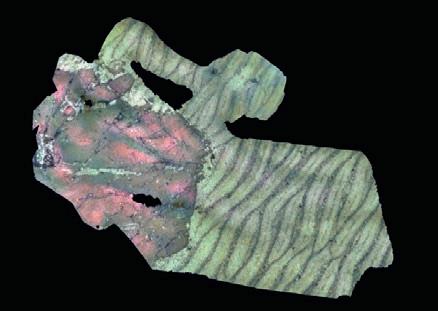


• Underwater Contracting Ltd (UCO) –diving services and remote operated vehicle (ROV) business.
• Veramaris – joint venture of DSM and Evonik, producing omega-3 fatty acids for animal nutrition from microalgae.
Other leading Scottish-based companies will be taking their own stads at Aqua Nor this year, including aquaculture technology business Ace Aquatec, genetic selection specialists Xelect and aquaculture and fisheries supplier Gael Force Tritonia Scientific is one of the companies exhibiting in the Scottish Pavilion. Speaking ahead of the show, a spokesperson said: “Our use of georeferenced 3D photogrammetry provides a step change in how underwater features can be monitored and mapped. The results from initial industry-relevant surveys show high potential for adoption of the technique as a regulatory standard in
10:30-11:30 Official Aqua Nor opening
12:00-13:00 Official opening of the Scottish Pavilion, including an opening address by Mairi Gougeon, Cabinet Secretary for Rural Affairs, Land Reform and Islands, and exhibitor spotlight

14:30-15:00 Presentation on LPAS (Live Plankton Analysis System) focused on providing early warning of harmful algae blooms, Richard Beesley, Chief Commercial Officer, OTAQ Group
15:30-16:00 Video presentation + Q&A on GenusWave’s Targeted Acoustic Startle Technology and Sea Lice Defence Technology
Throughout the day: more themed presentations and innovation showcases - TBC DAILY WHISKY PRIZE DRAW WITH FISH FARMER MAGAZINE
10:30-11:30 Innovation Nations: exploring how different aquaculture-producing nations fund, drive, adopt and commercialise innovation. International panel members share their experience, challenges and opportunities, and discuss how collaborative approaches towards innovation will drive forward sustainable growth in aquaculture.
11:30-12:30 VIP Brunch Reception with Cabinet Secretary Mairi Gougeon, exhibitors and guests
14:00-14:30 Presentation on the National Aquaculture Technology and Innovation Hub, Prof. Simon MacKenzie (Pictured right), University of Stirling’s Institute of Aquaculture
15:00-15:30 Infectious disease models to support the development of fish health products, Rhona Macdonald and Bill Roy, Moredun Scientific
Throughout the day: more themed presentations and innovation showcases - TBC DAILY WHISKY PRIZE DRAW WITH FISH FARMER MAGAZINE
10:30-11:00 Marine and Freshwater Facilities; Nutrition Analytical Service (NAS), James R Dick, Technical Manager, Faculty of Natural Sciences, University of Stirling


Throughout the day: more themed presentations and innovation showcases - TBC DAILY WHISKY PRIZE DRAW WITH FISH FARMER MAGAZINE
Scotland, with support from both producers and regulators. “Aqua Nor provides an opportunity to introduce and demonstrate our processes to a new and wider audience.”

The spokesperson added: “We are looking to connect with any company or regulatory body that has an interest in more advanced but cost-effective methods of seeing, measuring, and monitoring seabed features or any assets maintained in the underwater environment.”






Meet us at the Scottish Pavilion, at STAND D-334





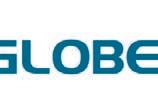

Detroit Shipyards is one of the most important service providers for the newbuild and ship repair markets in South America. With two units located on both sides of the continent, the highly qualified team makes the group able to offer the best experience to shipowners on the Pacific and Atlantic coasts.
Present in the market for more than 30 years, and with an order book of close to 200 newbuild projects, the shipyards specialise in mediumsized vessels and in the development of projects for different markets, such as tugboats, ferries, offshore support and, increasingly, for aquaculture support vessels for the salmon and trout sectors.

With numerous developments for the southern Chilean salmon market, a high degree of innovation and projects that stand out for operational reliability, Detroit Shipyards offers vessels that meet the





latest international requirements and are able to perform worldwide.


The group also owns a significant fleet. In the last few years, through extensive interaction with operators, Detroit Shipyards has been involved in different pontoon and wellboat projects and has developed customised solutions that have resulted in extremely safe and efficient vessels, raising the operational standard in the region.
Keeping its focus on customer and market demands, Detroit Shipyards constantly works to develop new products, having recently launched the Pontoon 600T, with the first unit already under construction for Mowi, and the Wellboat 3000, presented to the market in 2022, which is aimed at the salmon market inside Chile and abroad.

For more information contact:

Chile - Puerto MonŁ KM. 13 Camino Chinquihue (65) 2482300 www.detroit.cl/ asŁlleros jrmr@detroit.cl
Brazil - Itajaí, Rua César Augusto Dalçóquio, Nº 4500 (47) 2103-8500/ www.detroitbrasil.com.br jzfbra@detroit.cl

Detroit is increasingly recognised as a trusted name in the maritime sectorTop: Wellboat 3000 Above: Pontoon 600 Left: Wellboat opera�ng in Chile.
Global consumers increasingly prioritise the wellbeing of the fish they eat. This pivotal aspect remains at the forefront of Askvik Aqua’s mission as it provides innovative solutions for the aquaculture industry.
“At Askvik Aqua, we offer a range of cutting-edge products for the aquaculture industry; from electrofilters designed to mitigate parasites in wastewater and intake pipes, and crowding nets that collect sea lice during fish handling, to our novel fish stunning systems that effectively and rapidly induce anaesthesia in fish,” states Steffen Kildal, CEO of Askvik Aqua.
Kildal explains that Askvik Aqua has developed a robust and scalable technology that enables swift and efficient stunning of fish, directly in the pump lines. This technology is integrated into all Askvik Electro-Stunners, the flagship product line of the company.

Askvik Aqua is also receiving enquiries for stunning systems designed for




other species such as trout, sea bass, king prawns, and mackerel, both within Norway and beyond.
The technology utilised in Askvik Electro-Stunners has undergone extensive testing in pilot and production facilities, successfully meeting the stringent requirements for rapid stunning in Norway and the European Union.





“Our system can be utilised in onshore and offshore fish farms, hatcheries, and vessels, alongside grinders or other approved killing methods. It serves to stun fish prior to slaughter, as well as for

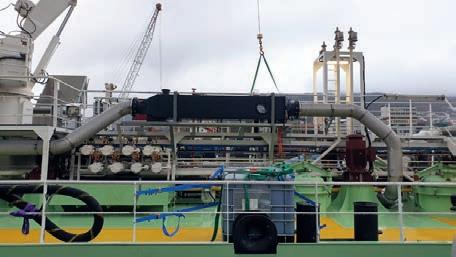
New Zealand’s BossAqua™ are experts in net cleaning robotics with AutoBoss™ units used in fin-fish farming operations worldwide. A combination of high e ciency, reliability and autonomy with fantastic global service and support makes AutoBoss™ the obvious choice to reduce net cleaning costs.

The AutoBoss™ has gained proven, ongoing success globally, with customers operating multiple machines across large scale operations. With a strong focus on R&D BossAqua™ continues to innovate and develop their flagship AutoBoss™ product taking automated net cleaning to the next level.
“We are very excited to be expanding our distribution network, allowing enhanced customer support, introducing & delivering remarkable net cleaning outcomes” - Andy Fairhall, BossAqua™

selectively removing fish due to illness or other production challenges,” Kildal explains.
In addition to ensuring humane slaughter, Askvik Electro-Stunners streamline the process. Stunning occurs within the water flow, without the need for fish handling, so the fish does not have to be removed from the water before electro-stunning.
“The continuous development of systems that enhance animal welfare is highly commendable. This not only applies to Askvik Electro-Stunners but also to our other novel products such as the catchLICE crowding nets and the Askvik Electrofilters, both of which contribute to reducing disease transmission and the need for excessive treatments. This results in improved sustainability and reduced impact on both fish and the environment,” he emphasises.
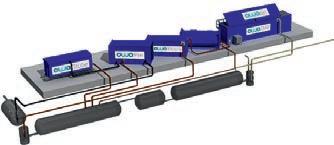


operation even when working in harsh environments. They are protected against oxidation, so are suitable for saltwater and outdoor industrial applications such as aquaculture, depuration, lobster hatcheries and fish farming.
TradeMark Aquatics Ltd has an extensive working knowledge of the TECO aquarium and commercial chillers, both old and new, and has a fully equipped workshop where the company’s TECO-trained, F-Gas certified technicians, with over 30 years’ experience, can diagnose problems and provide a full performance report and undertake any service or repair for a TECO Chiller.
TradeMark Aquatics Ltd is the sole UK and Ireland Distributor for the TECO TK range of chillers.
TECO Refrigeration Technologies is now the leader in the aquarium refrigeration field and all their chillers have high levels of COP (Coefficient of Performance). Its TECO TK R290 chiller line combines greater cooling capacity with reduced energy consumption. The use of an environmentally friendly gas reduces global warming potential and emissions to an unprecedented low and has further increased energy efficiency by up to 50%.
TECO’s larger commercial heat pump units are designed with a solid structure and their vertical ventilation ensures optimal
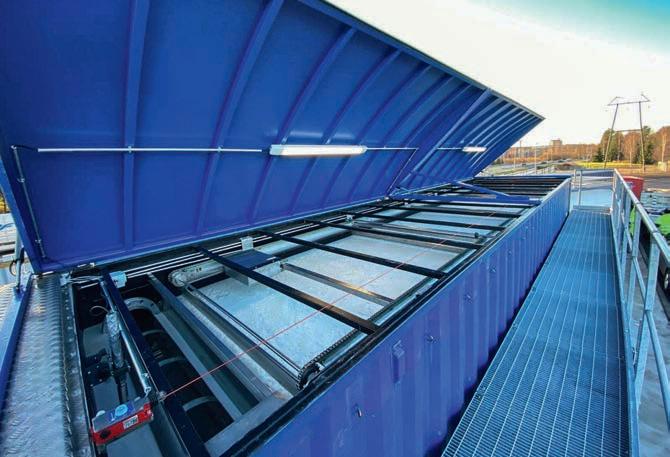
With the exception of TECO’s heat pump units, which are available on special order, all of the chillers are usually available from stock in TradeMark Aquatics’ Midlands based warehouse. Please see the TradeMark Aquatics website trademarkaquatics. co.uk to request a trade login
Above: TECO technician on site
Right: Chiller range from 250w to 15kW
Owatec AS is an environmental cleantech company specializing in wastewater and sludge management in the fish production industry in Norway.
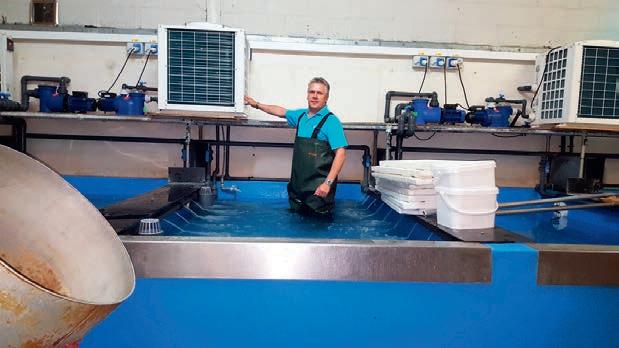
Our cleantech built-in sea containers allow us to find a suitable solution to various water and sludge management challenges, by combining different units with different purposes. Automation and remote control optimise chemical consumption and maintenance, which makes it possible to run processes even in remote locations. Cost-effective solutions with modular product portfolios minimise the need for infrastructure changes. With Owatec AS’s solutions and expertise, we will tackle the upcoming European Union regulations in a way that is environmentally friendly and cost-effective. To find out more, see our video at www.youtube.com/ watch?v=3SZ9veMWj6E or read the online brochure at www.esitteemme.fi/Owatec/WebView/
Contact: CEO Jaakko Pellinen +358 50 5916109 Jaakko.pellinen@owatec.fi www.owatec.fi
Antti Mäkikyrö +47 404 69657 antti.makikyro@owatec.fi
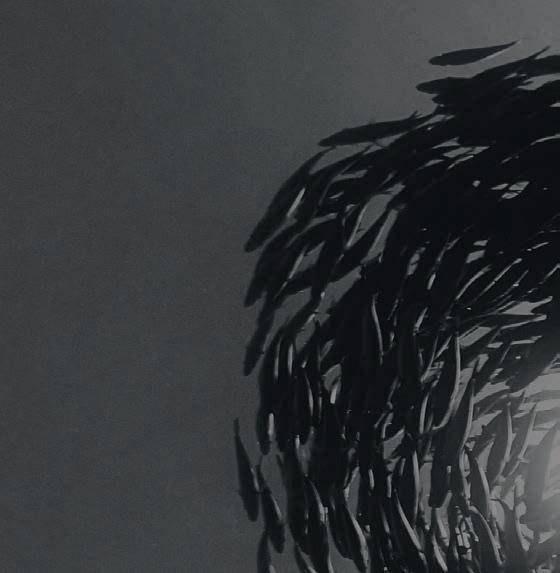
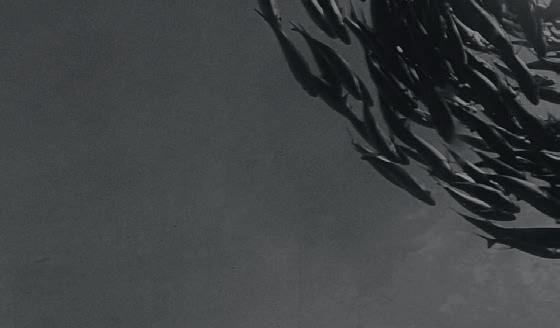
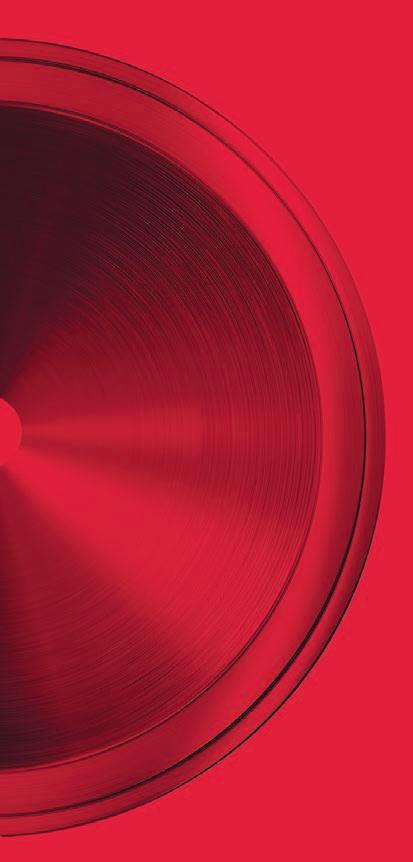


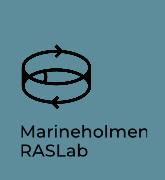







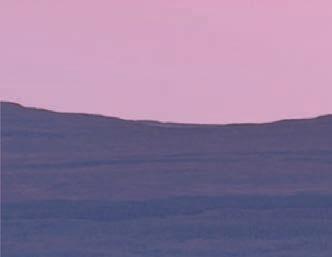
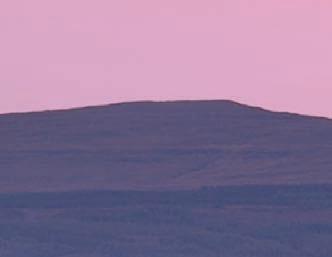
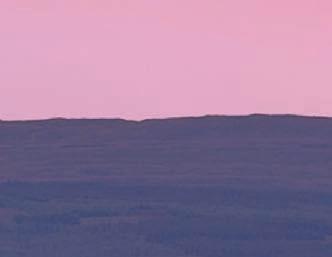

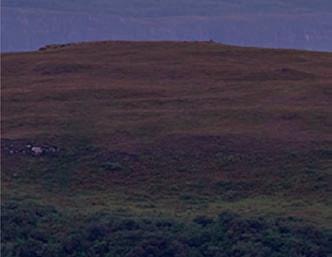





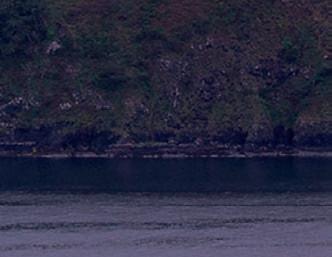

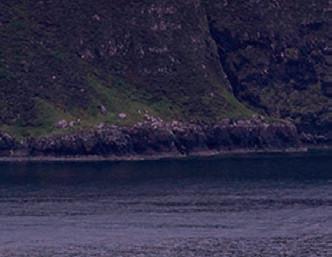

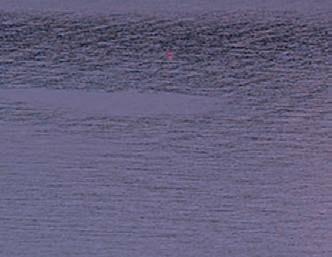
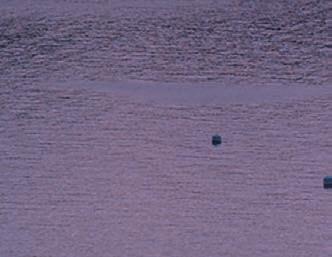
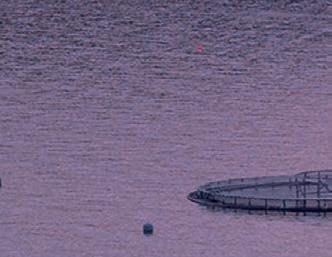

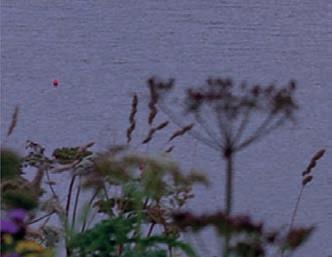
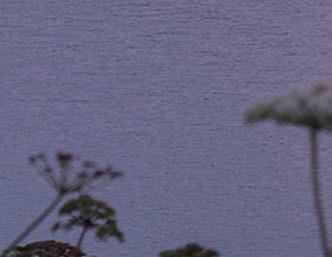
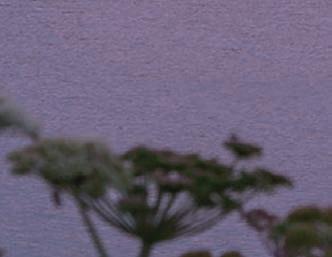
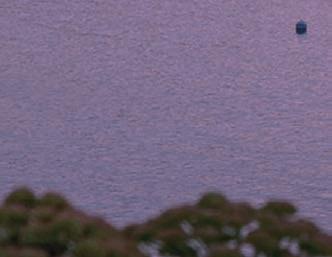
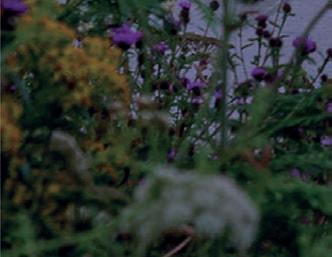


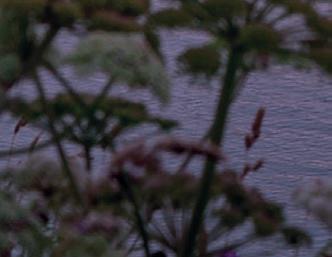
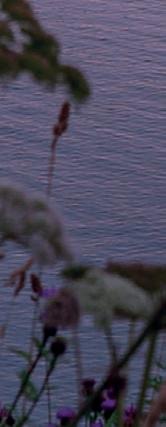









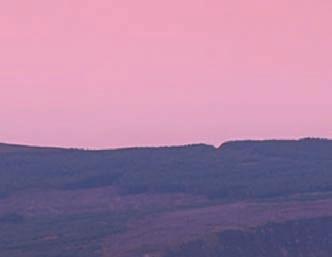
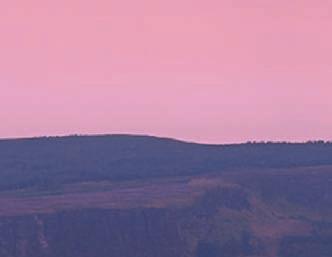
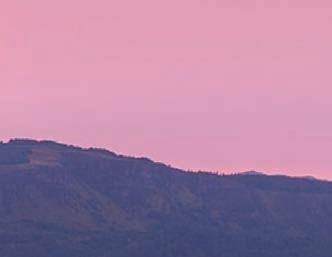


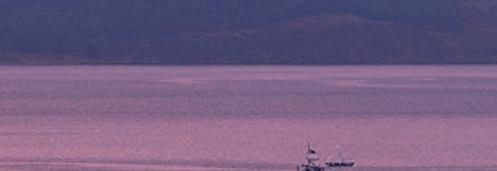



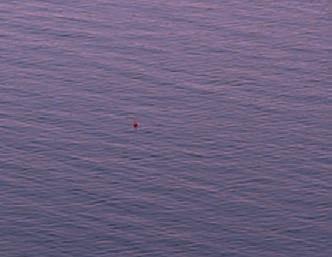
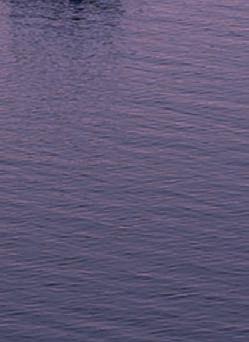


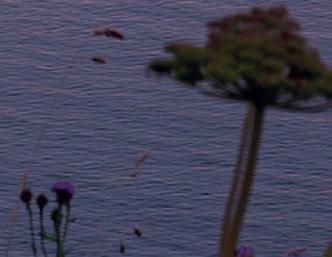


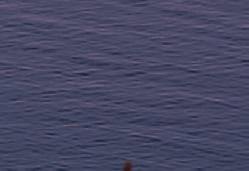


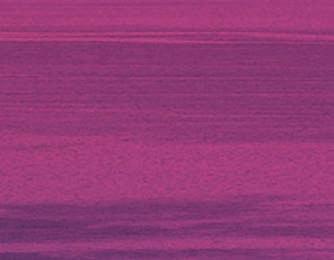
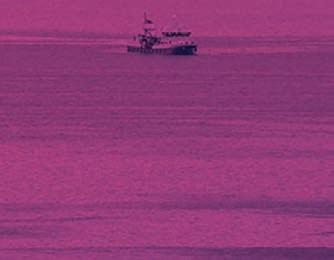

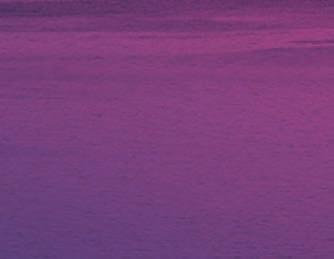









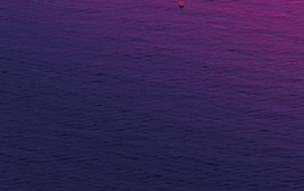

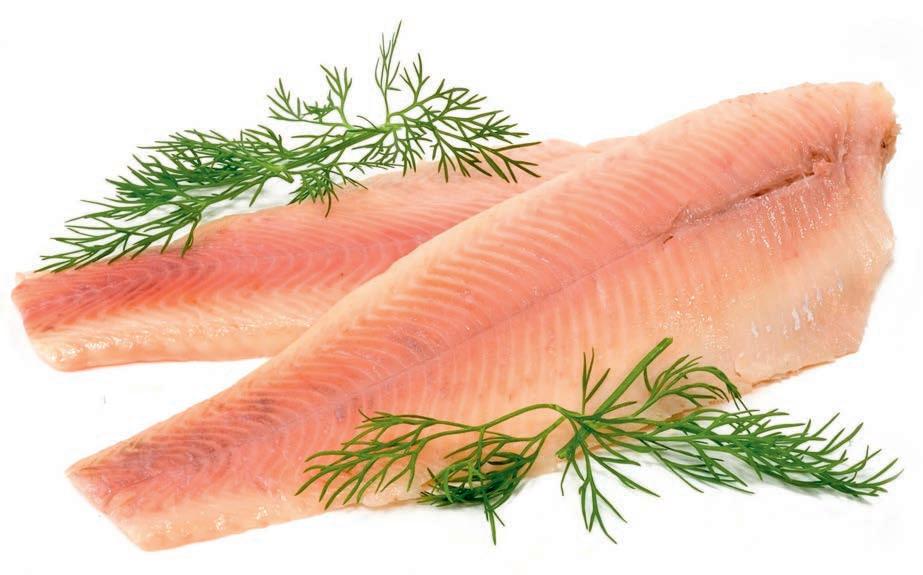
of omega-3 fatty acids next to vitamins, minerals and proteins. The Mediterranean diet of today, including seafood, vegetables, fruits, whole grains, nuts and olive oil, is close to this original diet, and it is considered one of the healthiest ways to eat.
Everybody knows that omega-3 fatty acids, or n-3 fatty acids, are good for you and that you should have a regular intake of them. The best-known n-3 fatty acids are the short-chain -linolenic acid (ALA, 18:3n-3) and the long-chain polyunsaturated fatty acids (PUFAs) EPA (20:5n-3) and DHA (22:6n-3). ALA-rich foods include nuts –especially walnuts – along with leafy vegetables, flaxseed, flaxseed oil, other vegetable oils, and some animal fats, especially in grass-fed animals. ALA once consumed can elongate into EPA and DHA, typical marine n-3 fatty acids also found in fish and shellfish. These fatty acids play key roles in multiple essential body functions, including cardiovascular health, immunity, brain function, and even eye function.
The original diet of humans was rich in vegetables, fruit, nuts and fish; fish were so central to the diet that most humans settled and stayed close to oceans or rivers. This diet provided the right intake
However, over millennia and especially in recent decades, people’s lifestyles changed, and the Western diet in particular has shifted to one filled with refined carbohydrates and saturated fats and offering much less nutrition from vegetables, fruit, nuts and fish. This new diet has resulted in a rather low intake of omega-3 fatty acids and a high intake of n-6 fatty acids; the healthy n-6/n-3 ratio of 4:1 has changed to an unhealthy n-6/n-3 ratio of 15:1. Since an imbalance here is a risk factor for developing obesity, Type 2 diabetes, and coronary heart disease, dieticians are trying to change these eating habits with the help of food scientists and producers.
For humans, two fatty acids are considered essential in the diet because they cannot be synthesized: linoleic acid
Above: Evolu�on of the Human Diet

Left: Trout Fillet rich in EPA and DHA
Opposite: Why EPA and DHA ma�er
Together with Finnforel, Alltech Coppens has developed a unique range of feed
(LA, 18:2n-6) and -linolenic acid (ALA, 18:3n-3).
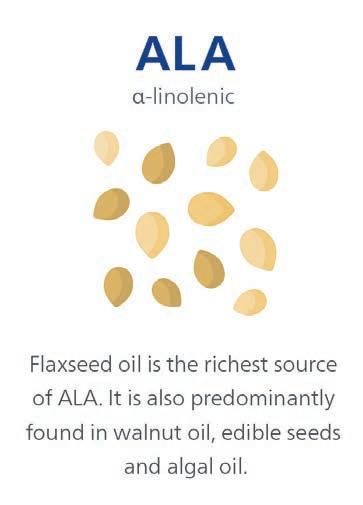
Normally, linoleic acid intake is sufficient even in a substandard diet, but meeting the recommended ALA intake takes more effort and especially awareness. Consuming more ALA – the European Food Safety Authority (EFSA) recommends two to three grams per day – is a good start, but it’s not enough, because humans and many fish species are poor converters of ALA into EPA and DHA. For this reason, the EFSA also recommends a daily intake of 250 mg of EPA and DHA combined. The ratio of EPA to DHA may vary as long as the total is 250 mg.

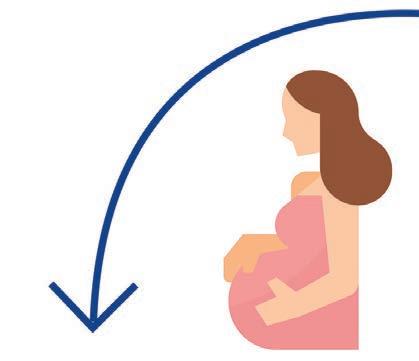
For humans, this EPA and DHA requirement can be met by eating oily fish once or twice a week. Eating fish regularly also helps to get the omega-6/omega-3 balance right again. Fish, shellfish and marine algae are the only source of the essential fatty acids EPA and DHA!
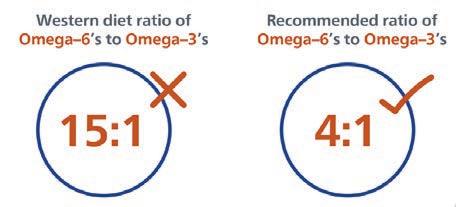
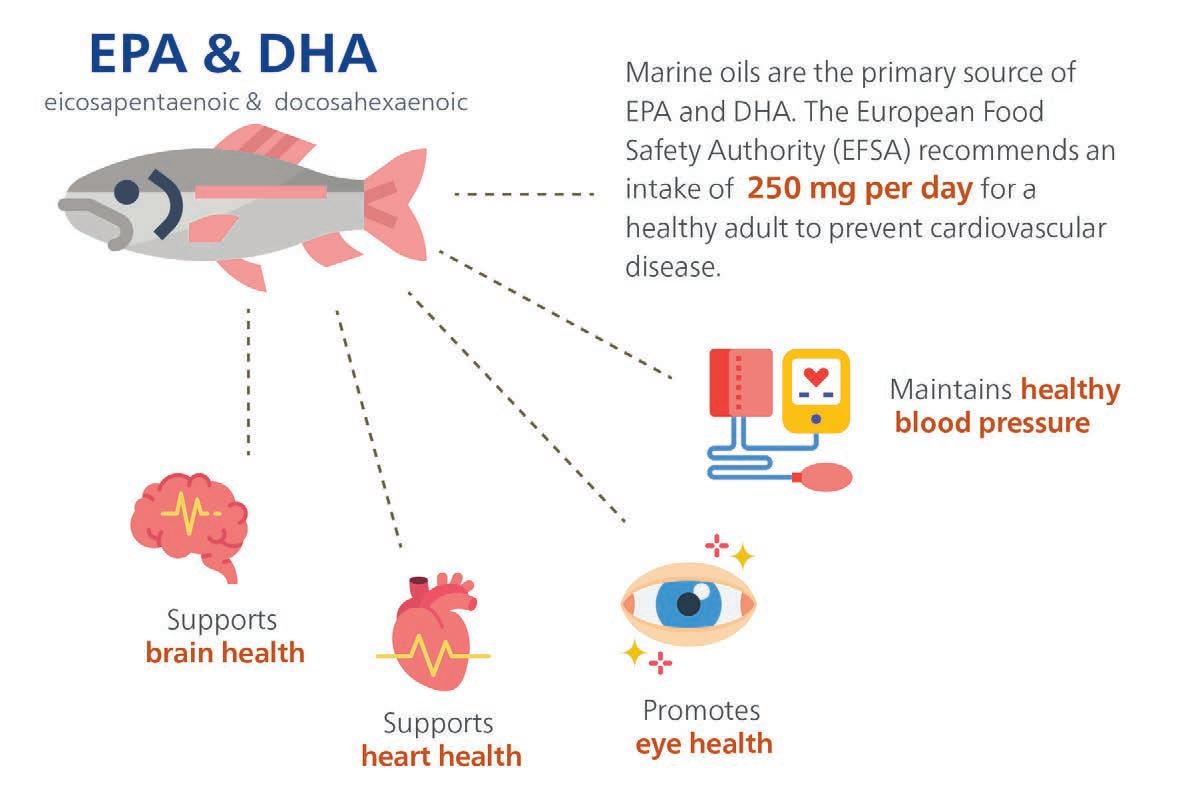
The reason why salmonid fish – including not only salmon but trout, whitefish, char, and more – score so high as a healthy
food is their high content of EPA and DHA, provided that their diet contained sufficiently high levels of these two fatty acids. However, because EPA and DHA sources are expensive, salmonid feeds have been formulated over the years to contain less and less of them, just enough to meet the requirements of the fish. This has led to a lower nutritional value of fillets for human consumption in terms of EPA and DHA, often requiring double portion sizes to meet the EFSA recommendation.
Alltech Coppens has always ensured ample EPA and DHA in their fish feeds, and now they have gone the extra mile with Finnish partner Finnforel, which shares the Alltech Coppens mission to support sustainable farming practices and unlock new sources of nutrition for consumers. Finnforel wanted to buck the lower EPA and DHA trend, producing fish particularly rich in EPA and DHA, and they teamed with Alltech Coppens to advance that effort.
Together with Finnforel, Alltech Coppens has developed a unique range of feed. The basis for this was laid at the Alltech Coppens Research Center, where a series of feed trials provided insight into how to amplify the amounts of these long-chain PUFAs in the flesh of salmonids, specifically trout. This principle was then validated by a
large field trial at Finnforel’s leading-edge RAS (recirculating aquaculture system) farm, demonstrating that the resulting trout were exceptionally rich in EPA and DHA. This was excellent news for the health of the trout and for the health of the consumers who would eat them! Alltech Coppens’ feed range provides a major contribution to adequate EPA + DHA intake and to getting the omega-6/ omega-3 ratio right in the diets of today.



Early warning of algae blooms can make all the difference
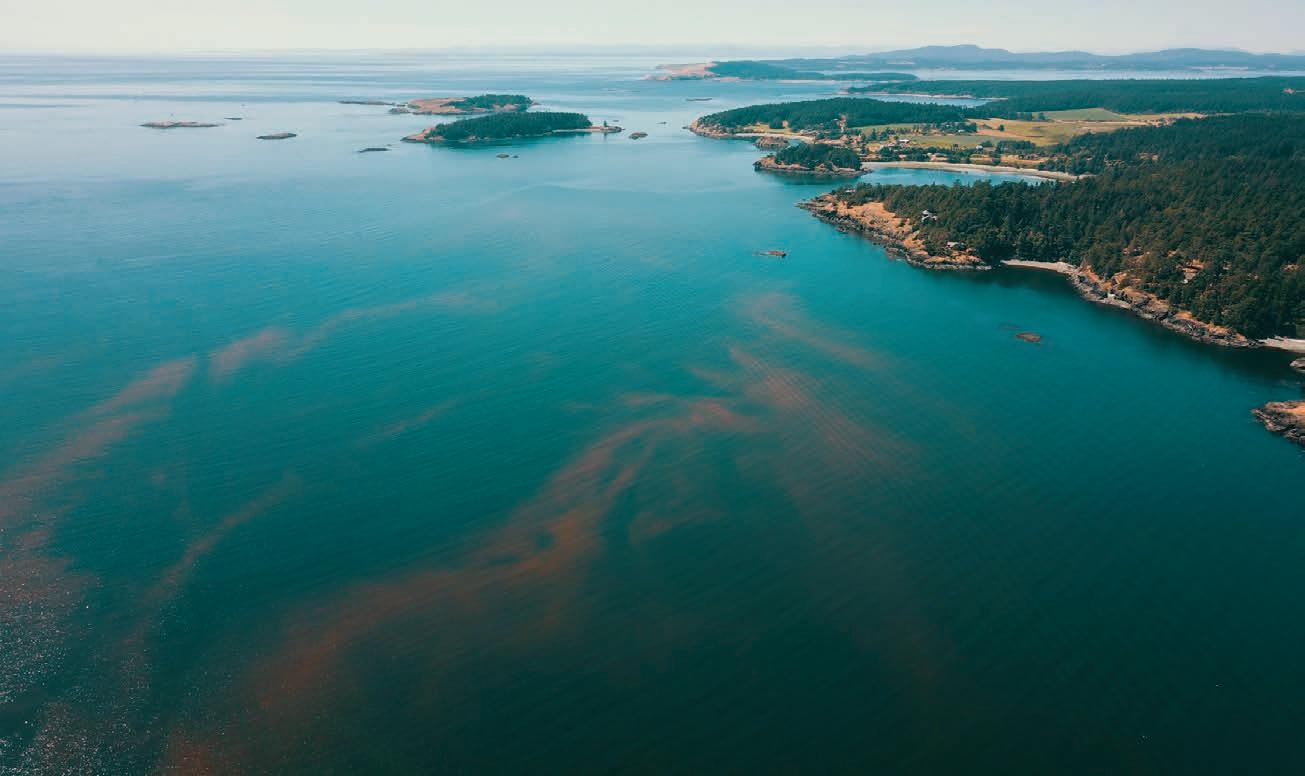
Harmful Algae Blooms (HABs) occur when microscopic algal or phytoplankton populations, amplified by environmental factors such as weather conditions and temperature, grow to such levels that they become harmful to surrounding life. These blooms can be particularly problematic for fish gill health and, with global temperatures rising, are becoming a more prevalent challenge for the global fish farming industry. In 2021, the reported cost of the
required measures to treat fish and recover from a HAB was around £6m for a single fish farm.
Many producers are still using manual water quality sampling and microscopic analysis to monitor the formation of HABs, but sector experts agree that a greater focus on technology could hold the key to regular, real-time data collection and the development of early warning systems.
Since 2021, OTAQ Group has been working in partnership with Canadian machine learning specialists Blue Lion Labs to develop technology to directly address this challenge. As a result, the Live Plankton Analysis System (LPAS) has been created, with support from the Sustainable Aquaculture Innovation Centre (SAIC), CENSIS – Scotland’s Innovation Centre for sensing, imaging and Internet of Things (IoT) technologies – and the University of Aberdeen.
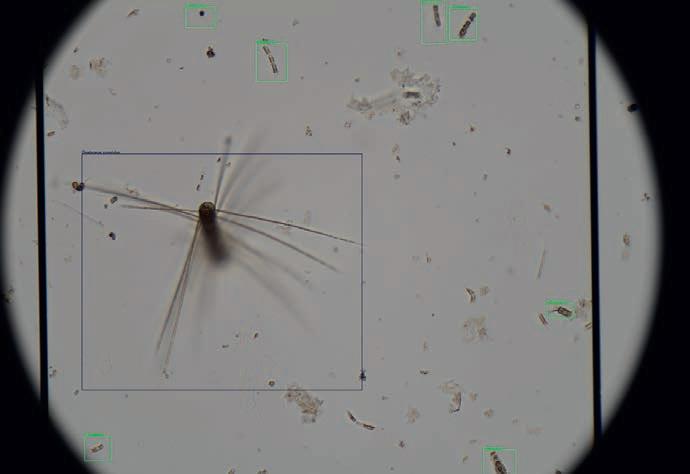

LPAS automatically identifies potentially harmful phytoplankton species and their concentration levels suspended in the samples taken from water surrounding aquaculture sites with increased consistency and speed compared to the existing manual methods. The system is designed to be located and operate locally on site and notify operators if user-set safe-working criteria are exceeded, enabling users to make early and informed decisions on their sitespecific mitigation strategy and actions.

– and now artificial intelligence is helping to provide that
Opposite from top: Presence of Harmful Algae Bloom (HAB); LPAS AI detec�on of target phytoplankton species
This page from top: Phytoplankton; LPAS Hardware Set-up.
LPAS has been designed with field use in mind, to be operable by existing farm operations teams, and takes into consideration the need to function on both well-connected and remote sites.
The LPAS solution consists of four main components:
• AI engine
• Imaging hardware
• Analysis & user interface software





• Connectivity & data storage
In order to rapidly detect phytoplankton in water samples, LPAS employs an artificial intelligence (AI) engine, developed with Blue Lion Labs, a Canadian machine learning company specialising in waterborne organisms. Given an image, the AI engine identifies target species of harmful phytoplankton and the quantity of each detected species, which is then converted into concentration levels by OTAQ’s analysis software.
In order to achieve high confidence levels and consistency in the correct identification of individual phytoplankton species, multiple images of each target phytoplankton species are needed in order to train the AI engine. The greater the quantity, the better the accuracy. OTAQ, therefore, reached out to national laboratories in Canada and Scotland, as well as installed microscopes at over 40 trial partner marine farm sites in Scotland, Ireland, Chile and Australia in order to build an extensive database of images per species to achieve the necessary accuracy for the product prior to launch. The AI engine works on a continuous improvement model and so will continue to learn based on the images of existing and new species collected.
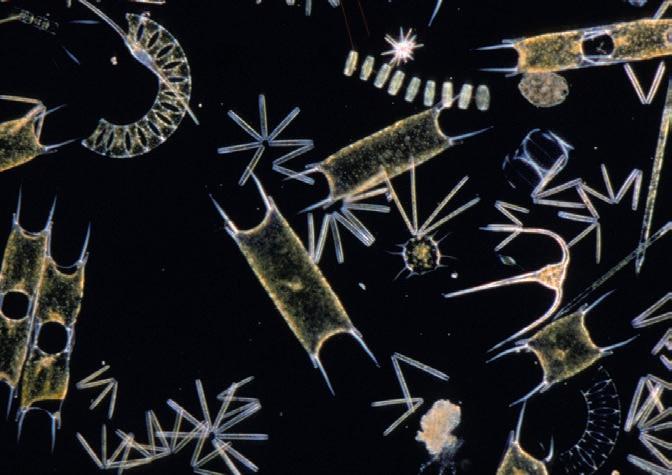
The imaging hardware comprises a laboratory grade microscope combined with a high-resolution digital camera linked into a local LPAS Computer designed around the AI engine and surrounding software. Standalone, reliable and easy-to-install and use, the imaging hardware enables the operator to quickly capture the digital images of local water samples and pass them to the analysis software.
Using the data from the AI engine, the local analysis software program and user interface generates on-site alerts for operators based on user defined parameters, alerting on the presence of specific species that are of concern in a particular region as well as alerting when acceptable concentration levels are exceeded. A clear traffic light system lets site operators know if there is an issue or not and they can they review more detailed data if required. All results are logged and stored, enabling the operator to record and track trends versus time per site.
Images and results data collected by LPAS are automatically stored locally and can also be uploaded to the OTAQ cloud.
LPAS can also be configured to suit the level of internet connectivity available on the site.
If high speed internet connection exists, the information generated by the software is uploaded to and synchronised with the OTAQ cloud web server. The cloud infrastructure centrally stores the site data with encrypted security and is readily accessible securely by the customer from any location.
For sites with low bandwidth or no internet connection, the information generated by the analysis software is stored locally and additionally copied to removable storage device.
A site or company specific application programming interface (API) can also be set up for direct connection of LPAS data uploads into customer databases, if the customer desires.
The LPAS system is supported by OTAQ and Blue Lion Labs Biology and AI teams, conducting regular internal quality checks of the AI engine performance and providing continued customer support.
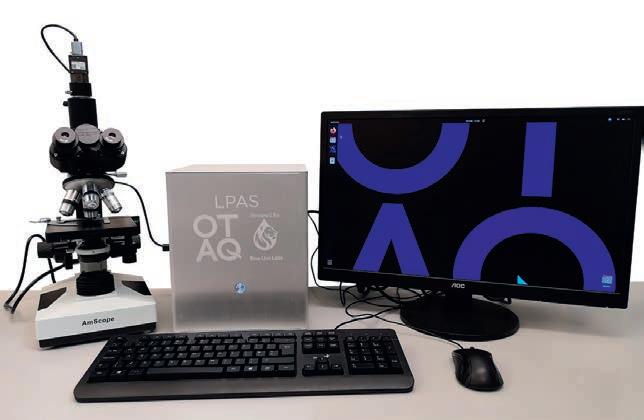
LPAS provides an easy and reliable method to gather immediate and accurate information on potential HAB risks. It is anticipated that the system will be a powerful tool for fish farmers, enabling earlier decision-making and mitigation activity to minimise impact. LPAS is currently in Beta testing phase with Scottish and Irish partners on their active farm sites, with anticipated commercial launch later in 2023. For further information please send enquiries to aquaculture@otaq.com
”It is anticipated that the system will be a powerful tool for fish farmers



Research has linked an increase in sea lice attachment to elevated levels of plasma cortisol, a hormone produced by fish in response to stress. Stressed fish are not only more susceptible to sea lice attachment – they actually attract lice.
GenusWave, an innovative technology company serving the aquaculture industry, has developed cutting-edge solutions to impossible problems, Targeted Acoustic Startle Technology (TAST), prevents predation and the stress that comes from predatory seals. Reduce stress and the levels of sea lice infestation will decline as well.
TAST has the potential to significantly mitigate lice infestation on salmon farms, based on recent science. Research, published in 2021, has discovered “… a link between the plasma cortisol concentration and the L. salmonis copepodid
infestation level.” (Delfosse & Pageat, 2021).
In fact, sea lice are able to detect cortisol and adjust their swimming direction to make a straight line for the closest salmon that is stressed and vulnerable. Research now makes it clear that plasma cortisol is one of the key ingredients to managing sea lice. Eliminate predation stress with TAST - which decreases cortisol - and a corresponding reduction in sea lice will follow.



TAST is a breakthrough technology developed by a team of world-class marine biologists from the Scottish Oceans Institute at the University of St Andrews, one of the foremost institutions for marine mammal research in the world.
TAST’s effectiveness and environmental compliance has been documented in multiple peer-reviewed and published research papers, which show that:
• TAST is effective and remains effective - no habituation;
• The startle signal is species-specific - no impact on salmon or nontarget species; and


• TAST does not harm, harass or disturb marine mammals - no habitat exclusion.
TAST produces a specific sound to elicit an acoustic startle reflex in a target species. Repeated elicitation of the startle reflex activates a predator’s innate flight response and subsequent avoidance behaviour. TAST is like a dog whistle - in reverse.
TAST is approved as an acoustic device for use on Aquaculture Stewardship Council (ASC) certified farms and is compliant with the standards of the US Marine Mammal Protection Act (MMPA).




TAST has been successfully deployed on salmon farms on the west coast of Scotland and in the Finnmark region of Norway. In January, a farm in Scotland was losing over 1,000 fish a week to seals and an outbreak of AGD was spreading. Within days of a TAST deployment,

the predation losses were cut to almost zero and the AGD health crisis ended two months later. The salmon were happier and healthier.
Salmon’s acute sense of smell enables them to detect the presence of seals, even at a distance, causing predation stress and cortisol production. Seals cause chronic stress events just by swimming near fish farms – all day, every day. And seal populations are increasing.
As increased levels of cortisol and adrenaline are released, salmon’s immune system is compromised, antibody production is slowed, and susceptibility to sea lice infestation, bacterial disease and various pathogens increases.
Stressors, combined together, overwhelm a salmon’s immune system to the point of failure.
Salmon farms in Maine in 1992–1993 reported that outbreaks of Hitra, a coldwater bacterial disease, started and had the greatest impact on pens attacked by seals, and those pens had a 4%-5% increase in mortality from Hitra. “Stress increases mortality” (Nash and Iwamoto, 1999).

Mucus is the salmon’s first line of defence against parasites and pathogens. Reducing cortisol and creating an environment conducive to producing more mucus interferes with the ability of sea lice to target salmon as a host, disrupting the host identification and host attachment process.
According to numerous studies, “host identification and host attachment are critical steps for ectoparasites with free-living life stages, such as L. salmonis” (Fields et al., 2018; Tucker et al., 2000b).

In fact, research has found “… a copepodid is more attracted to and swims towards a stressed salmon…” and “…the antimicrobial peptide cathelicidin-2 present in Atlantic salmon skin and mucus is a molecular host associated cue for the salmon louse L. salmonis, as it is detected by the parasite which can then modify its swimming behaviour.“ (Núñez Acuña et al., 2018)
It is instructive to note that feed companies with extensive research budgets have made the connection between mucus production and sea lice. Most notably, Skretting has formulated specific feed additives that increase mucus production. Their research shows a 20% reduction in sea lice infestation. There are two ways to increase mucus: feed additives, or reducing stress.
Infectious salmon anaemia (ISA) is a contagious viral disease in salmon that attacks the cell layer (endothelium) that covers the
inside of blood vessels and the heart. Stress could be the hidden trigger that converts a harmless variant of the ISA virus into disease. Ole-Bendik Dale an aquatic biosafety section leader at the Norwegian Veterinary Institute, previously warned that “The harmless HRP0 virus can easily mutate to HRPdel”. Predation stress may trigger mutation. Eliminate predation stress and a possible trigger for an ISA outbreak is removed.
Amoebic gill disease (AGD)
Stress also contributes to AGD because of the release of adrenaline and the increase in cortisol, which can cause changes to the cellular structure of the gills. Elevated blood flow associated with stress allows increased oxygen uptake for respiration but also increases the permeability of the gills to water and ions.
Acute stress also reduces the salmon’s ability to maintain water and ion homeostasis, limiting the capacity to osmoregulate and, over long periods of stress, risking osmotic shock and death.
The light at the end of the tunnel may be an oncoming train: current solutions may make sea lice worse
The same research that revealed the link between plasma cortisol concentration and the L. salmonis copepodid infestation level also discovered that: “…current lice management strategies may, paradoxically, increase re-infestation risk by handling or otherwise stressing the salmon.” (Delfosse & Pageat, 2021)
After a sea lice treatment, salmon are stressed, cortisol levels are up, and every fish on the farm is sending out a signal inviting sea lice to come and attach, just when they are most vulnerable.
Many current solutions may remove sea lice but also strip away mucus, making the salmon more vulnerable.
Growing salmon without predation stress can help prevent sea lice before they identify and attach themselves.
TAST can help improve salmon’s immuno-response to parasites and pathogens by removing predator-induced stress. Then salmon can better survive the stressors in their marine environment and better able to use their natural defences to prevent sea lice attachment.

Back to basics: what is good for fish health and welfare is good for business. Settled science suggests that sea lice, infectious salmon anaemia (ISA), amoebic gill disease (AGD), and other parasites, pathogens, and biological diseases linked to stress, can be mitigated or eliminated by reducing stress. The farther away the predators are kept, the lower the stress levels for the salmon.
“Any response…to stress requires the expenditure of energy that would otherwise be utilized for maintaining normal body functions such as growth, digestion, osmoregulation, disease resistance, healing and reproduction. Think of energy as a pie with only so many pieces; stress consumes a portion of the animal’s energy…” (Barton & Iwama, 1991. Schreck, 1982)”.
Stressed salmon use their energy for stress - not growth. Without stress from predators, salmon will grow faster and healthier. Salmon develop a better colour, texture, taste and mouthfeel. A healthy fish means a happy customer.
Implementing TAST to reduce stress helps farmers protect their fish and their business. Growing salmon without predation stress provides significant and measurable improvements in fish health.
Steven Alevy is a Managing Partner of Genuswave.
Plasma cortisol is one of the the key ingredients to managing sea lice
As this issue went to press, global trade association the Lifting Equipment Engineers Association (LEEA) was preparing to mark Global Lifting Awareness Day (GLAD), 13 July, with a series of online and in-person events.
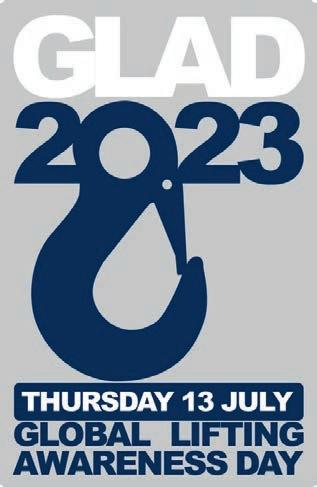
LEEA Chief Executive Ross Moloney (pictured) explained: “Lifting is the battle against gravity and by definition, it is full of risk.”
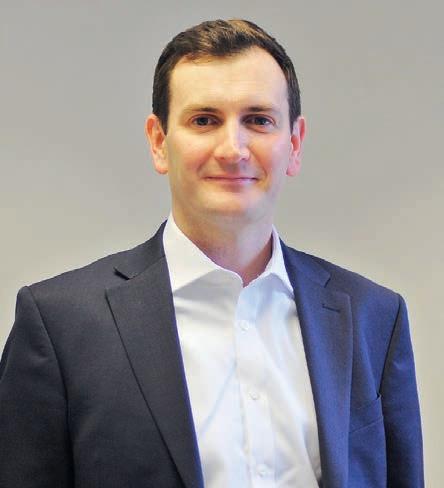
GLAD is intended to raise awareness of the industry and safety issues, with messages aimed it its members’ customers as well as the member companies themselves. It will be celebrated with a technical forum online, webinars and a meeting the day before with UK legislators. For details, go online to https://globalliftingawarenessday.com/
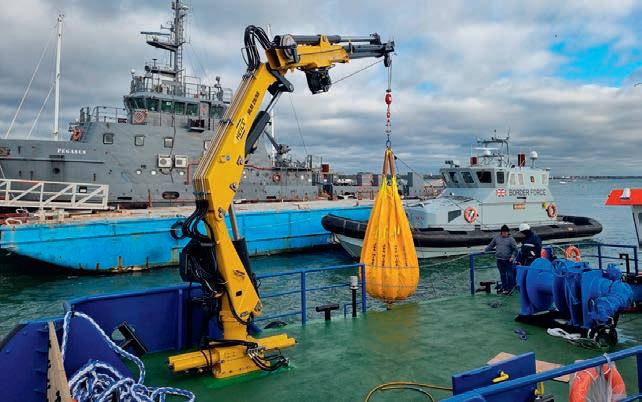

Nekkar ASA’s recently acquired subsidiary Techano has completed delivery and commissioning of the live fish transfer system provided to SalMar Aker Ocean’s 110m fish farm, OffshoreFarm1 Techano, who is now trading as Techano Oceanlift, was awarded the contract for two FTS500 fish transfer systems in March 2022. They were delivered to Aker Solutions’ Verdal yard over the winter and recently, the first live fish transfer operations were successfully executed with the new system.
Øystein Bondevik, director of business development and sales at Techano Oceanlift, said: “They challenged us to design a system that would secure optimal fish welfare, so we are delighted that the first operations showed good results.”
As the exclusive UK and Ireland provider and servicer of Heila Marine Cranes, Brimmond has six models now available for immediate delivery. These are:
• HeilaHLM8-2S: 1,200kg @ 7.43m
• HeilaHLM10-3S: 940kg @ 10.3m
• HeilaHLM20-3S: 1,700kg @ 10.56m
• HeilaHLM25-3S: 2,200kg @ 10.5m
• HeilaHLM25-5S: 1,200kg @ 14.7m
• HeilaHLRM45-5S: 1,750kg @ 14.9m
As a brand that’s been synonymous with exceptional customer service for over 25 years, Brimmond specialises in delivering marine crane solutions that seamlessly meet customers’ operational demands.
Whether selling, renting, repairing or refurbishing the company’s evergrowing range of new and second-hand marine cranes, Brimmond’s service offering is founded on being responsive and creating value for clients. www.brimmond.com/marine-cranes
+44 (0)1467 633805 info@brimmond.com

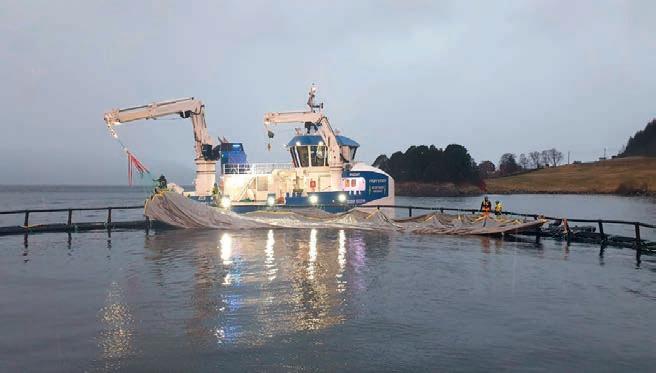
HS.MARINE, the specialist manufacturer of Marine Cranes, based in north Italy, continues to receive acclaim from the most demanding customers and crane users.
Stefano Forni, founder and Managing Director of HS.MARINE, says: “We have reached the twentieth year of activity. This is a result that goes to reward the path we have decided to follow, focusing on reliability, efficiency and always operational service, with the ability to respond to any request in a very short time.
“These are the three keywords that have made HS.MARINE, a manufacturer of marine cranes, one of the main players in the market. We are definitely not the cheapest manufacturer, but we are proud to say that we are the one offering the cheapest cost of ownership”.
Observing the lifespan of the cranes on the marine market and the costs of the service at sea, the financial impact of a breakdown, HS.MARINE understood that reliability and safety are the main differences between a marine design and a so called “marinised” design.
HS.MARINE therefore decided to develop a specific design for the application and to focus on quality solutions and on the quality of components.




“All our crane designs,” continues Forni, “have been specially developed and improved for operation in the marine environment with a particular attention to fish farming activity. All structures have been designed to take up heavy lateral forces and to have flexibility, but with a low value of deflection under load. All parts have been designed and protected for easy maintenance. Each crane component and each crane part is selected and designed for long life. I repeat: ours are not former marinised truck cranes. Ours are cranes specially designed for Fish Farming.
“At first, they may seem more expensive, perhaps we have a premium price, but at the end we are the cheapest solution because, unlike other cranes, ours are designed to last and therefore we have the lowest cost of ownership on the market. That’s why we have so many repeat customers”.
Forni concludes: “Customers agree that HS.MARINE cranes have a longer lifespan and that HS.MARINE cranes are designed to minimise and simplify maintenance. At the same time the cranes’ reliability reduces the need for spares and, consequently, operational costs. In fact, the HS.MARINE design concept, the quality of the components and the surface treatment reduce maintenance and lifetime costs, simplify the inspection activities and minimise the need for spares and recoating”.
“What is not clear to many customers yet is that the safety aspects are not deniable. To support the progress of the fish farming industry and to guarantee the safety, fish farming equipment needs to be specially designed and developed for this application. HS.MARINE cranes are prepared for the tough marine environment and are designed and built from the ground up for marine use, with high attention to detail.
“HS.MARINE cranes can work in any configurations: no matter if the boom is fully extended vertically or if it is knuckled downwards. In every position the safe working load can be moved by any crane cylinders, including the telescopic ones.

“Just consider that many cranes derived from a truck design clearly state in the manual that the crane cannot work in a fully vertical position, nevertheless they operate in the fish farming sector and their cranes are often used in such configurations. This is even worse, because fish farming companies have personnel close to the cranes. Not to mention that I often see cranes installed on boats that have a lower heel angle capability than boat’s one. Unbelievable! I do believe that, on safety aspects, the fish farming industry need to progress”.
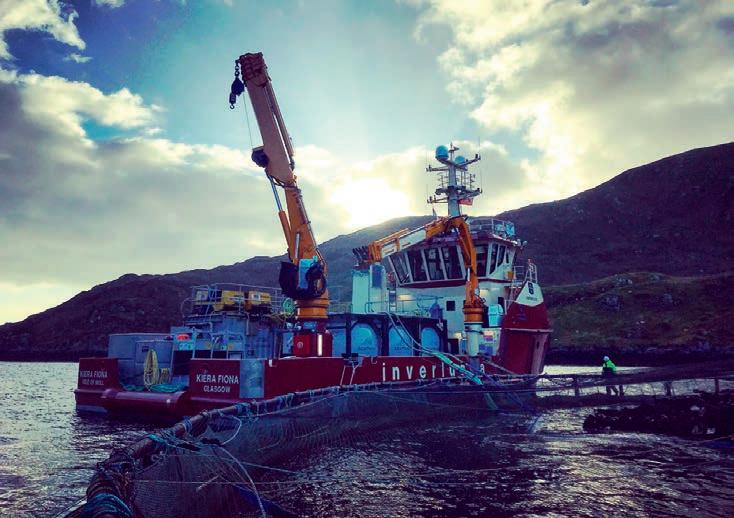
Each crane component and each crane part is selected and designed for long life
Heila HLM8-2S: 1200kg @ 7.43m




Heila HLM10-3S: 940kg @ 10.3m
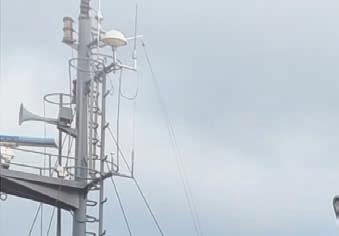


Heila HLM20-3S: 1700kg @ 10.56m
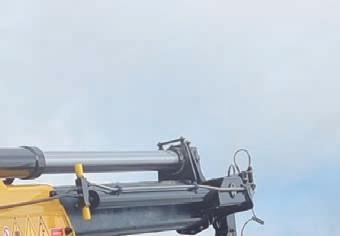

Heila HLM25-3S: 2200kg @ 10.5m



Heila HLM25-5S: 1200kg @ 14.7m

Heila HLRM45-5S: 1750kg @ 14.9m

Brimmond is a brand that’s been synonymous with exceptional customer service for over 25 years. We are proud to be specialists in delivering marine crane solutions that seamlessly meet your operational demands.
Whether we are selling, renting, repairing or refurbishing our ever-growing range of new and second-hand marine cranes, our service offering is founded on being responsive and creating value for our clients.


The investment in our stock crane fleet and service offering is no exception. We understand the negative impact that lengthy lead-times are having on our clients’ operations, so we have invested heavily in expanding our fleet. As the exclusive UK and Ireland provider and servicer of Heila Marine Cranes, we have 6 now available for immediate delivery:
Heila HLM8-2S: 1200kg @ 7.43m
Heila HLM10-3S: 940kg @ 10.3m
Heila HLM20-3S: 1700kg @ 10.56m
Heila HLM25-3S: 2200kg @ 10.5m
Heila HLM25-5S: 1200kg @ 14.7m
Heila HLRM45-5S: 1750kg @ 14.9m
As one of the UK’s leading marine crane specialists, our service offering doesn’t end at the point of delivery; we are on hand to provide support for the lifespan of the contract. Collaborating closely from initial contact, we take time to understand your requirements, working with you through to installation and ongoing maintenance.


With our new fleet of bespoke vans staffed by specialist technicians and equipped with a full suite of spare parts, we are primed to respond to call-outs whenever and wherever our clients need us. Of course our technicians are also on hand to carry out routine maintenance and inspection throughout the UK and Ireland to ensure our cranes operate as safely and efficiently as possible.
Paul Dingwall is Technical Sales Manager of our marine cranes. He said:


“
Our close relationship with clients gave us early warning of the challenges associated with long lead-times, and so we began planning to fully stock our fleet of marine cranes – both rental and sales – over 18 months ago. As a result, we’re now in a position where we have 6 cranes in stock ready to deployed immediately –time and time again our clients tell us this is invaluable.
“Combined with recruiting and training a highly specialised team to deliver our maintenance, inspection and repair programme, and the investment in our new crane showroom at our Aberdeenshire HQ, we are committed to being the leading supplier of marine cranes in the UK.”
www.brimmond.com/marine-cranes
As from 1 February this year, Benchmark has implemented commercial restructures to its Genetics and Health business areas. Unifying the sales team for salmon products, the company has further solidified its commitment to delivering excellence and strengthen customer relationships . Kate Furhovden Stenerud has been appointed as the new Commercial Director for salmon, bringing her expertise to drive growth. The UK-based team, comprising Ben Perry, Harry Tziouvas, and Andrew Preston, stand ready to leverage their comprehensive knowledge to serve both local and global customers with the complete product portfolio of genetics and sea lice medicines.
Pictured below: The newly appointed Commercial Director, Kate F. Stenerud, surrounded by her team in Bergen in June this year. Find out more: www.bmkgenetics.com

Claudio R. Cerda (pictured above) has joined the board of directors of the Northwest Aquaculture Alliance. He is General Manager of Troutlodge, the world’s leading producer of eyed trout eggs based in Bonney Lake, Washington State in the USA. Cerda, a Chilean citizen, received his Engineer in Aquaculture degree from Universidad de Los Lagos, Osorno in Chile. He has worked in Chile, Ecuador and the United States, managing operations primarily focused on salmon and trout. In addition, Cerda spent four years managing a shrimp farm in Ecuador. Troutlodge is a division of Hendrix Genetics.

The Northwest Aquaculture Alliance represents the interests of the aquaculture sector in Washington, Oregon, Idaho, Alaska, Hawaii and British Columbia.
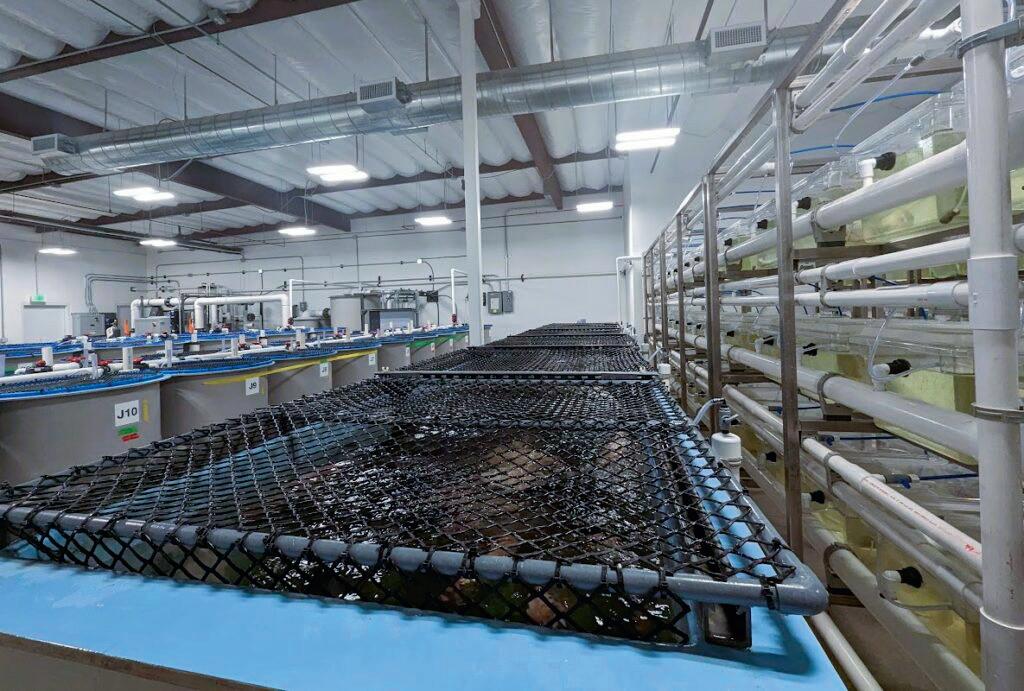
The Centre for Aquaculture Technologies (CAT) has launched a new research space, expanding its existing facility in San Diego, California. The Finfish Genetics Innovation Centre, which opened in May, is fully dedicated to the delivery of foundational advances in genome editing technologies for commercial aquaculture applications. The facility includes a state-of-the-art genome editing and germ cell transfer laboratory for commercial-scale research applications, as well as a wet lab for data collection. Also included are new, world-class RAS systems, custom-built to support research and animal welfare. They also help to streamline maintenance and husbandry activities and support CAT’s aquaculture genetic solutions and health and nutrition research services.
A company dedicated to strengthening the resilience of farmed shellfish through genetic selection is among those selected by blue economy investor Hatch as part of its latest cohort. Based in the Pacific Northwest, Pacific Hybreed is establishing the first commercial shellfish breeding programmes for the benefit of US West Coast aquaculture and beyond, with proprietary breeding schemes for Pacific oysters, Manila clams, Kumamoto oysters and other species. The company will be joining nine other start-ups in a 14-week accelerator programme, including online activities and on-site sessions in Hawaii, Norway, Singapore and Vietnam. Hatch will initially invest US $150,000 to $300,000 (£128,000 to £256,000) in each of the 10 companies, with the possibility of follow-on funding.


Researchers at Benchmark Genetics have identified significant genetic markers in Nile tilapia, indicating resistance to the disease Streptococcus iniae (S.iniae). The breakthrough was announced earlier this year. The discovery is the result of a collaboration between the Aquatic Animal Health Research Unit of the United States Department of Aquaculture and Benchmark’s team, led by geneticist Sergio Vela-Avitúa. He said: “The results were impressive, with a final cumulative percent mortality of only 1% for offspring from resistant parents, compared to 73% for offspring from susceptible parents. These results demonstrate that marker-assisted selection for improved resistance to S.iniae is feasible and likely to be highly effective”.
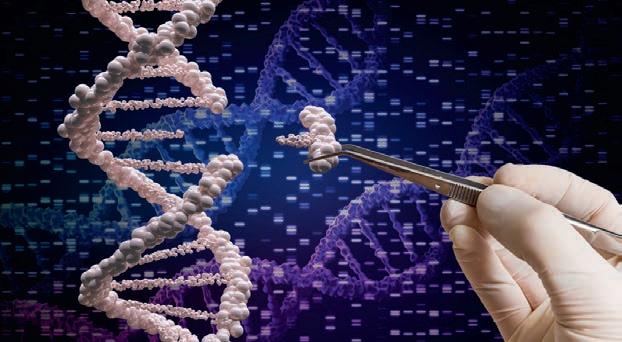
The Genetic Technology (Precision Breeding Act) received royal assent in March. It allows for the creation and marketing of precision bred or genome-edited plants and vertebrate animals in England. Gene editing, which involves the transfer of genes naturally found in a given species, had previously been treated in the same way as genetically modified organisms, which can involve the splicing of DNA from completely different species.
David Bowles, Head of Campaigns and Public Affairs at animal welfare charity the RSPCA, said: “We do not believe this Act should include animals, whether they are farm, pet or wildlife. Invasive procedures are needed to create each line of gene edited mammals, there is no history of use for this powerful technology and it can cause unintended changes to the genome.”
Adding alligator DNA to catfish sounds like the premise for a low-budget B-movie, but that’s exactly what researchers at Auburn University, Alabama, are hoping will help reduce mortality rates among farmed catfish in the US. Initial studies suggest that selected alligator cathelicidin genes would increase resistance to the infections that take a huge toll each year from these fish. The team at Auburn say that the flavour of the catfish, a favourite of US consumers, is unaffected. The genetic splicing was carried out using the CRISPR/Cas9 platform. The fish were also treated with hormones to reduce their fertility as well as the risk of contaminating the wild population through interbreeding. Pictured above is Baofeng Su, a fish genetics researcher at Auburn University (photo: Auburn University).

Seawork is the trade show that highlights the smaller commercial craft markets including aquaculture. This year the theme of sustainability and zero missions made available by alternative fuels, propulsion systems and materials came through strongly.
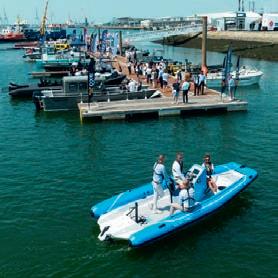
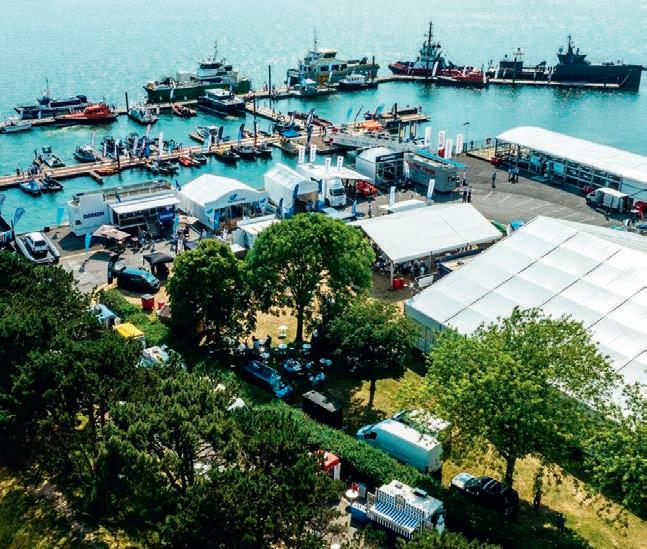
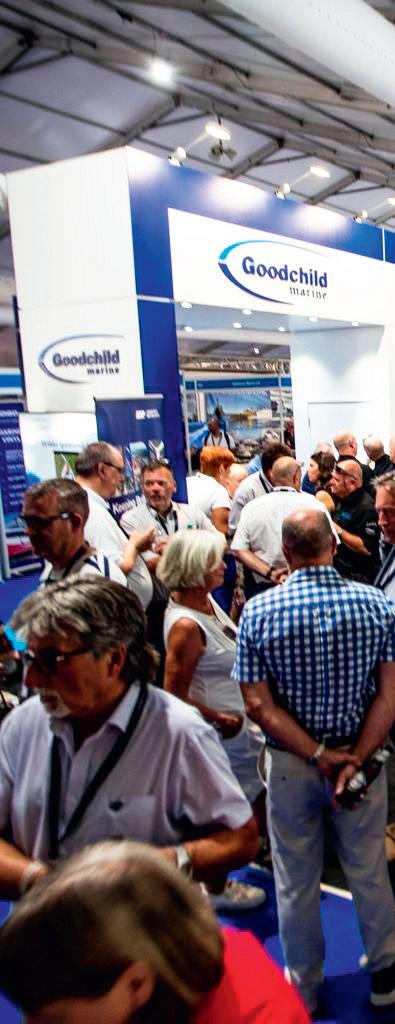



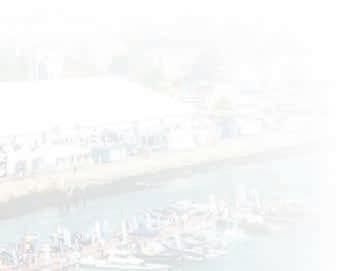
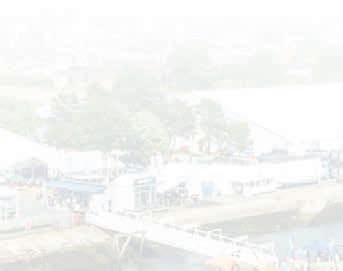
With aquaculture being one of the few smaller commercial craft markets dealing directly with food, the sustainability requirement is one that extends beyond the operation of vessels being employed in the business. It is an intrinsic part of the sustainability of the end product.

So argues Ian Ellis, the managing director of Macduff Ship Design Ltd: “There is a lot of potential in the aquaculture market for hybrid and electric vessels and an opportunity for operators to be more proactive.”
He adds: “The demand for clean tech is increasing, and while it is more expensive to build such vessels it meets a growing push by supermarkets and other retail outlets to have clarity on clean products.”
Macduff Ship Design continues to keep busy with aquaculture commissions either through design or new builds. Ellis spoke of a number of projects, including a 24 metre multicat/landing craft for a UK fish farm build by Macduff Shipyards which is due for completion and delivery around July this year.
Ellis indicated that Macduff Ship Design is currently working with several operators on hybrid solutions and is involved in several working groups investigating future zero emission technology In another project, Macduff Ship Design is working with operator AQS on a project for a new 18.5 metre hybrid aquaculture support services vessel and Skagen Ship Consulting A/S in Norway has been
chosen to work with Macduff as the main contractor.
Skagen Ship Consulting is charged with the delivery of the design and equipment package with the vessel being built TRX Marine in Yalova, Turkey. The design has also been developed with several innovations for a vessel of this type including a greener operating profile being a strong focus. The vessel is due to be delivered later this year.
AQS, Skagen and Macduff are all working towards greener solutions both on this vessel and more widely with a drive to reducing climate emissions.
In respect of this new vessel, as well as sustainability, the safety and well-being of the crew were also key elements in the design process as it will be operating round the clock. The crew accommodation has galley, mess and lounge facilities with individual cabins for the four crew and includes a lounge area within the spacious wheelhouse.
The vessel will be equipped with a diesel electric hybrid package developed by Bertel O. Steen Power Solutions with a large battery capacity of 1,156 kWh, allowing for extensive zero emission operation. There will be a hydraulic deck machinery package supplied by SHM solutions, including two Palfinger deck cranes, and a full suite of aquaculture service equipment.
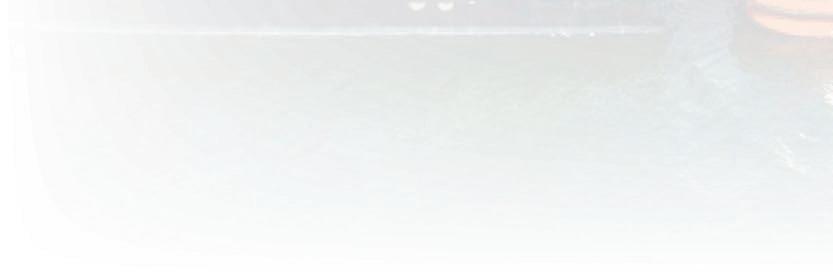


Another project involving Turkish shipyards concerns two 20 metre mussel farming vessels, which on completion will operate in the Shetlands.
Ellis says there is a rising demand and interest for vessels to work in the aquaculture sector and adds that Macduff Ship Design is dealing with several other enquiries.
In another collaboration, Macduff is working with Harland & Wolff (H&W) on a new tug
This page, from top: Stands at the Seawork show; vessels on display in the marina Opposite from top: AQS aquaculture support vessel; Taking a break at Seawork; Damen Mul� Cat 1908There is a lot of potential in the aquaculture market for hybrid and electric vessels
project but the latter is also keen to build a presence in the aquaculture sector.



H&W operate four shipyards in Scotland, Northern Ireland and Devon with the one for smaller vessels being at Appledore in Devon. The company is able to build a wide range of vessels between 10 and 150 metres and offers services from initial consultancy to detailed engineering and fabrications which involved new builds, refits or repairs.
The Dutch shipyards group, Damen, chose Seawork 2023 to launch a new model, the zero emissions Multi Cat 1908 Electric. Damen said the new design “brings a significant boost to workboat sustainability.
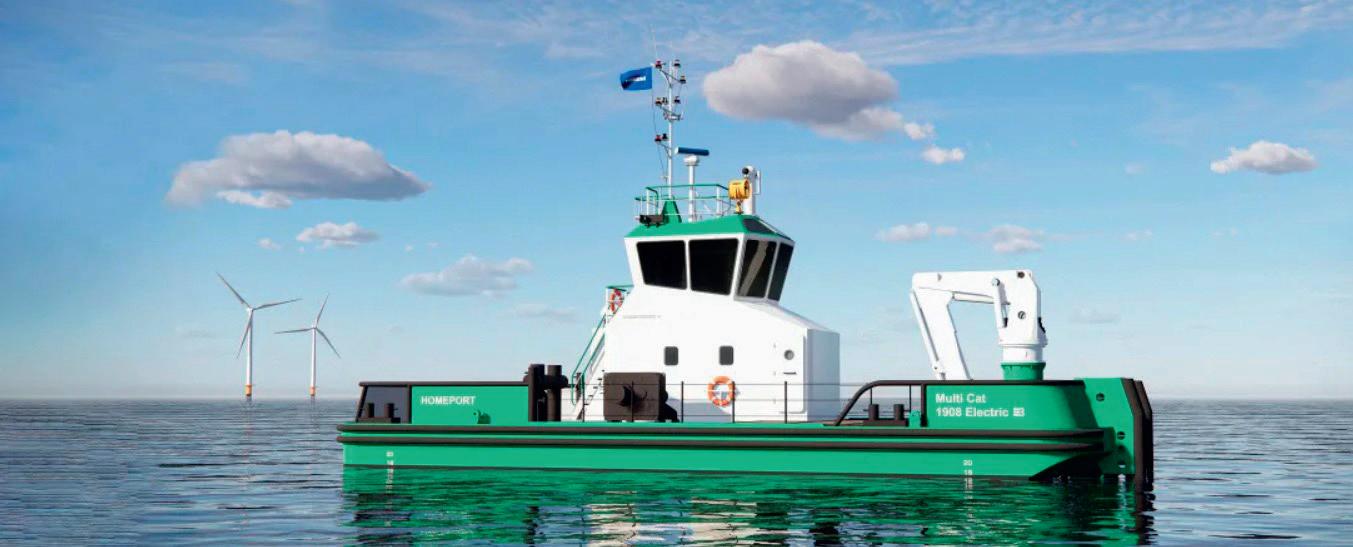
The Multi Cat 1908 Electric represents a powerful combination, drawing on some 25 years of experience in Multi Cat construction with cutting-edge technology to make zero emissions workboat operations a reality.
The Multi Cat is a multi-purpose workboat designed for operations in both shallow and deeper. Now, with Damen’s ambitions
firmly fixed on becoming the world’s most sustainable shipbuilder, the company has developed a fully electric version.

Damen has designed the MuC 1908 E to operate inland, in harbour and along the coast, up to 20 nautical miles from shore, undertaking diverse tasks.
Despite its innovative character, the vessel is based on a proven platform; the Damen Multi Cat 1908. This added to Damen’s considerable experience in the delivery of electric and hybrid vessels, means the MuC 1908 E is able to operate for up to 12 hours on a single charge, bringing a full day’s work comfortable into range. The batteries are, additionally, able to power the vessel for up to a decade following delivery.
Additionally, the Multi Cat also benefits from Damen’s digitalisation knowledge in that it features Triton, Damen’s connected vessel platform. From sensors located throughout the vessel, Triton collects data to put the operator in control. As well as providing a comprehensive overview of battery performance, Triton provides the means to optimise efficiency and conduct preventive maintenance.
Jeroen van Woerkum, Commercial Manager at Damen Shipyards Hardinxveld said: “With our commitment to increased maritime sustainability, we wanted to create a versatile workboat that could bring zero emissions performance to a wide range of operations.”
He commented: “Further to this, the MuC 1908 suggested itself for the task, having been so successful over the years. What we have done, is taken a proven platform, and combined it with the experience we have gained in recent years in electrification, to create an innovative vessel that has the potential to make a considerable impact on maritime emissions.”
Based on its practice of building its standard vessels in series and keeping them in stock to facilitate rapid delivery, Damen is planning to commence construction of the first MuC 1908 E in Q4 2023 at its Hardinxveld yard in the Netherlands.
Damen is also actively working with Coastal Workboats and the related increased
association with the aquaculture industry through the development of its LUV (Landing Utility Vessel) – the UV2208 class- range which is suitable for operation in Scotland, Norway and other markets.
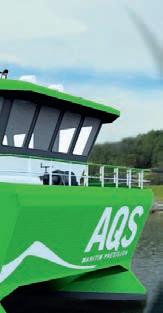

Coastal Workboats, which has a shipyard in Devon, has already built a number of these vessels including ones of 16 metres, 19 metres and 22 metres. Four LUVs have been delivered and another two have been ordered for stock. Coastal has set up a company in Scotland to work on the development of a new shipyard on the Clyde, a project which falls into the “work in progress” category.
A number of new workboat designs were on show at Seawork including from:

• Coulam Boats propelled by OXE outboards;
• the 8.7 metre ILC-800 inflatable landing craft built by MST (Marine Specialised Technology) group, which is designed to carry up to three metric tonnes of cargo;
• the MMS 8.5 metre Envirocat All Electric eco 8.5; and

• Artemis eFoiler workboat range.
As part of the three day Seawork 2023 event there was also a full conference programme which provided useful updates and insights on such areas as:

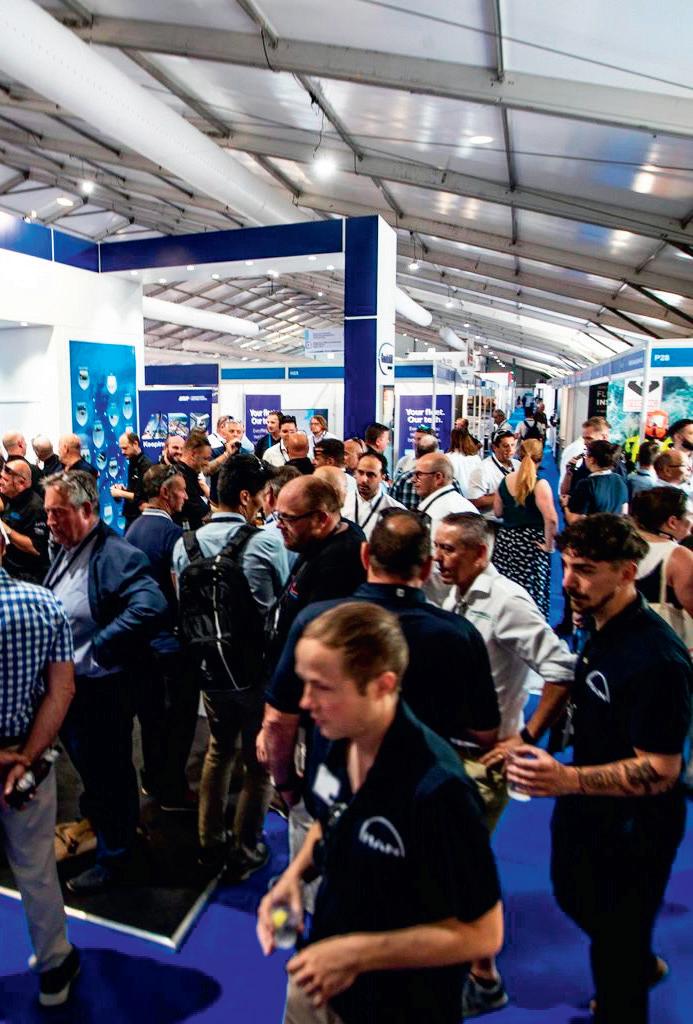
• National Shipbuilding Strategy update;






• Decarbonisation and OPEX Reduction ; and
• Workboat Association Safety Forum.
Finally, a new commercial marine finance source was launched by Siemens, through its Siemens Marine Finance arm, which saw its UK launch at Seawork 2023.


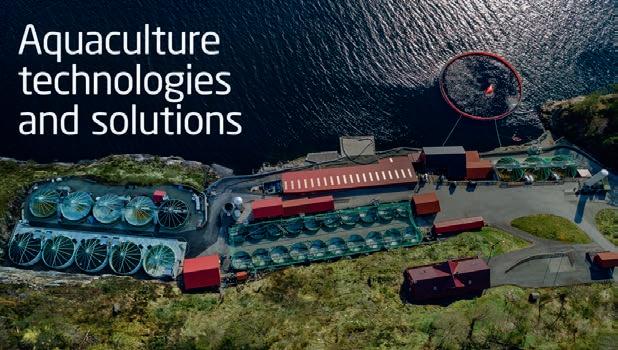
SIMONA Stadpipe has designed and produced two sludge tanks in Stadlandet, Norway, custom-made for the large land-based SAS salmon farm facility Soul of Japan in Morimachi, Tsu City, Mie Prefecture. The purpose of the tank is to be able to pump the sludge water to a higher level. The tank contains an inlet pipe, outlet pipe, overflow pipe and extrusion for cable entrance for pumps.
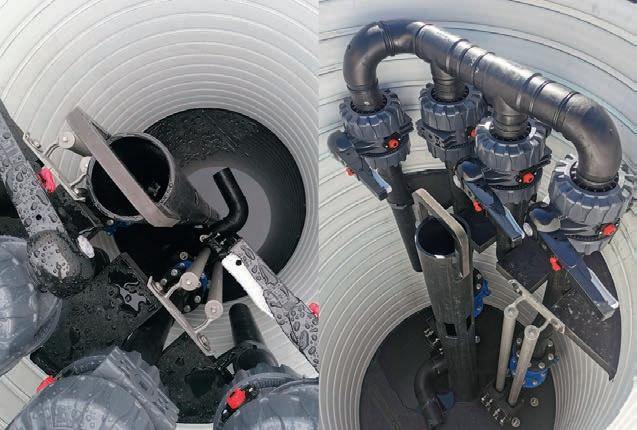
Find out more at: stadpipe.no

Aquaculture technology company Aqualabo’s market presence has grown since 2012, with increasing demand in France and abroad. The NEON portable oximeter, combined with the OPTOD probe, accurately measures dissolved oxygen in % Sat and mg/litre, as well as temperature. The OPTOD sensor can be fitted with an anti-fouling strainer that limits the formation of biofouling on the DOdisk, protecting the membrane and ensuring continuous, maintenance-free measurements for up to two months. Wi-fi transfer, automatic recording and resistance to interference make NEON the ideal tool.
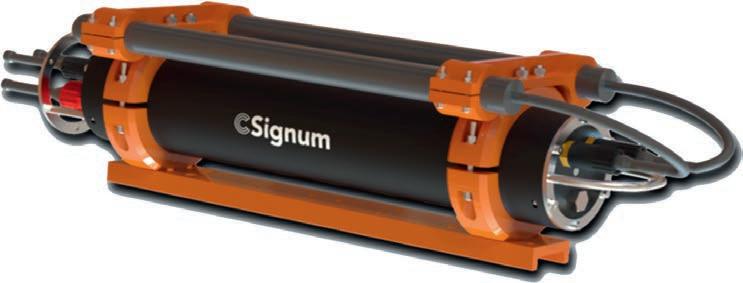

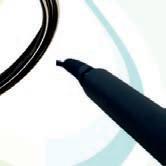

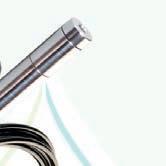
CSignum’s cable-free RadiEM Modem transmits frequent, precise aquaculture data for offshore fish farming. It enables the automation/processing of data across multiple fish pens, increasing the reliability, efficiency, safety and sustainability of fish production. Frequent data delivery provides understanding of ideal feeding conditions; control and timing of precise feed quantities; and improved net development. This optimises operational costs, improves margins and produces a superior product. The RadiEM Modem is easy to deploy and doesn’t interfere with operations. Its cable-free transmitters and receivers are easily moved, so data is sent frequently from below the water to a topside relay unit and onto the operator’s central location.
Find out more at: csignum.com/aquaculture
Aquaculture is a global growth sector. The high potential of this market prompted SPECK to develop a tailor-made range designed to meet the special requirements of the industry. In contrast to its competitors, SPECK does not use stainless steel for its aquaculture pumps, but a high-quality, fully plastic design or rather technically high-performance plastic. This offers several advantages, including corrosion resistance, lighter weight, electrical separation and a price advantage. SPECK’s aquaculture product range focuses on fish farming in closed recirculation systems, large aquariums, koi farming and shrimp farms as well as ponds and streams. As with all areas of application, SPECK offers service, flexibility and the adaptation of products to the customers’ individual needs. Find out more at: speck-pumps.com/aquaculture
FishGLOBE AS has signed an agent agreement with the Chilean service company Sorken Group for sales of its floating closed containment system to fish farmers in the South American region.
Tor Magne Madsen, CCO at FishGLOBE, said: “We have chosen SORKEN Group to work together with, after a long analysis and several conversations with its executives. We are confident in their Chilean market knowledge and we share their enthusiasm and innovation on behalf of more sustainable aquaculture.”
The parties will work closely together to set a common strategy to enter the market with clients as well as authorities.
Ocean Kinetics has recently completed the installation of a thermal delousing system on board the Inverlussa vessel, Eloise Eslea, for Scottish Sea Farms. The project, which was delivered for main contractor, Scale Aquaculture AS, is the second of this kind for Inverlussa on its new hybrid aquaculture support vessels.
Paul Wilson, project manager for Ocean Kinetics, said: “The complete system is not only very efficient and operator friendly, it has been designed for minimal downtime between salmon pen set-ups, so this ensures that fish are treated quickly with minimal stress.”
The project follows the installation of a different system on Inverlussa’s first hybrid vessel, EloiseIsaac, for Cooke Aquaculture, where the main components were supplied by Norwegian company, Smir.
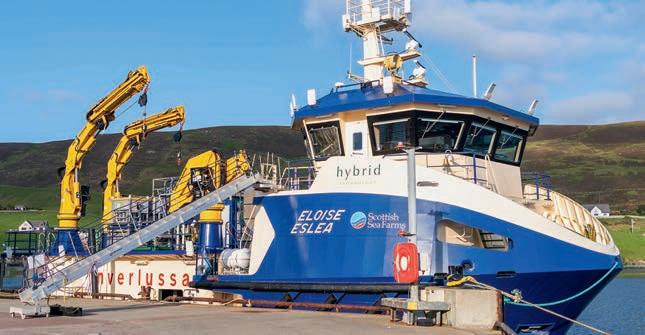

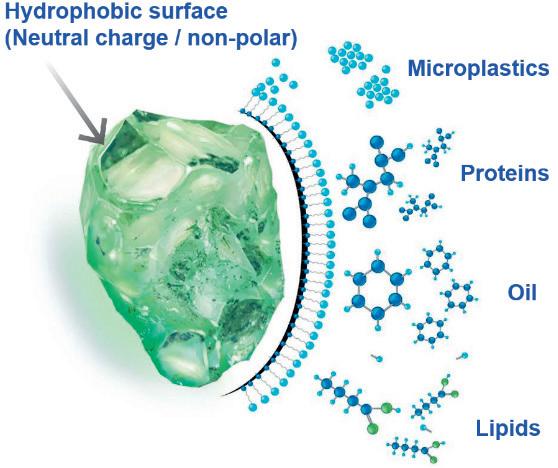
AFM®ng is the new hydrophobic filtration media from Dryden Aqua, whose biofouling resistance is further enhanced by hydrophobicity to produce 95% of 1-micron filtration performance. With its fine filtration capacity, it removes all life stages of parasites such as Cryptocaryon, providing a far more bio-secure filtration process than that of sand and other glass media. Perfect for intake water filtration, larval rearing and cultures, hatcheries, Broodstock and more recently grow-out RAS. AFM®ng has also been used to reduce off flavour, while providing premium water quality for premium growth and health. AFM®ng is already being used in aquaculture facilities worldwide. Find out more at: drydenaqua.com

AKVA Observe is a partnership between AKVA Group and Observe Technologies, offering pioneering AI-based solutions to assist in feed management operations in salmon farms. To date, these platforms are installed in all major salmon geographies across 90 to 100 site locations. Whilst there is strong market adoption, Observe is continuously developing and improving the products through research projects with world-leading institutions and developing a roadmap to cutting-edge technology. These developments will further enhance market-leading autonomous feeding products, allowing one operator to optimally feed multiple pens and sites at once.
To find out more, come and see AKVA Observe at AquaNor stand D-338, call us on 01463 221 444 or go online: akvagroup.com/akvafusion/akva-observe
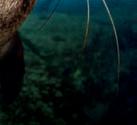
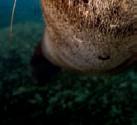
Our new generation, award-winning acoustic deterrents Comply with both Marine Scotland EPS and U.S. MMPA requirements





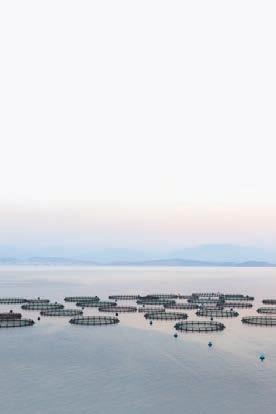



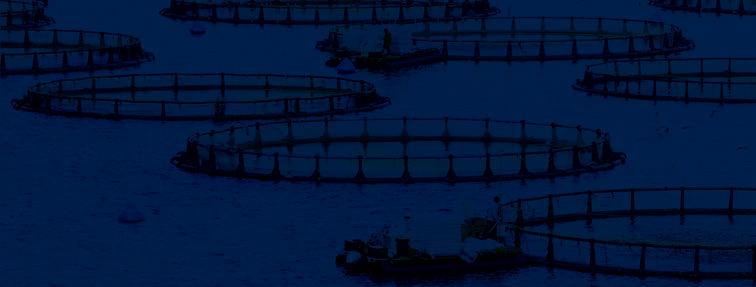

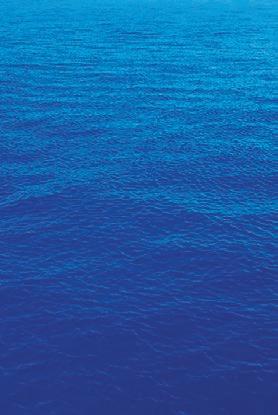
• Create conditioned avoidance so we can put far less acoustic output into the water than older barrier systems
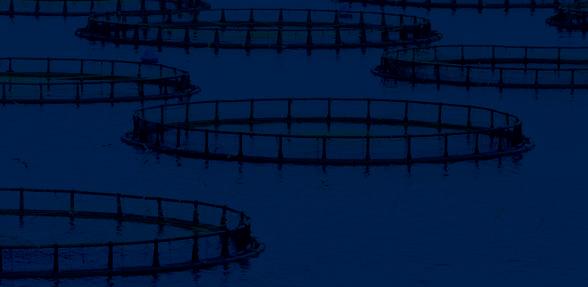
Have low duty cycles, low average volume and low frequency to help deter seals, while better safeguarding cetaceans
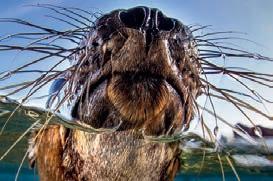
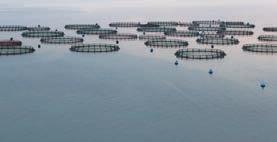
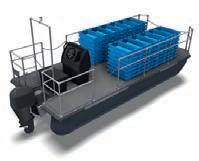
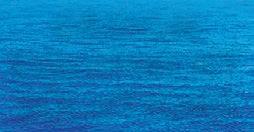


cetaceans
Your first choice for animal welfare.
Your first choice for animal welfare.
Get in touch to set up
Get in touch to set up a trial: acedeterrents@aceaquatec.com










tomorrow www.storvik.no
Fish Health


Clynav will turn the way you see PD control upside down. Clynav is like no other PD vaccine it uses Elanco’s unique DNA plasmid technology and has become the leading choice for PD protection in Norway. Clynav is delivered intra-muscularly without the need for an adjuvant.
www.elanco.co.uk CLYNAV Upside Down Ad 297x210 2021.indd
Clynav brings fresh hope in the fight against pancreatic disease Elanco UK AH Limited, First Floor, Form 2, Bartley Way, Bartley Wood Business Park, Hook RG27 9XA, United Kingdom. For further information consult the product SPC. Clynav, Elanco and the diagonal bar logo are trademarks of Use medicines responsibly www.noah.co.uk/responsible. Advice should be sought from the Medicine Prescriber. PM-UK-21-0435 04.2021 RLH
Turning conventional approaches... upside down Clynav brings fresh hope in the fight against pancreatic disease. Take back control of PD with Clynav. It will change your point of view, for good. www.elanco.co.uk
Clynav will turn the way you see PD control upside down. Clynav is like no other PD vaccine it uses Elanco’s unique DNA plasmid technology and has become the leading choice for PD protection in Norway. Clynav is delivered intra-muscularly without the need for an adjuvant.
Turning conventional approaches... upside down Take control
impex@impexagency.dkimpex@impexagency.dk impex@impexagency.dk EQUIPMENT SUPPLIEER EQUIPMENT SUPPLIEER RECIRCULATION
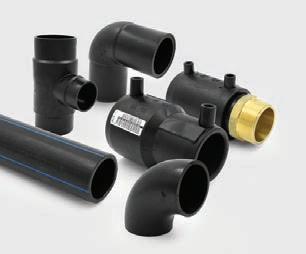



Clynav brings fresh hope in the fight against pancreatic disease Clynav contains pUK-SPDV-poly2#1 DNA plasmid coding for salmon pancreas disease virus proteins: 5.1 – 9.4 µg. Legal category in UK. For further information call Elanco Animal Health on +44(0)1256 353131 or write to: Elanco UK AH Limited, First Floor, Form 2, Bartley Way, Bartley Wood Business Park, Hook RG27 9XA, United Kingdom. For further information consult the product SPC. Clynav, Elanco and the diagonal bar logo are trademarks of Elanco or its affiliates. © 2021 Elanco or its affiliates. Use medicines responsibly www.noah.co.uk/responsible. Advice should be sought from the Medicine Prescriber. PM-UK-21-0435 04.2021 RLH


So, with Clynav, you can rest assured of excellent PD protection without the risks associated with conventional vaccines. Take back control of PD with Clynav. It will change your point of view, for good.
So, with Clynav, you can rest assured of excellent PD protection without the risks associated with conventional vaccines. Take back control of PD with Clynav. It will change your point of view, for good.
www.elanco.co.uk CLYNAV Upside Down Ad 297x210 2021.indd 1 11/05/2021 10:07
rkplast@rkplast.dk Tel +45 9758 4055 renovation and antifoulant retreatment. HATCHERIES NETS




Hatcheries Turning conventional approaches... upside down Take control

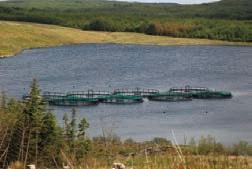
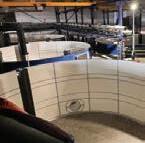

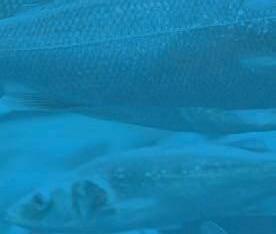

Storvik LTD Lochgilphead, Scotland Tel: +44 (0) 1546603989 info@storvik.co.uk MARINE EQUIPMENT NauticastTM & VideoRay Available for Sale or Hire from www.atlantasmarine.com T: +44 (0)1935 426 000
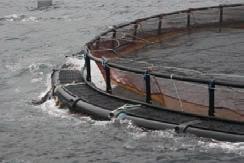
Delivering state of the art, quality products... industry... on budget, on time 06/02/2014 16:35:16


























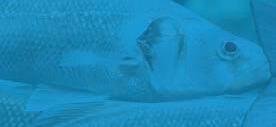






















Design • Supply • Build • Support Engineered Prefabricated Modular .com Advanced RAS Recirculation

A wide range of applications, including lobster, oyster, mussel and prawn cultivation Artificial seawater free from bacteria, algae and toxic detritus found in seawater











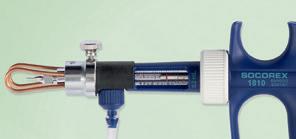





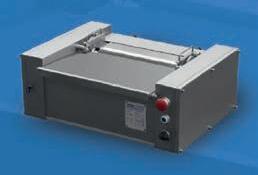
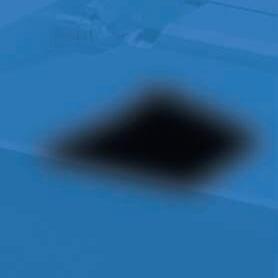


15kg and 25kg bags



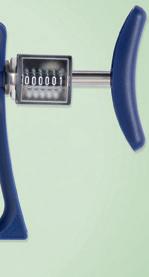

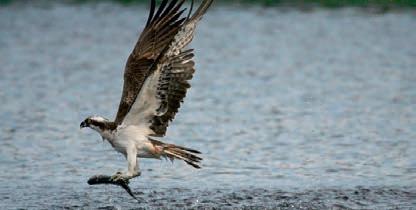
AUGUST 23
AQUA NOR 2023
www.aquanor.no/en/ Trondheim, Norway
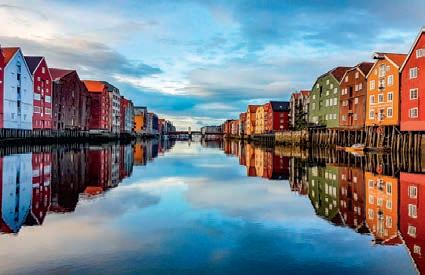
August 22-25, 2023
NOVEMBER 23
AFRAQ 2023
www.was.org/meeting/code/AFRAQ23
Lusaka, Zambia

November 13-16, 2023
JUNE 24
ASIAN PACIFIC AQUACULTURE 2024
Surabaya, Indonesia
June 11-14, 2024
Aquaculture – Driving the Blue Economy is the theme of the conference at the Grand City next year.

AUGUST 24
AQUA 2024
www.aquaeas.org - www.was.org
Copenhagen, Denmark
August 26-30, 2024
FEBRUARY 24
The theme of AQUA 2024 is BLUE FOOD, GREEN SOLUTIONS.
SEPTEMBER 23
SEAGRICULTURE USA
2023
seagriculture-usa.com
2nd International Seaweed Conference USA.
Portland, Maine, USA

September 6-7, 2023
AQUACULTURE AMERICA
www.was.org
San Antonio, Texas, USA
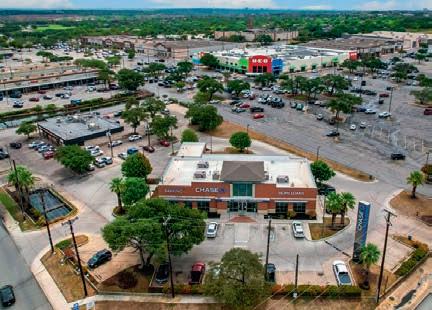
February 18-21, 2024
AUGUST 24
LATIN AMERICAN & CARIBBEAN
AQUACULTURE 2024
www.was.org
Medellin, Colombia
September 24-27, 2024
NOVEMBER 24
WORLD AQUACULTURE 2024
Oman
November 2024
MAY 24
AQUACULTURE UK 2024
AQUACULTURE EUROPE 2023
www.aquaeas.org
The European Aquaculture Society’s annual conference focuses on “Balanced Diversity in Aquaculture Development”.
Vienna, Austria

September 18-21, 2023
www.aquacultureuk.com
Aviemore will once again be the venue for this biennial trade fair and conference. It is undoubtedly the most important aquaculture exhibition held in the British Isles. The show has a tremendous following and with increased investment for 2024 it promises to reach even further across the broader aquaculture markets in both the UK and Europe.
Aviemore, United Kingdom
May 14-15, 2024
MARCH 25
AQUACULTURE 2025
New Orleans, Louisiana USA
March 6-10, 2025
JUNE 25
WORLD AQUACULTURE 2025
Entebbe, Uganda
June 2025
SEPTEMBER 25
AQUACULTURE EUROPE 2025
Valencia, Spain
September 22-25 2025
Ihope you will forgive my drifting into a bit of nostalgia. Such is the way of old campaigners. The whole idea for this article started with a phone call from an old colleague, Andy Bing, my co-founder at the Loch Duart salmon farming business. Currently fighting in the Ukraine war is a mercenary army called the Wagner Group. It’s led by a deeply unsavoury character who has a nasty turn of phrase, matched easily by equally unpleasant behaviour. His name is Yevgeny Prigozhin. His nickname is Putin’s chef because he owned and owns a number of restaurants in Moscow, and also is (or was) supposed to be close to Putin.
A good few years ago, we were supplying some of the top restaurants in Moscow when we received a call telling us that our salmon had gained the attention and approval of Putin’s chef.
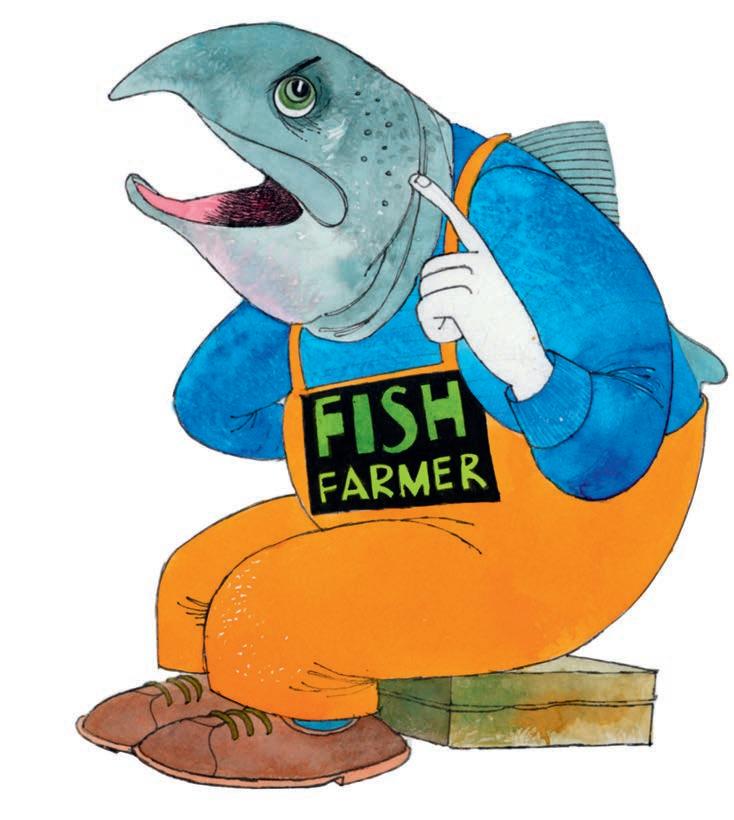
At the time, long before either the invasion of Crimea or Ukraine generally, this seemed like a good thing. We assumed naively that Putin had his own chef and thus, though obviously a cheering piece of news, it was hardly the most important thing.
While I’m not absolutely sure, it seems likely that we were supplying Mr Prigozhin. Now, I’m not so terribly pleased to have been helping this monster. It goes to show how time can so often change your perspective.
I started writing this piece shortly before Prigozhin marched into Russia from Ukraine and caused the biggest scare to Putin that has happened in his long term in charge. Even more coincidentally, I’ve been visiting an old Russian friend who managed to get out and has settled in Greece.
The whole memory of our brush with Prigozhin put me in mind of how doing business in Russia isn’t always compatible with survival. Many years ago, I visited a customer in Russia who was a Tunisian. He was at a Russian university and met his wife there. By the time I met him, he was a successful entrepreneur with restaurants, a fish and general food wholesale company, and a significant business exporting wood to Tunisia.
He got into business because he left university at a critical time around the period when Gorbachev relaxed the rules about trade. Suddenly the internal market collapsed. He was working for a timber business, which suddenly had no market. His boss offered him a load of wood if could export it to Tunisia successfully. He argued (being a sharp Tunisian) that he’d need three loads of wood as otherwise he wouldn’t have the cash to pay for the next one and he got the deal! Later he told me that one load of wood was worth US $1m, so pretty well overnight he became a millionaire.
When visiting his office, we were met by two security guards, who checked who we were and then radioed in to the main office above. They in turn allowed us up to a steel door, which was unlocked from the inside. Once inside, we were brought to another locked door, which let us into the main sales office. There were two more locked doors before we arrived at his office.
I asked him why so much security. He replied: “About six months ago, we were visited by a single gentleman with a briefcase.”
On asking the visitor what he wanted, the reply was, “I own half your business” (which he didn’t, the inference being that he demanded it). The owner said “no” and he left. The following
week the business was raided by a large number of armed police. Tunisians are used to the ways of the world and the police got little except some fish stocks and a bit of cash.
Our customer explained that the banking and admin was all in Tunisia as the wood business was based there as well. Furthermore, the fish business bought from Tunisia and elsewhere so that cash wasn’t in the country either. The only business in Russia was the sales office. The whole setup was entirely deliberate.
I asked the obvious question: “If that’s the case, why all the security?”
He replied, “All the sales data and customer base is in our computers. We’d never try to stop armed police as our people would get hurt but these doors give us enough time to wipe all the C drives in our computers.”
If ever doing business in this country seems a little tough, I always remembered how much tougher it was for him. There are many things we have to be grateful for.
Now, I’m not so terribly pleased to have been helping this monster
”




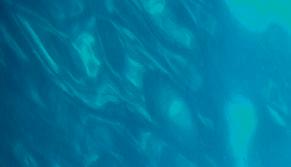




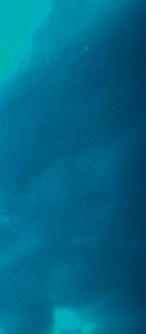















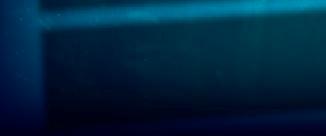

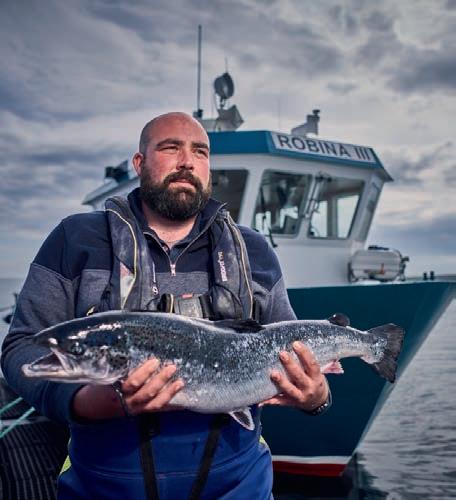













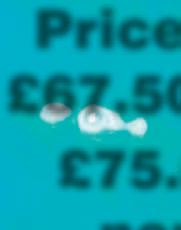
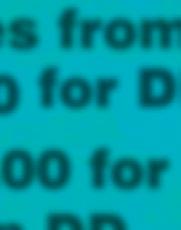


Clynav™ will turn the way you see PD control upside down.

Clynav is like no other PD vaccine - it uses Elanco’s unique DNA plasmid technology and has become the leading choice for PD protection in Norway. Clynav is delivered intra-muscularly without the need for an adjuvant.






















So, with Clynav, you can rest assured of excellent PD protection without the risks associated with conventional vaccines.
Take back control of PD with Clynav. It will change your point of view, for good.


